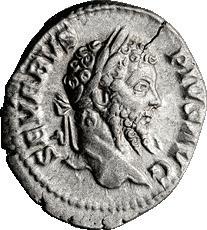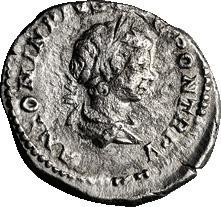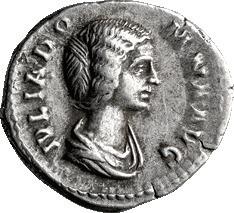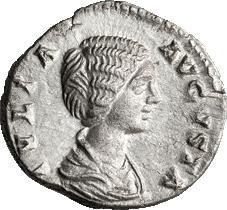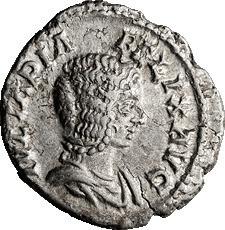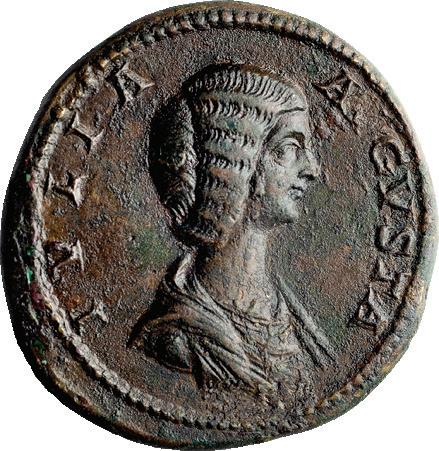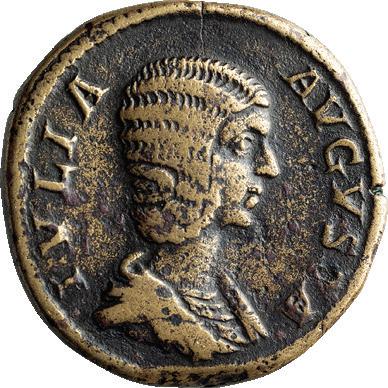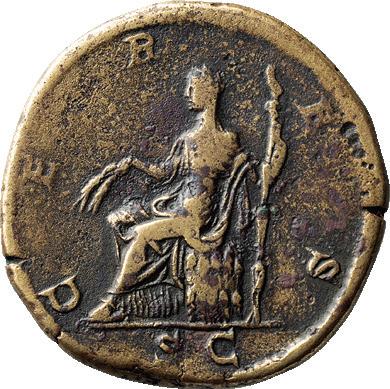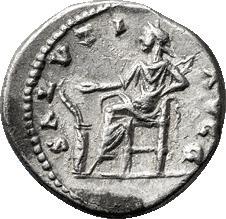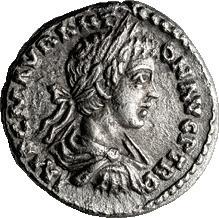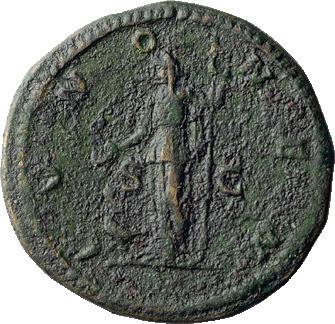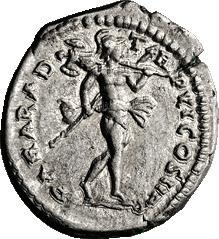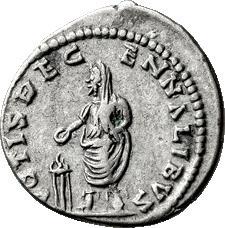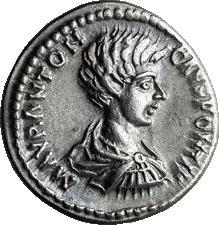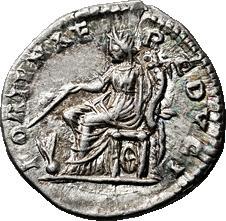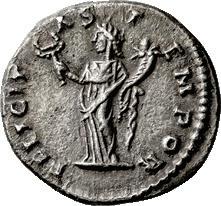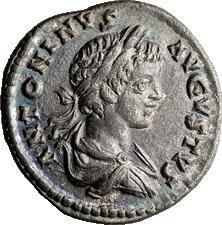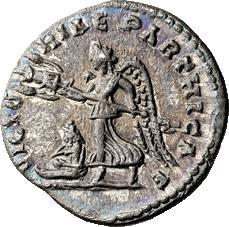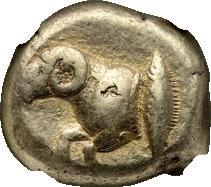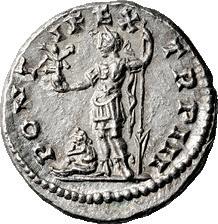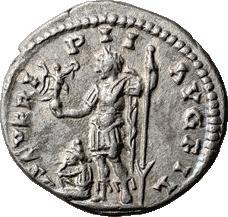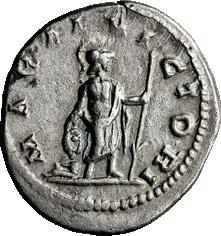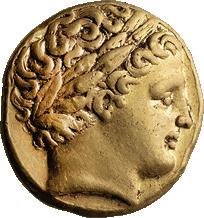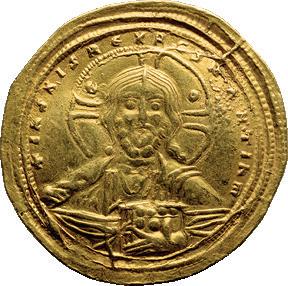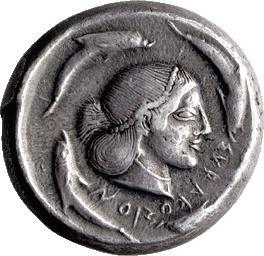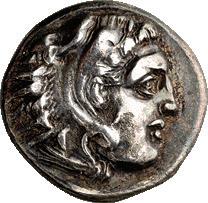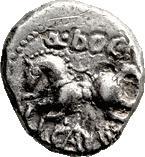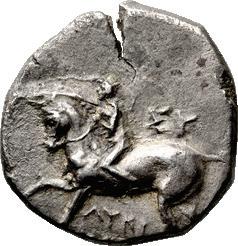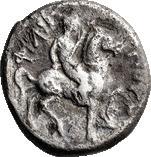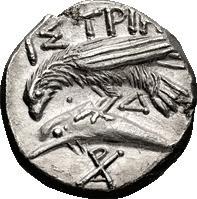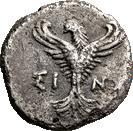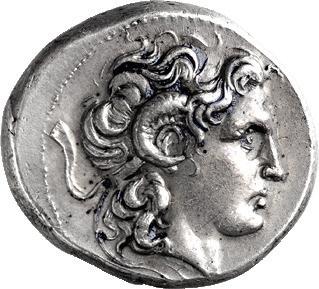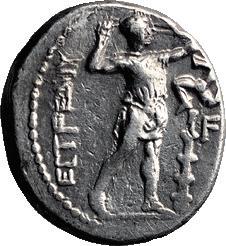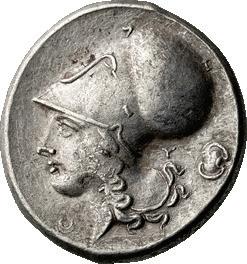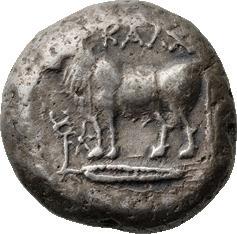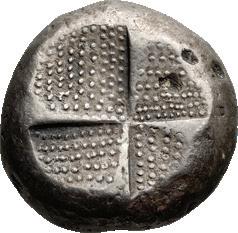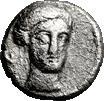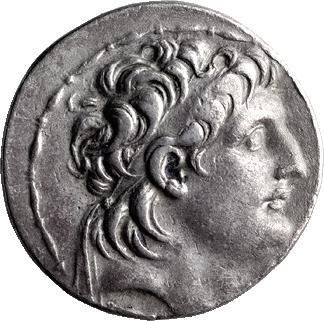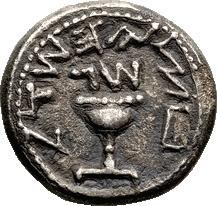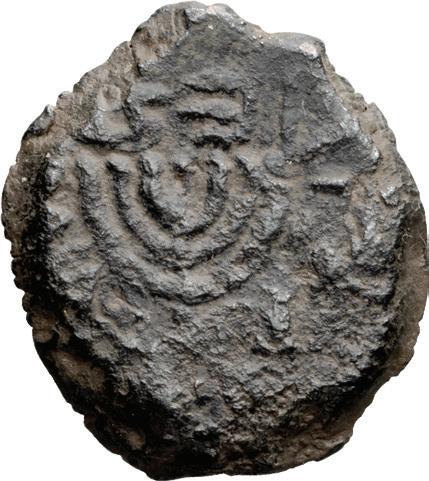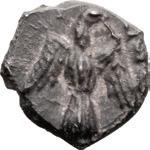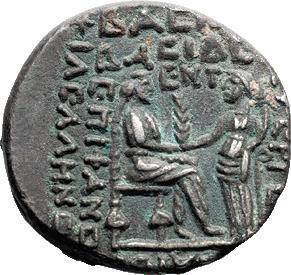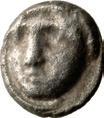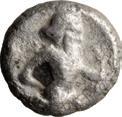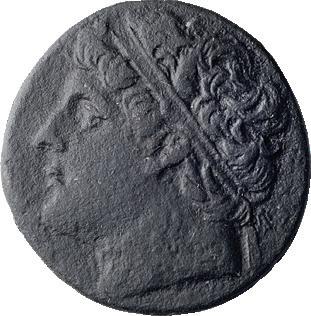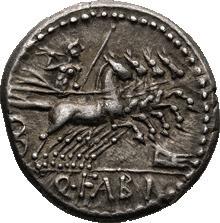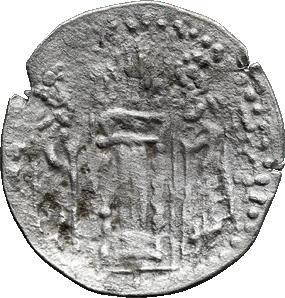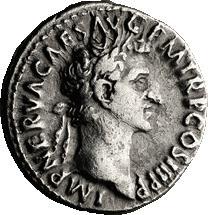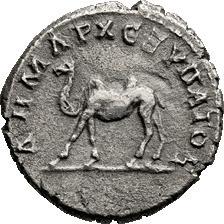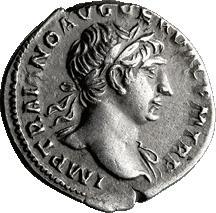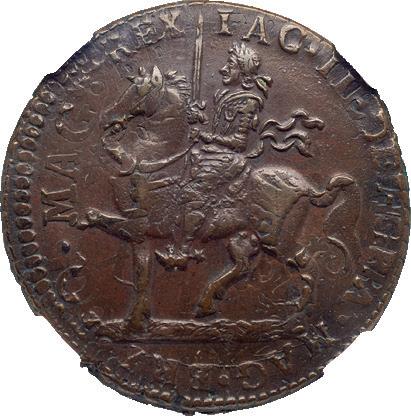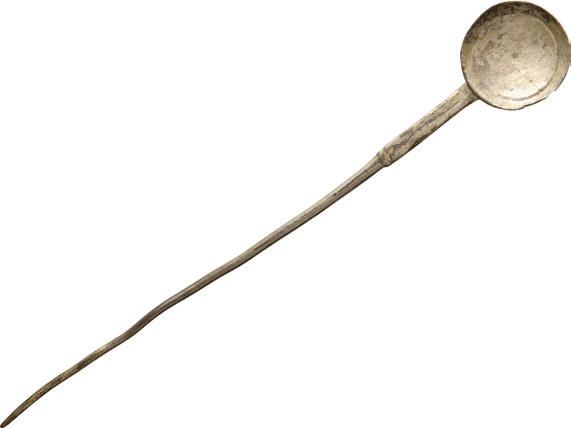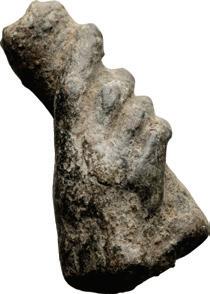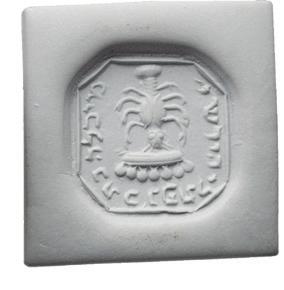231st BUY OR BID SALE
Fax: (312) 609-1309
Email: info@hjbltd.com
OVER 60 YEARS! Established 1964
Experts
Harlan J. Berk, Ancients • Aaron Berk, Ancients & Antiquities • Curtis Clay, Roman Phil Davis, Ancients • Jay Harper , Ancients • Jennifer Saban, Antiquities • Laura Wakeland, World Pablo Saban, IT Manager • Photos & Videos by Andrew Steiner & Craig Hard • Layout by Aaron Berk
Harlan J. Berk, Ltd. has presented an innovation in antiquities and numismatics for some time now. The system is simple. When you want an antiquity or coin in the sale, just bid the estimated price by phone, fax, web site, email or post. We will send you the antiquity or coin immediately with no buyer’s fees and no waiting for the closing of the sale. Any and all antiquities or coins not sold before the closing date will be sent to the highest bidder after April 29th. All items carry a lifetime guarantee of authenticity.
EXAMPLE—You bid estimate on an item valued at $100.00 and if your bid is the 1st to reach us, you will receive the item immediately at $100. If on the other hand, you bid $75.00 on the same item and are still the high bidder at the end of the sale, the item will be mailed to you after the closing. There is a 2.5% fee for credit card use. If you are ever in the area, stop in to see us! Of course, it’s best to call first. Harlan J. Berk, Ltd. reserves the right to refuse any bids.
The Curtis Clay Roman Coin Collection Lot 1-158 REGULAR LOTS START ON LOT 159
We are pleased and honored to have purchased Curtis Clay’s collection of Roman coins, amounting to over 5,000 pieces. Curtis mostly collected coins that were rare or unpublished, focusing especially on varieties unrepresented in the enormous, nearly definitive British Museum Collection. In the spotlight of Curtis’ expert knowledge and meticulous eye, seemingly common coins were recognized as extreme rarities. What we are offering today is another series of sales that will appear over the next two years or more, representing the cream of his collection. When completed, a book will be published of these coins, entitled “The Highlights of the Curtis Clay Collection”. Other coins from the collection will be offered in online sales. All coins will be labeled “Curtis Clay Collection”, and some of them will be included in the Highlights book as well. The coins offered in our Buy or Bid Sales will be in chronological order, organized by Curtis himself. Most lots will include Curtis’ original tickets, with provenance information and in some cases more extensive historical or numismatic notes than space in the catalogue allows. These sales will represent a chance for fortunate and astute collectors of Roman coins to fill their own collections with these special pieces. A rare opportunity!
1. SEPTIMIUS SEVERUS; 193-211 AD, Rome, 194 AD, Denarius, 3.32g. RSC-690b, citing Gnecchi Coll. Obv: . IMP II, Head of Septimius Severus r. Rx: VICT AVG TR P II COS II P [P], Victory advancing r., holding wreath and palm. Ex Curtis L. Clay Collection; acquired from J. Kern, May 1997. IMP II is a rare title on Rome-mint coins of Septimius Severus. MS 325
2. SEPTIMIUS SEVERUS; Died 211 AD, Rome, 194 AD, Denarius, 3.32g. RSC-688b, citing Vienna. Obv: . IMP III, Head of Septimius Severus laureate r. Rx: VICT AVG TR P II COS II P P, Victory advancing l., holding wreath and palm. Ex Curtis L. Clay Collection; acquired from E. Alexander, Dec. 1994. VF 150
3. SEPTIMIUS SEVERUS; 193-211 AD, Rome, 194 AD, Denarius, 3.26g. BMC-p. 33. Obv: . IMP [II]II, Laureate head of Septimius Severus r. Rx: P M TR P II - COS II P P, Emperor in military dress standing l., holding globe and reversed spear. Ex Curtis L. Clay Collection. Rare: only one specimen in Reka Devnia hoard. Toned Nearly MS 400
4. SEPTIMIUS SEVERUS; 193-211 AD, Rome, 194 AD, Denarius, 3.61g. BMC-p. 33. Obv: L SEPT SEV PERT - AVG IMP IIII, Head laureate r. Rx: P M [T]R P II - COS II P P, Emperor in military dress standing l., holding globe and reversed spear. Ex Curtis L. Clay Collection; acquired from CNG. Rare: only one specimen in Reka Devnia hoard. Toned MS 400
5. SEPTIMIUS SEVERUS; 193-211 AD, Rome, 194 AD, Denarius, 4.43g. BM-82. Obv: L SEPT SEV PE - RT AVG IMP III[I], Head laureate r. Rx: MA - RS PA - CATOR, Helmeted Mars standing l., naked except for fold of cloak over l. shoulder, holding branch and reversed spear. Ex Curtis L. Clay Collection. Scarce; 9 specimens in Reka Devnia hoard. Overweight example. Toned MS 425
6. SEPTIMIUS SEVERUS; 193-211 AD, Rome, 196-7 AD, Denarius, 3.42g. BM-174. Obv: . IMP VIII, Bust laureate r., with fold of cloak on front shoulder and probably also behind neck. Rx: [SE]CVRITAS - PVBLIC[A], Securitas seated l., holding globe in r. hand and resting l. arm on side of throne. Ex Curtis L. Clay Collection; acquired from Singer, Dec. 1994. Rare bust type, possibly unpublished, with fold of cloak on the emperor’s front shoulder. VF 250
7. SEPTIMIUS SEVERUS; 193-211 AD, 197 AD, Denarius, 3.31g. BMC-p. 47, *. Obv: [L SEPT SEV PERT] - AVG IMP VIII, Head laureate r. Rx:[H]ERCVLI - DEFENS, Hercules standing r., naked except for lionskin over l. shoulder, resting r. hand on club
behind him, and holding bow before him with l. hand. Ex Curtis L. Clay Collection; acquired from J. Kern, June 1997. Scarce; only 3 specimens in Reka Devnia hoard. The second edition of BMC V wrongly assigns this type dated IMP VIII to the New Style Eastern mint only; but our specimen, and others in Rome (Gnecchi), Copenhagen, Oxford, and Budapest, all clearly show IMP VIII not VIIII and are in Roman style. Small flan. Near MS 125
8. SEPTIMIUS SEVERUS; 193-211 AD, Rome, 197 AD, Denarius, 2.83g. BM-246, pl. 11.9 (ex Plevna hoard). Obv: . IMP X, Head laureate r. Rx: HERCVLI - DEFENS, Hercules standing r. with lionskin over shoulder, and holding club and bow. Ex Curtis L. Clay Collection; acquired from Harlan Berk, Oct. 1995. A rare type with date IMP X; absent from the Reka Devnia hoard, and not in the Paris collection in Cohen’s day. aEF 225
9. SEPTIMIUS SEVERUS; 193-211 AD, Rome, 199 AD, Denarius, 2.83g. BMC-p. 182, 151 note. Obv: L SEPT SEV AVG IMP - XI PART MAX, Head laureate r. Rx: P M TR P VII - COS II P P, Bonus Eventus standing l., sacrificing out of patera over altar and holding wheat ears. Ex Curtis L. Clay Collection; ex Elsen 36, Sept. 1994, lot 315. Rare: this type not in Reka Devnia hoard. MS 240 New Variant
10. SEPTIMIUS SEVERUS; 193-211 AD, Rome, 204 AD, Denarius, 3.57g. BM-335, pl. 35.11. Obv: [SEV]ERVS - PIVS AVG, Bust laureate, draped r. Rx: INDVLGENTIA AVGG around, IN CARTH in exergue, Dea Caelestis sitting sideways on lion, her head turned r., holding thunderbolt and transverse scepter; behind and below her, water issuing from a rock. Ex Curtis L. Clay Collection. Apparently unpublished with this bust type. On denarii with this reverse type, Septimius Severus’ bust type was normally just head laureate, while Caracalla’s bust type was normally bust laureate and draped, as for example on BM pl. 34.3. On our new variant, probably by engraver’s error, Septimius Severus was given the draped bust type that was meant to be used only by Caracalla. MS 500
11. SEPTIMIUS SEVERUS; 193-211 AD, Rome, 207 AD, Denarius, 2.99g. BM-533, pl. 41.12. Obv: SEVERVS - PIVS AVG, Head laureate r. Rx: P M TR P XV - COS III P P, Annona standing l., holding two wheat ears above modius on ground and cornucopia. Ex Curtis L. Clay Collection; acquired from Rauch. Rare with date TR P XV; none in Reka Devnia hoard. MS 400
12. SEPTIMIUS SEVERUS; 193-211 AD, Rome, 208 AD, Denarius, 3.26g. BMC-p. 269, *, citing C-518 (Paris). Obv: SEVERVS - PIVS AVG, Head laureate r. Rx: P M TR P XVI - COS III P P, Septimius holding spear on horse prancing r. Ex Curtis L. Clay Collection. Rare; none with date TR P XVI in Reka Devnia hoard. Some flan cracks. Virtually MS 400
Emperor Charging on Horseback
13. SEPTIMIUS SEVERUS; 193-211 AD, Rome, 209 AD, Denarius, 3.03g. BMC-p. 357, *. Obv: SEVERVS - PIVS AVG, Head laureate r. Rx: P M TR P XVII COS III P P, Septimius on horse charging l., about to spear enemy falling to ground below. Ex Curtis L. Clay Collection; acquired from Harlan Berk, Aug. 1996. MS 450 Overstruck
14. SEPTIMIUS SEVERUS FLIP STRIKE; 193-211 AD, Rome, 197 AD, Denarius, 3.36g. Cf. BMC-234, pl. 11.3. Obv: . [IMP] VIIII, Head of Septimius laureate r. Rx: PROFE. , Septimius on horseback r., before horse emperor’s wreath ties and hair curls upside down, remaining from the first strike with the obverse die. Ex Curtis L. Clay Collection; acquired from F. Shore, May 1997. EF 225
15. SEPTIMIUS SEVERUS; 193-211 AD, Rome, 193 AD, Sestertius, 18.87g. BM-475, pl. 20.5. Obv: IMP CAES L SEPT - SEV PERT A[VG], Head laureate r. Rx: SAECVLO
FR[VGIFER]O TR P COS around, S - C across field, Radiate African deity standing l., holding caduceus flanked by two wheat ears and transverse trident. Ex Curtis L. Clay Collection; acquired from Monk, April 1999. VF / F.....................................250
Very Rare
16. SEPTIMIUS SEVERUS; 193-211 AD, Rome, 194 AD, Sestertius, 18.22g. Cf.BM-509, pl. 22.3. Obv: [L] SEPT SEV PE - RT AVG IMP II, Head laureate r. Rx: [VICT AV] - G [TR P] II COS II around, S - C across lower field, Victory advancing r. holding wreath and palm. Ex Curtis L. Clay Collection; acquired by exchange from Doug Smith, April 1996. A very rare combination of two titles on sestertii of Septimius Severus: IMP II on obverse, but on reverse without P P (not yet awarded). VF / F 325
Ex Friedrich Collection
17. SEPTIMIUS SEVERUS; 193-211 AD, Rome, 194 AD, Sestertius, 28.60g. BMC-p. 125, *. Obv: L SEPT SEV PE - RT AVG IMP II, Head laureate r. Rx: DIS AVSPICIB TR P II - COS II P P around, S - C across lower field, Hercules holding club and lionskin, and Bacchus emptying cup to panther at his feet and holding thyrsus, both standing l., side by side. Ex Curtis L. Clay Collection; ex NAC, 2 April 1995, Friedrich Collection of Roman Imperial Sestertii, lot 1642. IMP II is a rare title on Severan sestertii. aEF 1400
18. SEPTIMIUS SEVERUS; 193-211 AD, Rome, 196 AD, Sestertius, 18.93g. Bust var. of BMC-p. 146, *. Obv: L SEPT SEV PERT - AVG IMP VIII, Bust laureate, cuirassed r. Rx: P - M TR P - IIII COS II P P on l. and r., S - C across field, Fortuna standing l., holding rudder on globe and cornucopia, with wheel on ground behind her. Ex Curtis L. Clay Collection; acquired from Gorny. VF 385
19. SEPTIMIUS SEVERUS; 193-211 AD, Rome, 196-7 AD, Sestertius, 20.94g. Cf. BM-605, pl. 25.9. Obv: L SEPT SEV PERT - AVG IMP VIII, Bust laureate, draped, cuirassed r. Rx: VOTA PVBLICA around, S - C across field, Septimius Severus and smaller Caracalla sacrifice together over tripod altar. Ex Curtis L. Clay Collection; ex NAC, 2 April 1995, Friedrich Collection of Roman Imperial Sestertii, lot 1659. A rare sestertius type, struck from only three reverse dies. Area of flat striking on reverse. EF 1100
20. SEPTIMIUS SEVERUS; 193-211 AD, Rome, 197 AD, Sestertius, 30.43g. Cf. BMC-p. 153. Obv: L SEPT SEV PERT - AVG IMP VIIII, Bust laureate, draped, cuirassed r. Rx: PROFECT - IO - AVG on l. and r., S C in exergue, Septimius holding spear on horse pacing r. Ex Curtis L. Clay Collection; ex Emporium Hamburg 32, Oct. 1994, lot 174. A heavy specimen on a thick, round flan; with ancient hole above portrait. aVF 775
21. SEPTIMIUS SEVERUS; 193-211 AD, Rome, 197 AD, Sestertius, 23.09g. BMC-p.153, citing Wiczay. Obv: L SEPT SEV PERT - AVG IMP VIIII, Head laureate r. Rx: P M TR P V COS II P P around, S - C across field, Bonus Eventus standing l., holding patera over altar at his feet, and with two wheat ears in lowered l. hand. Ex Curtis L. Clay Collection; acquired from Dollinger, Vienna, March 1994. VF 325 Unique
22. SEPTIMIUS SEVERUS; 193-211 AD, Rome, 198 AD, Sestertius, 22.12g. Unpublished middle-period sestertius type. Obv: L SEPT SEV AVG - IMP XI PART MAX, Bust laureate, draped, cuirassed r. Rx: VICT PARTHICAE around (legend weak), S - C across field, Victory advancing l., holding wreath and trophy, at her feet captive seated l. with arms tied behind back. Ex Curtis L. Clay Collection; ex Empire Coins, March 1995. Apparently unique, and only the second recorded sestertius of Septimius Severus that uses this middle-period obverse legend ending IMP XI PART MAX. For the first such coin, with reverse legend VICTORIAE AVGG FEL S - C, see BMC-p. 315 (confirmation required, since Cohen-722 cites no source). Green patina on obverse; isolated rough surfaces on reverse. aVF 1500 Medallic Sestertius
23. SEPTIMIUS SEVERUS; 193-211 AD, Rome, 207 AD, Medallic Sestertius, 30.46g. Cohen-246 citing Welzl von Wellenheim, 400 francs. Obv: L SEPTIMIVS SE - VERVS PIVS AVG, Bust laureate, draped, cuirassed r. Rx: IOVI in exergue, SOSPI - TA - TORI around, S - C across field, Serapis standing facing in rectangular niche, extending r. hand and holding scepter in l. hand. Ex Curtis L. Clay Collection; acquired from an H. D. Rauch sale. Probably unique, since this specimen acquired from a Rauch auction by Curtis Clay seems very likely to be identical with the Welzl von Wellenheim example, lot 12051 in the sale of Welzl’s Roman coins in Vienna in October 1847, and described in the auction catalogue as being “a bronze medallion, unpublished and in good condition (bien conserve)”. The same IOVI SOSPITATORI reverse die was also used to strike a medallic sestertius of Geta as Caesar, BM-840, pl. 50.9, 44.12g. Some obverse corrosion. aVF 5000 24. SEPTIMIUS SEVERUS; 193-211 AD, Rome, 194 AD, Dupondius, 16.44g. BM523, pl. 22.10. Obv: L SEPT SEV PERT - AVG IMP IIII, Head radiate r. Rx: AFRICA around (legend weak), S - [C] across field, Africa standing r. wearing elephant-skin headdress, carrying wheat ears in fold of robe before her breast, and with lion standing r. at her feet. Ex Curtis L. Clay Collection; acquired from Classical Cash, MBS 1, May 1995, lot 712 (not ill.). aVF / F 200
25. SEPTIMIUS SEVERUS; 193-211 AD, Rome, 196 AD, Dupondius, 11.59g. Glasgow-148, pl. 10 (same dies). Obv: L SEPT SEV PERT - AVG IMP VIII, Head radiate r. Rx: P M TR P IIII - COS II - P P on l. and r., S - C across field, Victory advancing l., holding wreath and palm. Ex Curtis L. Clay Collection; ex Finarte 1004, 20 March 1997, part of lot 219. A rare type on middle bronzes. VF 550
26. SEPTIMIUS SEVERUS; 193-211 AD, Rome, 194 AD, As, 11.98g. Cf. BM-503, pl. 21.11. Obv: [L SEPT SEV AVG] PE - RT AVG IMP II, Head laureate r. Rx: VICT AVG TR P [II C]OS II around, S - C across field, Victory advancing r., holding wreath and palm. Ex Curtis L. Clay Collection; ex Coin Galleries MBS, 10 April 1996, lot 349. Struck on a small flan. EF 500 Ex Niggeler Collection, Ex M&M Basel 1, June 1934
27. SEPTIMIUS SEVERUS; 193-211 AD, Rome, 196 AD, As, 10.53g. BM-594, pl. 26.3 (same dies). Obv: [L SE]PT SEV PERT - AVG IMP V[III], Head laureate r. Rx: [P] M TR P IIII - COS II P - P on l. and r., Victory advancing l., holding wreath and palm, S - C across field. Ex Curtis L. Clay Collection; purchased from M&M Basel, July 1969, from Niggeler coins that had been excluded from the M&M/Leu auctions of that collection. Niggeler himself very likely purchased the coin from M&M Basel 1, June 1934, lot 1640. A rare type on middle bronzes. aEF 800
28. SEPTIMIUS SEVERUS; 193-211 AD, Rome, 206 AD, As, 8.55g. BMC-p.346. Obv: SEVERVS - PIVS AVG, Bust laureate, draped, cuirassed r. Rx: P M TR P XIIII - COS III P P on l. and r., S - C across field, Annona standing l., holding wheat ears over modius at her feet and cornucopia. Ex Curtis L. Clay Collection; purchased from
a Lanz auction. Rare: only a couple of specimens known, all from the same pair of dies. MS 1750
29. SEPTIMIUS SEVERUS; 193-211 AD, Rome, 206 AD, As, 9.96g. BM-814, pl. 49.4 and footnote. Obv: SEVERVS - PIVS AVG, Bust laureate, draped, cuirassed r. Rx: VICTORIA AVGG above and on r., S C in lower r. field, Victory holding whip and reins, standing r. in biga of horses prancing r. Ex Curtis L. Clay Collection; purchased from NAC-Spink/Taisei, 16 Nov. 1994, Steinberg Coll., lot 566. Obverse in high relief. EF 1250
30. SEPTIMIUS SEVERUS; 193-211 AD, Rome, As, 8.72g. Cf. BMC-p. 346, citing C-481 (Copenhagen). Obv: SEV[E]RVS - PIVS AVG, Bust laureate, draped, cuirassed r. Rx: P M TR P XIIII - CO[S II]I P P, S - C in exergue, Equestrian statue of emperor l., holding spear and statuette of Victory. Ex Curtis L. Clay Collection; acquired in April 1997 from a group of generally poor ancient coins stated to have been purchased in Turkey. Apparently only the second known specimen of this Equestrian statue type on an As of Septimius Severus dated TR P XIIII = 206 AD. The other known specimen, from the same pair of dies, is in the Copenhagen collection. F 300
31. SEPTIMIUS SEVERUS; 193-211 AD, Rome, 207 AD, As, 10.89g. BM-852, pl. 51.8. Obv: SEVERVS - PIVS AVG, Bust laureate r., with fold of aegis on front shoulder and behind neck. Rx: P M TR P XV - COS III P P on l. and r., S C in exergue, Equestrian statue of Septimius Severus l., holding spear and statuette of Victory. Ex Curtis L. Clay Collection; ex Spink 110, Oct. 1995, P.V. Hill Coll., part lot 284. aEF 1250
32. SEPTIMIUS SEVERUS; 193-211 AD, Rome, 211 AD, As, 9.91g. BM-262, pl. 61.8. Obv: SEVERVS PIVS - AVG BRIT, Head laureate r. Rx: FORT RED P M TR P XIX COS III [P P] around, S C in exergue, Fortuna seated l., holding rudder on globe and cornucopia. Ex Curtis L. Clay Collection. Slightly porous surfaces. aEF 400
33. JULIA DOMNA; Rome, 215 AD, Antoninianus, 3.77g. Obv: IVLIA PIA - FELIX AVG, Bust draped r. wearing stephane, with hair in large bun behind head but without crescent below shoulders. Rs: LVNA LVCIFERA around, Diana standing in biga of horses prancing l., with their back legs bent, and without ground line. Ex Curtis L. Clay Collection; acquired from Wayne Sayles, July 2006. Very rare: apparently only the third known Julia Domna antoninianus that combines this reverse type with the large bun and the omission of the crescent in the obverse portrait. See the die study of this issue of antoniniani by V. Genevieve and J.-M. Doyen, Bulletin du Cercle d’Etudes Numismatiques 48, no. 1, 2011. Porous surfaces. EF / VF 350
34. JULIA DOMNA; Rome, 215 AD, Antoninianus, 5.06g. BM-20, pl. 68.1. Obv: IVLIA PIA - FELIX AVG, Bust draped r., wearing stephane, with small knot in hair behind neck, without crescent below bust. Rx: VENERI GENETRICI around, Venus standing l., extending r. hand and holding vertical scepter in l. Ex Curtis L. Clay Collection; acquired from Ancient Auction House, eBay, 19 Oct. 2007. Scarce without crescent below bust on obverse. MS 650
35. JULIA DOMNA; Rome, 215 AD, Antoninianus, 4.07g. BM-20, pl. 68.1. Obv: IVLIA PIA - FELIX AVG, Bust draped r., wearing stephane, with small knot in hair behind neck, without crescent below bust. Rx: VENERI GE - NETRICI around, Venus standing l., extending r. hand and holding vertical scepter in l. Ex Curtis L. Clay Collection. Scarce without crescent below bust on obverse. MS 700 FDC
36. JULIA DOMNA; Rome, Antoninianus, 4.84g. Cf. BM-20, pl. 68.1. Obv: IVLIA PIA - FELIX AVG, Bust draped r. on crescent, wearing stephane, hair in small, low knot at back. Rx: VENERI GENETRICI around, Venus standing l., extending r. hand and holding scepter in l. Ex Curtis L. Clay Collection; ex CNG E84, 3 March 2004, lot 165. FDC 750
37. JULIA DOMNA; Rome, Antoninianus, 5.00g. Cf. BM-20, pl. 68.1. Obv: IVLIA PIA FELIX AVG, Bust draped r. on crescent, wearing stephane, hair in small low knot behind. Rx: VENERI GE - NETRICI around, Venus standing l., extending r. hand and holding scepter in l. Ex Curtis L. Clay Collection; acquired from Lanz, eBay, 17 June 2012. Toned EF 600 Unique
38. JULIA DOMNA; Rome, 215 AD, Antoninianus, 4.96g. Cf. BM-23, pl.68.3. Obv: IVLIA PIA - FELIX AVG, Bust draped r. on crescent, wearing stephane, and with hair behind in small, low knot. Rx: VENERI GENETRICI around, Venus seated l., extending r. hand and holding vertical scepter in l. Ex Curtis L. Clay Collection; acquired from Harlan Berk, Dec. 1998. A possibly unique variant of BM-23: our coin has its reverse legend in the dative case, VENERI GENETRICI, rather than in the regular nominative case, VENVS GENETRIX. Choice MS 1150 Rare Variant
39. JULIA DOMNA; Rome, 217 AD, Antoninianus, 4.99g. BM-8, pl. 67.10. Obv: IVLIA PIA FELIX AVG, Bust draped r. on crescent, wearing stephane, and with hair behind in small, low knot. Rx: LVNA LVCIFERA around, Luna/Diana standing l. in biga of horses, with crescent on her head and fold of drapery in circle around head, holding the horses’ reins with her r. hand. Her two horses leap l., with their forelegs in the air, but their hind legs virtually straight and descending to a partial groundline. Ex Curtis L. Clay Collection; ex Rauch 58/III, Oct. 1996, lot 424. Early in 217 AD the mint of Rome made small changes to each of Caracalla’s current reverse types, most of which helpfully bore his tribunician number (TR P XVIII-XX), so can be dated to particular years. The contemporaneous Roman coinage of Julia Domna of course lacks tribunician dates, but does include two slightly different varieties of her LVNA LVCIFERA Biga type, a change which probably corresponds to the minor changes made in Caracalla’s types early in 217 AD. So Domna’s LVNA LVCIFERA Biga type too should be assigned to 217 AD, the first variant (horses’ hind legs bent, no ground line), to early 217 AD, the second variant (horses’ hind legs straighter, and with a groundline beneath them) to a little later in 217 AD. The antoninianus in this lot of the sale shows the second variant of the type, and also omits the usual chariot wheel that appears behind the horses’ back legs on the reverse, a detail which the die engraver may have forgotten, or which may have been removed by wear on the die. MS 900 Engraver’s Error
40. JULIA DOMNA; Rome, 193 AD, Denarius, 3.26g. Cf. BM-50, pl. 6.14. Obv: IVLI (sic) DO - MNA AVG, Bust draped r. Rx: VENER - I - V - ICTR on l. and r., Venus standing l., leaning on column, holding apple and palm branch. Ex Curtis L. Clay Collection; acquired from J. Kern, April 2000. With engraver’s error in obverse legend; he left out the A in IVLIA. Small flan. MS 550 Engraver’s Error
41. JULIA DOMNA, SPELLING ERROR; Rome, 193 AD, Denarius, 2.74g. Cf.
BMC-50, pl. 6.14. Obv: IVLIA DO - MNA A[VG], Bust draped r. Rx: [VEN]ER - IVICRT (sic) on l. and r., Venus standing r., leaning on column, legs crossed, holding apple and palm branch. Ex Curtis L. Clay Collection; acquired from Forum Ancient Coins, April 2008; earlier in the collection of Martin Griffiths. With rare engraver’s error in reverse legend, VICRT for VICTR; not in the standard catalogues. aEF 400
42. JULIA DOMNA, BUT REV. LEGEND ENDS WITH SEPTIMIUS’ COS; Rome, 193 AD, Denarius, 3.28g. Obv: IVLIA DO - MNA AVG, Bust draped r. Rx: VENERI - VI COS (sic) on l. and r., Venus standing r., leaning on column, holding apple and palm branch. Ex Curtis L. Clay Collection; acquired from Dionysos, eBay, 4 Feb. 2012. The reverse legend on this coin, meant to be VENERI VICTR, seems to contain an interesting error: it starts correctly with VENERI VI or VENERI VIC, but then adds COS or just OS, as though the coin were of Septimius Severus in 193, with reverse legend ending COS, rather than of Julia Domna. The engraver’s error provides welcome confirmation that Domna’s Roman coinage probably began before the end of 193, while Septimius was still only COS and not yet COS II. gVF 450 Engraver's Error
43. JULIA DOMNA, BUT REV. LEGEND ENDS WITH SEPTIMIUS’ COS; Rome, 193 AD, Denarius, 3.01g. Obv: IVLIA DO - MNA AVG, Bust draped r. Rx: VENERI - VI COS (sic) on l. and r., Venus standing r., leaning on column, legs crossed, holding apple and palm branch. Ex Curtis L. Clay Collection. A second specimen, from the same dies as the preceding lot. The reverse legend on this coin, meant to be VENERI VICTR, seems to contain an interesting error: it starts correctly with VENERI VI or VENERI VIC, but then adds COS or just OS, as though the coin were of Septimius Severus in 193, with reverse legend ending COS, rather than of Julia Domna. This engraver’s error provides welcome confirmation that Domna’s Roman coinage probably began before the end of 193, while Septimius was still only COS and not yet COS II. EF 450
44. JULIA DOMNA; Rome, Denarius, 3.00g. BM-49, pl. 28.5. Obv: [I]VLIAAVGVSTA, Bust draped r. Rx: MA - TER - DEVM on l. and r., Cybele, towered, standing l., holding branch and drum; at her feet, lion standing l. Ex Curtis L. Clay Collection; acquired from Ancient Auction House, eBay, 13 July 2006. A rare and unusual reverse type; only two specimens in Reka Devnia hoard. Virtually MS 450
45. JULIA DOMNA; Rome, 196 AD, Denarius, 3.64g. BM-57, pl. 28.9 (same rev. die). Obv: IVLIA - AVGVSTA, Bust draped r. Rx: [M]ATRI - [CASTR] - OR - VM around, Julia standing l. before two standards, with her r. hand sacrificing from patera over altar at her feet, while her l. hand holds an open incense box. Ex Curtis L. Clay Collection. A scarce and unusual reverse type; only four specimens in Reka Devnia hoard. aEF 400
46. JULIA DOMNA; Rome, 198-202 AD, Denarius, 3.24g. Cf. BM-70, pl. 28.15. Obv: IVLIA - AVGVSTA, Bust draped r. Rx: PIETAS - PVBLICA on l. and r., Pietas, veiled, standing l., raising both hands above lighted and garlanded altar at her feet. Ex Curtis L. Clay Collection; acquired from Lanz, eBay, 13 April 2010. The reverse legend on this denarius seems to show signs of having been re-engraved at the mint. If this idea is correct, perhaps it was just a matter of slightly increasing the size of the letters, which as rendered by the original engraver were thought to be too small. MS 675 Rare Reverse
47. JULIA DOMNA; Rome, Denarius, 3.34g. BM-p. 161, *, citing C-75 (Paris). Obv: IVLIA - AVGVSTA, Bust draped r. Rx: HILARI - TAS on l. and r., Hilaritas standing l., holding patera and long palm branch. Ex Curtis L. Clay Collection; acquired from Harlan Berk, Oct. 1996. A rare reverse type; only one specimen in Reka Devnia hoard. Virtually MS 550
48. JULIA DOMNA; Rome, 210-211 AD, Denarius, 3.35g. Cf. BM-787, pl. 47.8. Obv: IVLIA - AVGVSTA, Bust draped r. Rx: HILA - RITAS on l. and r., Hilaritas standing l., holding long palm and cornucopia. Ex Curtis L. Clay Collection; ex Rauch 52I, April 1994, lot 385. A scarce type in this late style. The same type but with an earlier portrait had already been used for Julia Domna in 196 AD, for example on the denarius BMC-pl. 27.16. Choice EF 500
49. JULIA DOMNA; Rome, 210-211 AD, Denarius, 3.12g. Obv: IVLIA - AVGVSTA, Bust draped r. Rx: HILARITAS around, Hilaritas standing l., holding long palm and cornucopia. Ex Curtis L. Clay Collection; acquired from Lanz, eBay, 10 March 2014. Denarii of this type were struck twice for Julia Domna, first in 196 AD (e.g. BMCpl. 27.16, common), and then in 210-211 AD, with a later portrait and considerably scarcer, like this coin and the preceding lot in the current sale. Toned EF 350
50. JULIA DOMNA AND CARACALLA; Rome, 202 AD, Denarius, 2.67g. BM-9, pl. 27.5. Obv: IVLIA - AVGVSTA, Her bust draped r. Rx: ANTONIN PIVS - [AVG] PON TR P V on l. and r., Caracalla’s bust laureate, draped r. Ex Curtis L. Clay Collection, acquired from Triskeles E18, 13 Dec. 2016, lot 376. Rare reverse type not in Reka Devnia hoard, showing portrait of Caracalla with dated legend (TR P V). EF / VF 550 Mule
51. JULIA DOMNA MULE; Rome, 208 AD, Denarius, 2.74g. Cohen-162, citing M. Kolb; RIC-600 and RSC-162, both citing Cohen; apparently left out by BMC. Obv: IVLIA - AVGVSTA, Bust draped r. Rx: P M TR P XVI - COS III P P on l. and r., Concordia or Clementia seated l., holding patera and nearly vertical scepter. Ex Curtis L. Clay Collection; acquired from Demos 5, 30 Oct. 2021, lot 585. The style and fabric of this denarius look official, so it is apparently a mint error combining an official obverse die of Julia Domna with an official Concordia/Clementia reverse die of Septimius Severus, like BM-562, pl. 42.4. A very rare mint error, perhaps only the second specimen known after the one reported by Cohen from M. Kolb in 1884, and numismatically interesting, since it shows us what Julia Domna’s Rome-mint portrait looked like in 208 AD. EF 550 Rare
52. JULIA DOMNA; Rome, c. 206 AD, Denarius, 3.64g. Obv: IVLIA - AVGVSTA, Bust draped r. Rx: L - A - E - TITIA on l. and r., Laetitia standing l., holding wreath and rudder on globe. Ex Curtis L. Clay Collection. The standard catalogues, for example Hill-352, do not recognize that the mint of Rome struck LAETITIA denarii for Julia Domna on two separate occasions: first in 197-202 AD, the date deduced from the fact that Septimius’ new-style Syrian mint is known to have copied this reverse type from Rome; and second a much smaller issue that adds a globe below Laetitia’s rudder on the reverse, and shows on the obverse a later portrait of the empress, probably of c. 206 AD. The specimen offered in this lot is from the later and rarer second issue of c. 206 AD. VF 400
Destroying Commodus’s Memory
53. JULIA DOMNA, OVERSTRUCK ON COMMODUS; Uncertain, 193 AD, Denarius, 3.01g. Uncertain Mint. Obv: IV[LIA DO] - MNA AVG, Bust draped r. Rx: [VENER] . I VICTR around, Venus standing r., holding apple and palm branch (overtype). Surviving from the Commodus undertype: Legend. MM AVG. Ex Curtis L. Clay Collection; acquired from Barry Murphy, April 2004. The purpose of the overstrike may have been to condemn Commodus’ memory, as decreed by the Senate after his assassination. VF 450
54. JULIA DOMNA; Rome, 212-214 AD, Denarius, 3.13g. Cf. BM-2, pl. 67.6. Obv: IVLIA PIA - FELIX AVG, Bust draped r., small knot in hair. Rx: DIANA LVCIFERA around, Diana standing r., head l., holding torch with both hsnd. Ex Curtis L. Clay Collection; acquired from Harlan Berk, Oct. 1996. A scarce early appearance of Julia Domna’s coiffure with small, low hair knot on a denarius of 212-214 AD. Generally, that hairdo was introduced in 207 and lasted until Julia’s death in 217, but on Julia’s Rome-mint denarii her earlier portrait with large bun oddly remained in use until 215, and was only occasionally replaced by the new portrait with small hair knot, as on her DIANA LVCIFERA denarius in this lot. MS 350
55. JULIA DOMNA; Rome, 215 AD, Denarius, 3.38g. Cf. BM-31, pl. 68.8. Obv: IVLIA PIA - FELIX AVG, Bust veiled, draped r. Rx: VESTA around, Vesta seated l., holding patera and transverse scepter. Ex Curtis L. Clay Collection; acquired from Harlan Berk, Aug. 1996. Presumably by engraver’s error, Vesta holds a patera rather than her usual ladle on this reverse die. MS 400
56. JULIA DOMNA; Rome, 211 AD, Denarius, 3.42g. Cf. BMC-p. 627, 4B. Obv: IVLIA PIA - FELIX AVG, Bust draped r. Rx: FELIC - ITAS on l. and r., Felicitas standing l. , holding caduceus and cornucopia. Ex Curtis L. Clay Collection; ex Ancient Auction House, eBay, 15 Nov. 2003. A rare reverse type with this obverse legend; only one specimen in Reka Devnia hoard. Toned EF 450
57. JULIA DOMNA; Rome, 211 AD, Denarius, 3.38g. Cf. BMC-p. 627, 4B. Obv: IVLIA PIA - FELIX AVG, Bust draped r. Rx: FELICITAS around, Felicitas standing l., holding caduceus and cornucopia. Ex Curtis L. Clay Collection; acquired from Harlan Berk, Oct. 1996. A rare reverse type with this obverse legend; only one specimen in Reka Devnia hoard. Virtually MS 375
58. JULIA DOMNA; Rome, 211 AD, Denarius, 2.81g. Cf. BMC-p. 627, 4A; and C-39, citing M. Gnecchi, 20 Fr. Obv: IVLIA PIA - FELIX AVG, Bust draped r. Rx: FECVNDITAS around, Fecunditas standing l., raising r. hand and holding child with l. arm; at her feet two further children, each raising one arm towards Fecunditas. Ex Curtis L. Clay Collection. A rare reverse type; only one specimen in Reka Devnia hoard. This FECVNDITAS type of Julia Domna with three children in 211 AD, and Julia’s slightly earlier IVNONI LVCINAE type on sestertii of 210-211 AD, might suggest that Julia bore Septimius Severus a late third child in 211 AD, who was presumably a girl rather than a boy and who will have died quickly, explaining why no literary or epigraphic source mentions her. aEF 350
59. JULIA DOMNA; Rome, 211 AD, Denarius, 3.01g. Cf. BM-p. 435, 33A, and RSC251a, citing Vienna and Clay. Obv: IVLIA PIA - FELIX AVG, Bust draped r. Rx: VOTA PV - BLICA on l. and r., Julia Domna, veiled, standing l., dropping incense on lighted and garlanded altar at her feet, and holding open box. Ex Curtis L. Clay Collection. A rare type, absent from the Reka Devnia hoard. Toned MS 450
60. JULIA DOMNA; Rome, 211 AD, Denarius, 3.14g. Cf. BM-p. 438, 33A; RSC-251a, citing Vienna and Clay. Obv: IVLIA PIA - FELIX AVG, Bust draped r. Rx: VOTA PV - BLICA on l. and r., Julia Domna, veiled, standing l., dropping incense on lighted and garlanded altar at her feet, and holding open box. Ex Curtis L. Clay Collection. A rare type, absent from the Reka Devnia hoard. MS 350 61. JULIA DOMNA; Rome, 215 AD, Denarius, 2.89g. BM-24, pl. 68.4. Obv: IVLIA PIA - FELIX AVG, Bust draped r. Rx: VENVS GENETRIX around, Venus seated l., extending r. hand and holding nearly vertical scepter in l. hand. Ex Curtis L. Clay Collection; acquired from FNG, eBay, 22 Feb. 2010. MS 425 Luna in Biga
62. JULIA DOMNA; Rome, 215 AD, Denarius, 3.12g. BM-10, pl.67.11. Obv: IVLIA PIA FELIX AVG, Bust draped r., large bun in hair. Rx: LVNA LVCIFERA around, Luna in biga of horses l., back legs of horses bent, no ground line. Ex Curtis L. Clay Collection; acquired from Weyvoda, Vienna, April 1994. VF 400 Luna in Biga
63. JULIA DOMNA; Rome, 217 AD, Denarius, 3.27g. Cf. BM-10, pl. 67.11. Obv: IVLIA PIA FELIX AVG, Bust draped r., small, low knot in hair. Rx: LVNA LVCIFERA around, Luna in biga of horses l., back legs of horses extended, ground line below the legs. Ex Curtis L. Clay Collection; ex Freeman and Sear MBS 1, March 1995, lot 522. MS 850 Luna in Biga
64. JULIA DOMNA; Rome, 217 AD, Denarius, 3.04g. Cf. BM-10, pl. 67.11. Obv: IVLIA PIA FELIX AVG, Bust draped r., small, low knot in hair. Rx: LVNA LVCIFERA around, Luna in biga of horses l., back legs of horses extended, ground line below the legs. Ex Curtis L. Clay Collection; ex Gitbud-Naumann E11, 3 Nov. 2013, lot 571. EF / VF 300
65. JULIA DOMNA; Uncertain Mint, Denarius, 3.44g. Obv: IVLIA PIA - FELIX AVG, Bust draped r. Rx: SAECVLI - FELICITAS on l. and r., Isis standing r. with l. foot on prow, carrying Horus at her breast; behind, altar. Ex Curtis L. Clay Collection; ex G. Hirsch 166, May 1990, lot 1041. In good style, but possibly a plated ancient forgery. The correct obverse legend for this reverse type would be IVLIA AVGVSTA. Toned MS 300
Possibly Ancient Forgery
66. JULIA DOMNA; Uncertain, Denarius, 3.12g. Obv: IVLIA PIA - FELIX AVG, Bust draped r. Rx: SAECVLI - FELICITA[S] on l. and r., Isis standing r., placing l. foot on prow, and carrying Horus at her breast; behind, altar or ship’s stern. In good style, but possibly a plated ancient forgery. The correct obverse legend for this reverse type would be IVLIA AVGVSTA. Ex Curtis L. Clay Collection; acquired from London Coin Galleries, Dec. 1996. In good style, but possibly a plated ancient forgery. The correct obverse legend for this reverse type would be IVLIA AVGVSTA. aEF 300 Possibly Ancient Forgery
67. JULIA DOMNA; Uncertain Mint, Denarius, 3.13g. Obv: IVLIA PIA - FELIX AVG, Bust draped r. Rx: PIETAS - PVBLICA on l. and r., Pietas standing l. beside altar, raising both hands in prayer. Ex Curtis L. Clay Collection. In good style, but possibly an ancient forgery. The correct obverse legend for this reverse type would be IVLIA AVGVSTA. Toned MS 500
Uncertain Mint
68. JULIA DOMNA; Denarius, 2.43g. Uncertain Mint. Obv: IVLIA [PIA FE]LIX AV[G], Bust draped r. Rx: [AEQ]VITAT - I AVGG around, Aequitas standing l., holding scales and cornucopia. Ex Curtis L. Clay Collection; acquired from Lanz, eBay, 2 March 2013. Possibly from a hitherto unrecognized branch or military mint? . VF 75
69. JULIA DOMNA; Rome, 193 AD, Sestertius, 20.74g. BM-488, pl. 21.2. Obv: IVLIA DO - MNA AVG, Bust draped r. Rx: VENERI - [VICTR] on l. and r., S - C across field, Venus standing r., seen from back, legs crossed, leaning on column, holding in r. hand apple and in l. hand palm over shoulder. Ex Curtis L. Clay Collection; ex Gitbud & Naumann E24, 2 Nov. 2014, lot 521. Superb portrait. aEF / VF 550
70. JULIA DOMNA; Rome, 194 AD, Sestertius, 25.62g. BM-779, pl. 47.5. Obv: IVLIA - AVGVSTA, Bust draped r. Rx: VE - S - T - A around, S - C across field, Vesta seated l., holding Palladium and transverse scepter. Ex Curtis L. Clay Collection; ex CGB Paris, E318, 20 May 2019. An unusual detail: the bottom of the back leg of Vesta’s throne has barbs, like a spearhead. Toned river patina; excellent portrait. EF / VF 400
71. JULIA DOMNA; Rome, 197 AD, Sestertius, 22.70g. BM-p. 307, citing C-28 (Paris). Obv: IVLIA - AVGVSTA, Bust draped r. Rx: DIANA - LVCIFER[A] around, S - C across field, Diana standing l., crescent behind neck, holding long lighted torch with both hands. Ex Curtis L. Clay Collection; acquired from an unspecified Henzen list, lot 248. This is a scarce reverse type on Julia Domna’s bronze coins. VF 250 Die clashing
72. JULIA DOMNA; Rome, 197 AD, Sestertius, 21.97g. BMC-p. 307, citing C-28 (Paris). Obv: IVLIA - A[VGVSTA], Bust draped r. Rx: DIANA - [AVGVSTA] around, S - C across field, Diana standing l., crescent behind neck, holding long lighted torch with both hands. Part of incuse portrait in reverse field from die clashing. Ex Curtis L. Clay Collection; ex Artemide Aste 29E, 21 March 2015, lot 279. This reverse type is scarce on Julia Domna’s bronze coins. Excellent portrait. EF / VF 450 Only 5 Recorded
73. JULIA DOMNA; Rome, c. 198 AD, Sestertius, 21.82g. BMC-p. 310, *, citing C-158 (Paris, 30 Fr.). Obv: [I]VLIA - AVGV[STA], Bust draped r. Rx: PIETATI [AV] G[V] - STA[E] around, S C in exergue, Julia standing facing between togate Geta and Caracalla in military dress, who hold globe between them; Geta also holds [roll], Caracalla also holds transverse spear. Ex Curtis L. Clay Collection; acquired from Harlan Berk, c. 1999. A rare middle-period sestertius of Julia Domna, only about five specimens known. Numerous areas of isolated corrosion. Fine 400
Medallic Sestertius
74. JULIA DOMNA; Rome, c. 206 AD, Medallic Sestertius, 37.22g. BMC-p. 308, *; citing C-118 (Paris, 40 Fr.). Obv: IVLIA - AVGVSTA, Bust laureate r. Rx: MATER AVGG on l. and above, S C in exergue, Cybele seated l. wearing crown of towers, holding branch and resting l. elbow on drum, on car drawn l. by four lions. Ex Curtis L. Clay Collection; ex Berk 195, 29 Oct. 2015, lot 530. Another rare middle-period sestertius of Julia Domna, apparently only the third known specimen of this type, the other two being in Paris and Florence. Because of its heavy weight, about ten to fifteen grams heavier than usual, our example may be classified as a medallic sestertius. The Florence specimen, which is from the same dies as ours, weighs only 21.78g. This is an extremely magnificent coin; beautifully struck on a broad flan. Only the third specimen recorded. Choice EF / EF 9500
75. JULIA DOMNA; Rome, 207 AD, Sestertius, 25.07g. BMC-p. 311, *, citing C-242 (Paris, 60 Fr.). Obv: IVLIA - AVGVSTA, Bust draped r., large nest of braids in hair. Rx: [V]ESTA - MATER on l. and r., S - C in exergue, Six Vestal Virgins sacrificing before round temple of Vesta. Ex Curtis L. Clay Collection; acquired from Pegasi Numismatics. A rare middle-period sestertius of Julia Domna. Obverse severely corroded. F / VF 850
Medallic Sestertius
76. JULIA DOMNA; Rome, c. 208-9 AD, Medallic Sestertius, 30.49g. RIC-854, citing C-61 (Paris, 15 Fr.). Obv: IVLIA - AVGVSTA, Bust draped r. Rx: FORTVNAE [FELI] CI around, S C in exergue (double-struck), Fortuna seated l. holding cornucopia and rudder on globe, before her child standing r. with extended arm, behind her statuette on column. Ex Curtis L. Clay Collection; ex Lanz 76, May 1996, lot 641. A rare middle-period sestertius, undervalued by Cohen at only 15 francs. Exquisite obverse portrait. It is unusual to find a medallic sestertius in such wonderful condition. Choice EF / VF 7000
77. JULIA DOMNA; Rome, c. 210 AD, Sestertius, 23.37g. BMC-p. 307, *, citing C-20 (Paris, 8 Fr.). Obv: IVLIA - AVGVSTA, Bust draped r. Rx: CERES around, S C in exergue, Ceres seated l. on chest, holding wheat ears and torch. Ex Curtis L. Clay Collection; ex CNG E429, 26 Sept. 2018, lot 346; ex CNG E284, 8 Aug. 2012, lot 363. EF 3500
78. JULIA DOMNA; Rome, c. 210 AD, Sestertius, 23.94g. BMC-p. 307, , citing C-20 (Paris, 8 Fr.). Obv: IVLIA - AVGVSTA, Bust draped r. Rx: CERES around, S C in exergue, Ceres seated l. on chest, holding wheat ears and torch. Ex Curtis L. Clay Collection; ex Kοlner Munzkab. 109, 16 Νοv. 218, lοτ 543. Toned river patina. VF 400
Extremely Rare Reverse
79. JULIA DOMNA; Rome, 211 AD, Sestertius, 26.09g. BMC-p. 470, *, citing C-166 (Paris, 8 Fr.). Obv: IVLIA PIA - FELIX AVG, Bust draped r. Rx: PVDICITIA around, Pudicitia seated l., head facing, veiled, holding transverse scepter. Ex Curtis L. Clay Collection; ex an unspecified Gorny & Mosch sale, lot 5907. This is a rare reverse type on Julia Domna’s sestertii. The reverse of this coin is not only rare, but also a very unusual and infrequently-used design. aEF 1500 Unique
80. JULIA DOMNA; Rome, 212 AD, Sestertius, 26.94g. Unpublished until 2013. Obv: IVLIA PIA - FELIX AVG, Bust draped r. Rx: CEREREM around, S - C across field, Ceres standing l., holding wheat ears above modius at her feet, and long torch or scepter. Ex Curtis L. Clay Collection; ex Jencek E11, 11 June 2013, lot 86. Possibly unique; these types were known only on middle bronzes until this actual sestertius was published by Rudi Smits, Bulletin du Circle Num. d’Etudes Num., Vol. 50/2, 2013, pp. 159-60. Virtually MS 4000 Vesta Reverse
81. JULIA DOMNA; Rome, 215 AD, Sestertius, 30.22g. BMC-p. 471, *, citing C-233 (Paris, 40 Fr.). Obv: IVLIA PIA - FELIX AVG, Bust draped r., wearing stephane. Rx: VES - TA on l. and r., Four Vestals, accompanied by two children, sacrificing in front of round temple of Vesta. Ex Curtis L. Clay Collection; ex MunzZentrum 64,
1988, Meyer-Colensis 3, lot 396; acquired from Button, Frankfurt, 1951. Rare. Slight planchet irregularity at 7 o’ clock. This is a very rare and highly desirable type. Choice EF 5750
82. JULIA DOMNA; Rome, 215 AD, Sestertius, 23.50g. BMC-p. 470, citing C-188 (Paris). Obv: IVLIA PIA - FELIX AVG, Bust draped r., wearing stephane. Rx: [VE] NERI GENETRICI around, S - C across field, Venus standing l., extending r. hand and holding scepter in l. Ex Curtis L. Clay Collection; acquired from Stack’s. This is a rare reverse type on sestertii. Struck on a rather small flan, but round and very well centered Reverse struck with a worn die. Virtually MS 2900
83. JULIA DOMNA; Rome, 215 AD, Sestertius, 26.90g. Cf. BM-216, pl. 73.15 (obv. bust l., rev. same die). Obv: IVLIA PIA - FELIX AVG, Bust draped r., wearing stephane. Rx: VENVS GENETRIX around, Venus seated l., extending r. hand and holding vertical scepter in l. hand. Ex Curtis L. Clay Collection. This is a rare reverse type on sestertii. Large flan split. EF 800 Overstruck
84. JULIA DOMNA FLIP-STRUCK SESTERTIUS; Rome, c. 195 AD, Sestertius, 16.80g. Cf. BM-772, pl. 47.4. Obv: [IVL]IA - [AVGVSTA], Bust draped r., badly offcenter. Rx: [MATER DEVM] around, S C in exergue, Cybele seated l. between two lions, holding branch and resting l. elbow on drum. Ex Curtis L. Clay Collection; gift from Frank Sternberg, Dec. 1991. Fine 400
85. JULIA DOMNA; Rome, c. 195 AD, Middle Bronze, 13.55g. BM-794, pl. 47.16 (same rev. die). Obv: IVLIA - AVGVSTA, Bust draped r. Rx: VENVS - FELIX on l. and r., Venus standing l., holding apple and raising drapery from shoulder. Ex Curtis L. Clay Collection; ex CNG E460, 29 Jan. 2020, lot 680. A scarce type on Julia Domna’s middle bronzes. EF 300
86. JULIA DOMNA; Rome, 1 Jan. 196 AD, As, 8.28g. BM-791, pl. 47.10. Obv: IVLIA - AVGVSTA, Bust draped r. Rx: MATER - DE - VM on l. and r., S - C across field, Cybele seated l. between two seated lions, holding branch in r. hand and resting l. elbow on drum set on throne. Ex Curtis L. Clay Collection; acquired from D. Markov, June 1996. VF 250
87. JULIA DOMNA; Rome, c. 206 AD, As, 11.15g. BM-788, pl. 47.9. Obv: IVLIA - AVGVSTA, Bust draped r. Rx: MATER AVG[G] above, S C in exergue, Cybele seated l. in car drawn by four lions. Ex Curtis L. Clay Collection; acquired from Tietjen 75, April 1996, lot 159. Rough surfaces. Fine 300 88. JULIA DOMNA; Rome, 215 AD, Dupondius, 8.75g. BM-231, pl. 74.11. Obv: IVLIA [PIA] - FELIX AV[G], Bust draped r., wearing stephane. Rx: [V] - E - S - T[A] on l. and r., S C in exergue, Vesta seated l. holding ladle and scepter. Ex Curtis L. Clay Collection; acquired from CNG E495, 7 July 2021, lot 378. EF / VF 450
89. JULIA DOMNA; Rome, 215 AD, As, 12.21g. BN-232, pl. 74.12. Obv: IVLIA PIA - FELIX AVG, Bust draped r., wearing stephane. Rx: VES - TA on l. and r., S C in exergue, Four Vestals, accompanied by two children, sacrificing at altar before round temple of Vesta. Ex Curtis L. Clay Collection; ex Spink 110, Oct. 1995, part of lot 234 (Philip V. Hill Collection). Reverse corroded. VF / VG 300 Only One Recorded
90. JULIA DOMNA; Rome, 215 AD, As, 10.90g. BM-230, pl. 74.6. Obv: IVLIA PIA - [FEL]IX AVG, Bust draped r. Rx: VENVS GENE - TRIX around, S C in exergue, Venus seated l., extending r. hand and holding vertical scepter in l. hand. Ex Curtis L. Clay Collection; ex Spink 110, Oct. 1995, part of lot 284 (Philip V. Hill Collection). Apparently rare without the stephane in Domna’s portrait; for this variant Philip Hill cites only our coin, which was in his own collection at the time. Some scratches in obverse field. aEF / VF 650
91. JULIA DOMNA; Rome, c. 212-4 AD, Middle Bronze, 16.24g., an overweight specimen. BM-224, pl. 74.8 (same rev. die). Obv: IVLIA PIA - FELIX AVG, Bust draped r. Rx: IVNONEM around, S - C across field, Juno standing l., holding patera above peacock at her feet, and long scepter. Ex Curtis L. Clay Collection; ex Spink 110, Oct. 1995, part of lot 284 (Philip V. Hill Coll.). Reverse corroded. aEF / VF 350
Rare Bust Type
92. SEPTIMIUS SEVERUS; 193-211 AD, New-style Eastern Mint, 197 AD, Denarius, 3.11g. Bust var. of BM-455, pl. 19.13. Obv: L SEPT SEV PERT - AVG IMP VIII, Bust laureate, cuirassed r., seen from front, with facing Medusa head on emperor’s breastplate. Rx: P M - TR P V - COS II P P on l. and r., Pax seated l., holding branch and transverse scepter. Ex Curtis L. Clay Collection; ex Ancient Auction House, eBay, 28 Sept. 2006. A rare bust type, probably occurring on just this one obverse die for new-style eastern denarii of Septimius Severus as IMP VIII. Obverse struck in high relief. Virtually MS 1150
Rare Bust Type
93. SEPTIMIUS SEVERUS; 193-211 AD, New-style Eastern Mint, 197 AD, Denarius, 3.11g. Bust var. of BM-455, pl. 19.13. Obv: L SEPT SEV PERT - AVG IMP VIII, Bust laureate, cuirassed r., seen from front, with facing Medusa head on emperor’s breastplate. Rx: P M - TR P V - COS II P P on l. and r., Pax seated l., holding branch and transverse scepter. Ex Curtis L. Clay Collection; ex Rauch 84, 13 May 2009, lot 650. A rare bust type, probably occurring on just this one obverse die for new-style denarii of Septimius Severus as IMP VIII. EF 700 Rare
94. SEPTIMIUS SEVERUS; 193-211 AD, New-style Eastern Mint, 197 AD, Denarius, 3.56g. Obv: L SEPT SEV PE - RT AVG IMP X, Head laureate r. Rx: P M TR P - V - COS II P P around, Sol with radiate head standing l., raising r. hand and holding whip in l. Ex Curtis L. Clay Collection. For an unknown reason, the eastern new-style mint struck very few denarii for Septimius Severus as IMP X. Septimius’ rare eastern denarii bearing this title all seem to come from a single obverse die. MS 650
95. SEPTIMIUS SEVERUS; 193-211 AD, New-style Eastern Mint, 197 AD, Denarius, 3.56g. Cf. C-434, citing Paris, 12 Fr., but the Paris piece might be in Roman rather than eastern style. Obv: L SEPT SEV PE - RT AVG IMP X, Head laureate r. Rx: P M TR P - V - C - OS II P P on l. and r., Sol with head radiate, standing l., raising r. hand and holding whip in l. hand. Ex Curtis L. Clay Collection; acquired from Naumann 108, 3 Oct. 2021. The eastern new-style mint, for an unknown reason, struck very few IMP X denarii of Septimius Severus; all such coins seem to come from a single obverse die. High relief obverse. MS 550
96. SEPTIMIUS SEVERUS; 193-211 AD, New-style Eastern Mint, 197 AD, Denarius, 3.37g. Obv: L SEPT SEV PE - RT AVG IMP X, Head laureate r. Rs: P M TR P VCOS II P P on l. and r., Fortuna standing l., holding rudder on globe and cornucopia. Ex Curtis L. Clay Collection; ex G. Hirsch 227, 8 May 2003, lot 553. For an unknown reason, the new-style eastern mint struck very few denarii for Septimius Severus as IMP X. Septimius’ rare eastern denarii bearing this title all seem to come from a single
obverse die. Exquisite MS 800
97. SEPTIMIUS SEVERUS; 193-211 AD, New-style Eastern Mint, 198 AD, Denarius, 3.71g. BMC-p. 280, citing Reka Devnia hoard (1 spec.). Obv: L SEP SEV[ERVS] PER AVG - PIV (sic) IMP XI PAR P M, Head laureate r. Rx: [AR A]D TR P VI around, [C]OS II P P in exergue, Trophy; at foot, two captives seated back to back. Ex Curtis L. Clay Collection; acquired from Divus Numismatik. Rare, slightly bungled obverse legend (PIV for PIVS); only one specimen in Reka Devnia hoard. EF / Virtually MS 650
98. SEPTIMIUS SEVERUS; 193-211 AD, New-style Eastern Mint, 198 AD, Denarius, 3.20g. BM-627, pl. 43.10. Obv: L SEP SEVERVS PER - AVG P M IMP XI, Head laureate r. Rx: PAR AR A - D TR P VI on l. and r., COS II P [P] in exergue, Trophy of arms between two seated captives, whose hands are tied behind their backs, and who turn and raise their heads to regard the trophy. Toned MS 600
99. SEPTIMIUS SEVERUS; 193-211 AD, New-style Eastern Mint, 198 AD, Denarius, 2.99g. RSC-52a corr. Obv: L SEP SEVERVS PER AVG - PIV (sic) IMP XI PAR P M, Head laureate r. Rx: AR AD TR P VI - COS II P P on l. and r., Victory advancing l., holding wreath and palm. Ex Curtis L. Clay Collection; ex Naville 73, 8 May 2022, lot 513. Toned MS 850
Extremely Rare
100. SEPTIMIUS SEVERUS; 193-211 AD, New-style Eastern Mint, 198 AD, Denarius, 3.82 Obv: L SEP SEVERVS PER - AVG IMP XI, Head laureate r. Rx: PAR AR AD - TR P VI COS II P P on l. and r., Mars advancing r., holding spear and trophy over shoulder. Ex Curtis L. Clay Collection. A rare reverse type, published for the first time by R. Mowat, Revue numismatique 1901, p. 469. Our specimen seems to be from the same reverse die as Mowat’s. Toned MS 600
101. SEPTIMIUS SEVERUS; 193-211 AD, New-style Eastern Mint, Denarius, 3.19g. BMC-655. Obv: L SEPT SEV AVG IMP XI PART MAX, Head laureate r. Rx: VICTORIA AVGG around, Victory advancing l., holding wreath and palm. Ex Curtis L. Clay Collection; ex Lanz, eBay, 23 May 2014. A scarce reverse type; only three specimens in Reka Devnia hoard. Virtually MS 400
102. SEPTIMIUS SEVERUS; 193-211 AD, New-style Eastern Mint, 198 AD, Denarius, 3.08g. BMC-633, pl. 43.12. Obv: L SEPE SEV[ERV]S PER - AVG P M IMP XI, Head laureate r. Rx: SA - LVTI - AVGG on l. and r., Salus seated l., extending patera to snake rising from altar, l. elbow on arm rest. Ex Curtis L. Clay Collection; ex Savoca, London, Blue E3, 9 June 2019. Rare obverse legend variant, with SEPE instead of the normal SEP. Obverse flatly struck. VF 250
103. SEPTIMIUS SEVERUS; 193-211 AD, New-style Eastern Mint, Denarius, 3.78g. BMC-p. 624, 671A. Obv: L SEPT SEV AVG IMP - XI PART MAX, Head laureate r. Rx: SALVTI - AVGG on l. and r., Salus seated l., extending patera to snake rising from altar, l. elbow on arm rest. Ex Curtis L. Clay Collection; ex Lanz, eBay, 10 March 2013. Rare from new-style eastern mint, and with obverse legend ending IMP XI PART MAX. Virtually MS 450 Rare Variant
104. SEPTIMIUS SEVERUS; 193-211 AD, New-style Eastern Mint, 198 AD, Denarius, 2.87g. RSC-694a; RIC-141A, citing the Reka Devnia hoard. Obv: L SEPT SEV AVG IMP - XI PART MAX, Head laureate r. Rx: VICT AV - GG - C - OS II P - P around, Victory advancing l., holding wreath and palm. Ex Curtis L. Clay Collection; ex Savoca Blue E14, 29 Dec. 2018, lot 991. Rare from the new-style eastern mint and with obverse legend ending IMP XI PART MAX rather than IMP X. There was only one such specimen in the Reka Devnia hoard. Virtually MS 600 Very Rare
105. SEPTIMIUS SEVERUS; 193-211 AD, New-style Eastern Mint, 198 AD, Denarius, 3.14g. BM-p. 286, *, citing L.A. Lawrence Coll. Obv: L SEPT SEV AVG IMP XI PART MAX, Head laureate r. Rx: IOVI CONSER - V - ATORI on l. and r., Jupiter seated l., holding Victory and scepter. Ex Curtis L. Clay Collection. Very rare from the new-style eastern mint, and distinguished only by its style and fabric from the corresponding Rome-mint denarius, which it copies. gVF 375
106. SEPTIMIUS SEVERUS KRAAY OVERSTRIKE; 193-211 AD, New-style Eastern Mint, 198 AD, Denarius, 3.47g. BM-672, pl. 44.13. Obv: L SEPT SEV AVG IMP XI PART MAX, Head laureate r.; double-struck with slight vertical shift below neck. Rs: Double-struck after a 180-degree turn of one of the two dies, both of which show the same reverse type, VICT PARTHICAE, Victory holding wreath and trophy, stepping l., with bound captive seated at her feet. Ex Curtis L. Clay Collection; acquired from Pete Burbules, May 1997. Such overstrikes evidently occurred, as Colin Kraay was the first to recognize, when the mint was applying two reverse dies alternately and rapidly at the same anvil die, but a completed coin was not removed quickly enough from the anvil, so was mistakenly struck a second time with the alternate reverse die. Toned Choice EF 400 107. SEPTIMIUS SEVERUS; 193-211 AD, New-style Eastern Mint, 201 AD, Denarius, 3.45g. Cf. BMC-725, pl. 45.19. Obv: SEVERVS AVG PART MA[X] P M TR P I - III (sic), Head laureate r. Rx: COS - I - I - P - P around, Victory advancing l., holding wreath and palm. Ex Curtis L. Clay Collection; acquired from Ancient Auction House, eBay, 13 July 2003. The date on the obverse should be TR P VIIII, but on this die the engraver seems to have left out the V of VIIII. A scarce type with an unusual dated obverse legend; only four specimens in Reka Devnia hoard. EF 350
108. SEPTIMIUS SEVERUS; 193-211 AD, New-style Eastern Mint, 201-2 AD, Denarius, 3.38g. BMC-p. 298, *, citing L.A. Lawrence Coll. = De Sartiges Coll., 24. Obv: SEVERV[S AVG PART MAX P M] TR P VII[I]I, Head laureate r. Rx: MARTI VICTORI on l. and r., Mars standing r., resting r. hand on shield set on captive seated at his feet, and holding spear in l. hand. Ex Curtis L. Clay Collection; ex Lanz, eBay, 29 Nov. 2015. Scarce issue dated TR P VIIII in obverse legend, rare with this MARTI VICTORI reverse type. Not represented in the Reka Devnia hoard. EF 350
109. SEPTIMIUS SEVERUS; 193-211 AD, New-style Eastern Mint, 202 AD, Denarius, 2.82g. Cf. BM-680, pl. 44.18. Obv: L SEPT SEV AVG IMP XI PART MAX, Head laureate r. Rx: [V]OTIS DEC - ENNALIBVS on l. and r., Togate, veiled emperor standing l., sacrificing from patera over lighted tripod altar at his feet, and holding roll in his l. hand. Ex Curtis L. Clay Collection; ex CNG E202, 14 Jan. 2009, White Mountain Coll., lot 352. A scarce decennalian vows type, represented by only two specimens in the Reka Devnia hoard. EF 250 Recently Discovered Variant 110. SEPTIMIUS SEVERUS; 193-211 AD, New-style Eastern Mint, 202 AD, Denarius, 2.97g. Obv: SEVERVS - PIVS AVG, Head laureate r. Rx: PART MAX - P M TR P VIIII on l. and r., Trophy of arms between two captives seated back to back on ground. Ex Curtis L. Clay Collection; ex CNG E291, 21 Nov. 2012, lot 433. This is
a common denarius in Rome-mint style, e.g. BMC-257, pl. 33.7, but rare from the new-style eastern mint, which copied the type from Rome. A new-style specimen of this denarius seems not to have been noticed until c. 1970; that first specimen was eventually acquired by the British Museum, and since then several others have turned up, including the one offered here. MS 550 Third Recorded
111. SEPTIMIUS SEVERUS; 193-211 AD, New-style Eastern Mint, 202 AD, Denarius, 3.21g. BMC-327 note. Obv: SEVERVS - PIVS AVG, Head laureate r. Rx: FORTVNAE - REDVCI on l. and r., Fortuna seated l., holding rudder on globe and cornucopia, wheel under seat. Ex Curtis L. Clay Collection. This rare new-style eastern denarius of Septimius copies the much commoner corresponding Rome-mint coin, like BM-327, pl. 35.8, though it also slightly alters the reverse legend from FORTVNA REDVX (nominative case, Rome) to FORTVNAE REDVCI (dative case, new-style eastern). The new-style eastern example offered here may be just the third known, the other two being in Vienna and in Reusch’s publication Der Kolner Munzschatzfund. Toned MS 500
112. JULIA DOMNA, REVERSE LEGEND ERROR; New-style Eastern Mint, c. 197-202 AD, Denarius, 3.21g. BM-622, pl. 43.8. Obv: IVLIA - AVGVSTA, Bust laureate r. Rx: VESTA[E] - SENCTAE (sic) on l. and r., Vesta, veiled, standing l., holding patera in extended r. hand and vertical scepter in l. Ex Curtis L. Clay Collection; ex Freeman & Sear, MBS 17, 15 Dec. 2009, A. Lynn Coll., lot 446. With engraver’s error SENCTAE instead of SANCTAE in the reverse legend; apparently the only recorded specimen with this error. EF 250
Medallic Denarius
113. CARACALLA AS CAESAR; 195-198 AD, New-style Eastern Mint, 197 AD, Denarius, 3.71g. Cf. BMC-p. 55, citing C-597 (Paris), wrongly as mint of Rome. Obv: M AVR ANTON - CAES PONTIF, Bare-headed, draped, cuirassed bust r. Rx: SPEI PE - R - PETVAE on l. and r., Spes advancing l., holding flower and raising skirt. Ex Curtis L. Clay Collection; ex Agora E59, 19 July 2016, lot 209. A rare newstyle type, adding PONTIF to the obverse legend of the Rome-mint denarius that it copied. Represented by only one specimen in the Reka Devnia hoard. This and several upcoming lots are extremely beautiful denarii, struck in high relief and beautifully centered. MS 1500
Medallic Denarius
114. CARACALLA AS CAESAR; 195-198 AD, New-style Eastern Mint, 197 AD, Denarius, 3.26g. Cf. BMC-p. 55, citing C-597 (Paris), wrongly as mint of Rome. Obv: [M] AVR ANTON - CAES PONTIF, Bare-headed, draped, cuirassed bust r. Rx: SPEI PE - RPETVAE on l. and r., Spes advancing l., holding flower and raising skirt. Ex Curtis L. Clay Collection; acquired from Silenos, eBay, 15 July 2006. A rare newstyle type, adding PONTIF to the obverse legend of the Rome-mint denarius that it copied. Represented by only one specimen in the Reka Devnia hoard. Obverse struck in incredible high relief; reverse legend slightly off-center. MS 1500
115. CARACALLA AS CAESAR; 195-198 AD, New-style Eastern Mint, 197 AD, Denarius, 3.42g. BMC-p. 55, citing C. 597 (Paris), wrongly as mint of Rome. Obv: M AVR ANTON - CAES PONTI[F] Bare-headed, draped, cuirassed bust r. Rx: SPEI PER - PETVAE on l. and r., Spes advancing l., holding flower and raising skirt. Ex Curtis L. Clay Collection, acquired from Andy Singer, April 2005. A rare new-style type, adding PONTIF to the obverse legend of the Rome-mint denarius that it copied. Represented by only one specimen in the Reka Devnia hoard. MS 500 Medallic Denarius
116. CARACALLA AS CAESAR; 195-198 AD, New-style Eastern Mint, 197 AD, Denarius, 3.13g. Cf. BMC-460, pl. 19.16. Obv: M AVR ANTON - CAES PONTIF, Bare-headed, draped, cuirassed bust r., seen from front. Rx: SECVRITASPERPETVA on l. and r., Minerva standing l., holding shield resting on ground and inverted spear. Ex Curtis L. Clay Collection; ex Platt List, June-Aug. 2006, lot 298. A rare bust type seen from front. This incredible medallic bust is struck in high relief on a toned, mint-state coin. MS 1500 Medallic Denarius
117. CARACALLA AS CAESAR; 195-198 AD, New-style Eastern Mint, 197 AD, Denarius, 3.08g. BM-458, pl. 19.15. Obv: M AVR ANTON - CAES PONTIF, Bareheaded, draped, cuirassed bust r. Rx: PRINC[I]PI - I - VENTVTIS, Caracalla standing l. beside trophy, holding baton and spear. Ex Curtis L. Clay Collection; ex Triskeles E25 = VAuctions 332, 28 Sept. 2018, lot 452 Beautiful coin; struck in high relief with a very fancy bust type. Virtually MS 1250
118. CARACALLA AS CAESAR; 195-198 AD, New-style Eastern Mint, 197 AD, Denarius, 3.10g. BM-458, pl. 19.15 (same dies). Obv: M AVR ANTON - CAES PONTIF, Bare-headed, draped, cuirassed bust r. Rx: PRI - NCIPI - I - VVENTVTIS on l. and r., Caracalla standing l. beside trophy, holding baton and spear. Ex Curtis L. Clay Collection; ex CNG E475, 26 Aug 2020, lot 167 (R. McAlee Coll.). High relief; drapery on bust flatly-struck. EF 250
119. CARACALLA AS CAESAR; 195-198 AD, New-style Eastern Mint, 197 AD, Denarius, 3.78g. Cf. BM-196, pl. 10.7 (mint of Rome). Obv: M AVR ANTONCAES PONTIF, Bare-headed, draped, cuirassed bust r. Rx: DESTINATO IMPER[A] T around, Lituus, apex, bucranium, ladle. Ex Curtis L. Clay Collection; ex Rauch 65/1, 10 April 2000, lot 439. A rare type in eastern style, not in BMC, though the Vienna collection contains two new-style specimens. A beautiful type, struck in high relief. Toned MS 800
120. CARACALLA; 198-217 AD, New-style Eastern Mint, 198 AD, Denarius, 3.06g. Cf. BM-647, pl. 43.19. Obv: IMP C M AVR ANT - O[N] AVG P TR P, Bust laureate, draped, cuirassed r. Rx: SECVRITAS - PVBLICA on l. and r., Securitas seated l., holding globe on extended r. hand, l. hand resting on side of throne. Ex Curtis L. Clay Collection; ex Grotjohann, eBay, 12 Sept. 2009. An apparently unrecorded obverse legend variant of BM-647 and RSC-568. High relief; medallic-type bust. Virtually MS 600
121. CARACALLA; 198-217 AD, New-style Eastern Mint, 198 AD, Denarius, 3.27g. BM-638, pl. 43.14. Obv: IMP C M AVR ANT - ON AVG P TRP, Bust laureate, draped, cuirassed r. Rx: IVSTI - TIA on l. and r., Justitia seated l., holding patera and vertical scepter. Ex Curtis L. Clay Collection; ex Dionysos, eBay, 22 Oct. 2017. A scarce reverse type; only four specimens in Reka Devnia hoard. Another medallic bust, struck in relatively high relief. Toned EF 385
122. CARACALLA; 198-217 AD, New-style Eastern Mint, 198 AD, Denarius, 3.35g. Obv: IMP CAE M AVR ANT AVG P TR P, Bust laureate, draped r. Rx: SPES PVBLICA on l. and r., Spes advancing l., holding flower and raising skirt. Ex Curtis L. Clay Collection. New-style eastern specimens of this denarius are in Paris, Vienna,
and Oxford, though lacking in BMC. Worn obverse die, although this type was cut for a high-relief strike. VF 200
123. CARACALLA; 198-217 AD, New-style Eastern Mint, 198 AD, Denarius, 3.62g. BM-636, pl. 43.13. Obv: IMP CAE M AVR A - NT AVG P TR P, Bust laureate, draped, cuirassed r. Rx: FIDES PV - BLICA on l. and r., Fides standing r., holding two wheat ears and plate of fruit. Ex Curtis L. Clay Collection; ex Lanz, eBay, 25 June 2011. High relief. Another excellent coin; flan crack at 10:00. MS 750
124. CARACALLA; 198-217 AD, New-style Eastern Mint, 198 AD, Denarius, 3.61g. Obv: IMP CAE M AVR - ANT AVG P TR P, Bust laureate, draped, cuirassed r. Rx: FIDES - PVBLIC[A] on l. and r., Fides standing l., holding plate of fruit and two wheat ears. Ex Curtis L. Clay Collection; acquired from Ancient Auction House, eBay, 30 Dec. 2004. Rare with Fides standing l. rather than r.; only one such specimen in Reka Devnia hoard. High relief. MS 750 125. CARACALLA; 198-217 AD, New-style Eastern Mint, 198 AD, Denarius, 3.22g. Obv: IMP CAE M AVR - ANT AVG P TR P, Bust laureate, draped, cuirassed r. Rx: FIDES - PV - BLICA on l. and r., Fides standing l., holding plate of fruit and two wheat ears. Ex Curtis L. Clay Collection; ex Dionysos, eBay, 16 Oct. 2016. Rare with Fides standing l. rather than r.; only one such coin in Reka Devnia hoard. EF 425 126. CARACALLA; 198-217 AD, New-style Eastern Mint, 198 AD, Denarius, 3.47g. BM-640, pl. 43.16. Obv: IMP CAE M AVR - ANT AVG P TR P, Bust laureate, draped, cuirassed r. Rx: MINE - R - VICT - RIX on l. and r., Minerva standing l. beside trophy, holding Victory and spear, shield by her feet. Ex Curtis L. Clay Collection; ex Dionysos, eBay, 13 Nov. 2016. gVF 200 127. CARACALLA; 198-217 AD, New-style Eastern Mint, 198 AD, Denarius, 3.12g. BM-640, pl. 43.16. Obv: IMP CAE M A[VR ANT] AVG P TR P, Bust laureate, draped, cuirassed r. Rx: MINER - VICT - RIX on l. and r., Minerva standing l. beside trophy, holding Victory and spear, shield by feet. Ex Curtis L. Clay Collection; ex Dionysos, eBay, 20 Sept. 2019. EF 150
128. CARACALLA, MINERVA’S SHIELD OMITTED; 198-217 AD, New-style Eastern Mint, 198 AD, Denarius, 2.66g. Obv: IMP CAE M AVR A - NT AVG P TR P, Bust laureate, draped, cuirassed r. Rx: MINER VI - CT - RI - X on l. and r., Minerva standing l. beside trophy, holding Victory and spear, without the usual shield at her feet. Ex Curtis L. Clay Collection; ex Dionysos, eBay, 3 Dec. 2020. On this reverse die the usual shield on ground before Minerva was left out. BMC-p. 172, 107 note, reports from the Tinchant Collection a similar variant, but allegedly from the mint of Rome and with CAES not CAE in the obverse legend; confirmation required. Exquisite obverse die. toned virtually ms 550
129. CARACALLA; 198-217 AD, New-style Eastern Mint, 199 AD, Denarius, 3.02g. Cf. BM-697, pl. 45.5. Obv: IMP CAE M AVR ANT AVG P TR P II, Bust laureate, draped, cuirassed r. Rx: SPES PV - BLICA on l. and r., Spes advancing l., holding flower and raising skirt. Ex Curtis L. Clay Collection; ex Ancient Auction House, eBay, 27 May 2006. Not as high relief as earlier issues in this sale, but perfectly centered and beautifully-struck. MS 650
130. CARACALLA; 198-217 AD, New-style Eastern Mint, c. 199-200 AD, Denarius, 3.78g. Cf. BM-699, pl. 45.6. Obv: ANTONINVS - AVGVSTVS, Bust laureate, draped, cuirassed r. Rx: FELICIT - A - S AVGG on l. and r., Felicitas standing r., head l., holding long caduceus and cornucopia. Ex Curtis L. Clay Collection; ex Lanz, eBay, 21 Feb. 2014. EF 275 Unique
131. CARACALLA; 198-217 AD, New-style Eastern Mint, 199-202 AD, Denarius, 2.45g. Unique; Cf. BMC-p. 294, citing Sotheby, 6 July 1921, lot 80, and Calico-p. 498, 3832 (aurei of the same type). Obv: ANTONINVS - AVGVSTVS, Bust laureate, draped, cuirassed r. Rx: VICTO - RIAE - PARTHICA - E on l. and r., Victory advancing l., holding trophy with both hands over captive seated l. at her feet, wearing peaked cap. Ex Curtis L. Clay Collection; ex Gorny & Mosch 196, 7 March 2011, lot 2800. Apparently unique as a denarius; otherwise the type seems to be known only on the one or two new-style eastern aurei of Caracalla cited above. Toned MS 2400
132. CARACALLA; 198-217 AD, New-style Eastern Mint, 200 AD, Denarius, 3.74g. BMC-718 note, citing C-408 (no source cited). Obv: ANTONINVS - AVGVSTVS, Bust laureate, draped, cuirassed r. Rx: PONT - IFEX - TR P III around, Caracalla in military dress standing l., holding Victory and reversed spear; at his feet, captive seated l. Ex Curtis L. Clay Collection; acquired from Bill Klambach, Nilvs Coins. A rare denarius type from the new-style eastern mint; not represented in the Reka Devnia hoard. Magnificent bust, bust struck in high relief. MS 750 133. CARACALLA; 198-217 AD, New-style Eastern Mint, c. 200 AD, Denarius, 3.18g. BMC-p. 295, 718 note, citing C-408. Obv: ANTONINVS - AVGVSTVS, Bust laureate, draped, cuirassed r. Rx: SEVER - I PII - AVG FIL around, Caracalla in military dress standing l., holding Victory on globe and reversed spear; at his feet, captive seated l. Ex Curtis L. Clay Collection; acquired from Freeman & Sear, MBS 17, 15 Dec. 2009, lot 463 (A. Lynn Coll.). Reverse somewhat softly struck. Toned MS 450
134. CARACALLA; 198-217 AD, New-style Eastern Mint, c. 200 AD, Denarius, 3.54g. BMC-p. 295, 718 note, citing C-408. Obv: ANTONINVS - AVGVSTVS, Bust laureate, draped, cuirassed r. Rx: [SEV]ERI - PII - AVG FIL around, Caracalla in military dress standing l., holding Victory on globe and reversed spear; at his feet, captive seated l. Ex Curtis L. Clay Collection; ex Lanz, eBay, 25 Feb. 2016. EF 120 135. CARACALLA; 198-217 AD, New-style Eastern Mint, 199-200 AD, Denarius, 3.07g. C-590, citing Paris. Obv: ANTONINVS - AVGVSTVS, Bust laureate, cuirassed r., seen from front, with head of Medusa on breastplate and fold of cloak on l. shoulder. Rx: SEVERI - PII - AVG FIL around, Caracalla in military dress standing l., holding Victory on globe and reversed spear; at his feet, captive seated l., wearing peaked cap and supporting head with hand. Ex Curtis L. Clay Collection; acquired from J. Kern, April 2001. A rare type in eastern rather than Roman style; very rare obverse variant with cuirassed bust seen from front. Similar bust to Lot 93 in this sale. Toned EF 700
Very Rare
136. CARACALLA; 198-217 AD, New-style Eastern Mint, c. 199-200 AD, Denarius, 3.22g. RSC-664b, citing Hess-Leu 41, 1969, lot 313. Obv: ANTONINVSAVGVSTVS, Bust laureate, cuirassed r., seen from front, with Medusa head on breastplate and fold of cloak on l. shoulder. Rx: VIR - T - AVGG on l. and r., Virtus standing l., holding Victory on globe and reversed spear. Ex Curtis L. Clay Collection; acquired from Freeman & Sear. Very rare with this seen-from-front bust type. Toned aMS 700
137. CARACALLA; 198-217 AD, New-style Eastern Mint, c. 199-200 AD, Denarius,
3.57g. RSC-574a, citing G.R. Arnold Coll. (same rev. die). Obv: ANTONINVSAVGVSTVS, Bust laureate, draped, cuirassed r. Rx: SECVRIT - ORBIS on l. and r., Securitas standing l., leaning on column and holding long scepter. Ex Curtis L. Clay Collection; acquired from Harlan Berk, May 2014. A rare variant of this reverse type; usually Securitas is shown seated left on a throne and supporting her head with her l. hand, as on BM-704, pl. 45.9. toned virtually ms 450 First Recorded from Eastern Mint
138. CARACALLA; 198-217 AD, New-style Eastern Mint, c. 200 AD, Denarius, 3.17g. Obv: ANTONINVS - AVGVSTVS, Bust laureate, draped, cuirassed r. Rx: RECTOR - ORBIS on l. and r., Laureate Caracalla, heroically nude, stands r., head l., holding globe and reversed spear. Ex Curtis L. Clay Collection; acquired from Ancient Imports, Dec. 2017. This denarius is very common in Rome-mint style, but ours may be the first specimen recorded from the new-style eastern mint, many of whose types were copied from Rome. Toned MS 900 Rare Reverse
139. CARACALLA; 198-217 AD, New-style Eastern Mint, 202 AD, Denarius, 3.56g. BMC-727 note, citing C-184 (no source indicated) and L.A. Lawrence Coll. Obv: ANTONINVS - PIVS AVG, Bust laureate, draped, cuirassed r. Rx: P MAX TR P IIII COS around, Caracalla, veiled and togate, standing l., sacrificing from patera over tripod altar and holding roll at side. Ex Curtis L. Clay Collection; acquired from Barry Murphy, Nov. 2002. This coin was earlier no. 406 on Murphy’s Severan Silver website. A rare reverse type, lacking in the Reka Devnia hoard with obverse legend ANTONINVS PIVS AVG, and represented by only three specimens in the hoard with obverse legend ANTONINVS AVGVSTVS. The three examples of this denarius offered here for sale have the rarer obverse legend and are all from the same pair of dies. Toned. Near MS 400
140. CARACALLA; 198-217 AD, New-style Eastern Mint, 202 AD, Denarius, 4.00g. (heavy spec.) BMC-727 note, citing C-184 (no source indicated) and L.A. Lawrence Coll. Obv: ANTON[INVS - PIVS] AVG, Bust laureate, draped, cuirassed r. Rx: P MAX TR P IIII COS around, Caracalla, veiled and togate, standing l., sacrificing from patera over tripod altar and holding roll at side. Ex Curtis L. Clay Collection; acquired from Roman-numism., eBay, 9 Sept. 2012. A rare reverse type, lacking in the Reka Devnia hoard with obverse legend ANTONINVS PIVS AVG, and represented by only three specimens in the hoard with obverse legend ANTONINVS AVGVSTVS. The three examples of this denarius offered here for sale have the rarer obverse legend and are all from the same pair of dies. Reverse somewhat flatly-struck. EF 300
141. CARACALLA; 198-217 AD, New-style Eastern Mint, 202 AD, Denarius, 3.28g. BMC-727 note, citing C-184 (no source indicated) and L.A. Lawrence Coll. Obv: ANTONINVS - PIVS AVG, Bust laureate, draped, cuirassed r. Rx: P MAX TR P IIII COS around, Caracalla, veiled and togate, standing l., sacrificing from patera over tripod altar and holding roll at side. Ex Curtis L. Clay Collection. A rare reverse type, lacking in the Reka Devnia hoard with obverse legend ANTONINVS PIVS AVG, and represented by only three specimens in the hoard with obverse legend ANTONINVS AVGVSTVS. The three examples of this denarius offered here for sale have the rarer obverse legend and are all from the same pair of dies. EF
375
142. CARACALLA; 198-217 AD, New-style Eastern Mint, 202 AD, Denarius, 2.77g. Cf. BMC-730, pl. 46.2 (obv. legend ANTONINVS AVGVSTVS). Obv: ANTONINVSPIVS AVG, Bust laureate, draped, cuirassed r. Rx: [PART MAX PONT] TR P IIII around, COS in exergue, Trophy between two seated captives, each wearing peaked cap and propping head on hand. Ex Curtis L. Clay Collection; ex Savoca, eBay, 22 Jan. 2017. A rare reverse type: only two specimens in Reka Devnia hoard with obverse legend ANTONINVS AVGVSTVS, none with obverse legend ANTONINVS PIVS AVG, as on our coin. EF 275 Rarest Denarius
143. PLAUTILLA; New-style Eastern Mint, 202-5 AD, Denarius, 2.82g. BM-738, pl. 46.6. Obv: PLAVTILLAE AVGVSTAE, Bust draped r. Rx: HIL - A - RITAS on l. and r., Hilaritas standing l., holding long palm and cornucopia. Ex Curtis L. Clay Collection; ex Triskeles 29 = VAuction 340, 13 Sept. 2019, lot 217; ex Triskeles 23 = V Auction 329, 6 April 2018, lot 512. This is Plautilla’s rarest denarius type from the new-style eastern mint; only one such specimen appeared in the Reka Devnia hoard Of Plautilla’s denarii, most show expected types and are relatively common. However, this coin shows the rarest of Plautilla’s three eastern denarius types, and is wonderfully struck. MS 1500
144. GETA AS CAESAR; 198-209 AD, New-style Eastern Mint, Denarius, 3.63g. Glasgow-50, pl. 23. Obv: L SEPTIMIVS GETA CAES, Bust laureate, draped, cuirassed r. Rx: SEVERI PII AVG FIL around upper edge, Sacrificial implements: lituus, ax, pitcher, ladle, and sprinkler. Ex Curtis L. Clay Collection; ex Kunker 62, 13 March 2001, lot 550. Rare with praenomen L rather than P in the obverse legend. Of the four such coins offered here, three are from the same reverse die, suggesting a small issue struck from a restricted number of dies. High relief obverse. MS 1000
145. GETA AS CAESAR; 198-209 AD, New-style Eastern Mint, Denarius, 3.42g. Glasgow-50, pl. 23. Obv: L SEPTIMIVS GETA CAES, Bust laureate, draped, cuirassed r. Rx: SEVERI PII AVG FIL around upper edge, Sacrificial implements: lituus, ax, pitcher, ladle, and sprinkler. Ex Curtis L. Clay Collection; acquired from Forum Ancient Coins, Oct. 2014. Rare with praenomen L rather than P in the obverse legend. Of the four such coins offered here, three are from the same reverse die, suggesting a small issue struck from a restricted number of dies. High-relief obverse. MS 1000
146. GETA AS CAESAR; 198-209 AD, New-style Eastern Mint, Denarius, 3.75g. Glasgow-50, pl. 23. Obv: L SEPTIMIVS GETA CAES, Bust laureate, draped, cuirassed r. Rx: SEVERI PII AVG FIL around upper edge, Sacrificial implements: lituus, ax, pitcher, ladle, and sprinkler. Ex Curtis L. Clay Collection. Rare with praenomen L rather than P in the obverse legend. Of the four such coins offered here, three are from the same reverse die, suggesting a small issue struck from a restricted number of dies. aEF 350
147. GETA AS CAESAR; 198-209 AD, New-style Eastern Mint, Denarius, 3.68g. Glasgow-50, pl. 23. Obv: L SEPTIMIVS GETA CAES, Bust laureate, draped, cuirassed r. Rx: SEVERI PII AVG FIL around upper edge, Sacrificial implements: lituus, ax, pitcher, ladle, and sprinkler. Ex Curtis L. Clay Collection; acquired from J. Kern, April 1998. Rare with praenomen L rather than P in the obverse legend. Of the four such coins offered here, three are from the same reverse die, suggesting a small issue struck from a restricted number of dies. Toned MS
Only Recorded in Aureus
400
148. GETA AS CAESAR; 198-209 AD, New-style Eastern Mint, Denarius, 3.38g. Cf.
BMC-p. 301,*, (aureus, not denarius). Obv: P SEPTIMIVS GETA CAES, Bareheaded, draped, cuirassed bust r. Rx: FELICIT - AS - T - EMPOR around, Felicitas standing l., holding short caduceus and cornucopia. Ex Curtis L. Clay Collection; acquired from Helios, eBay, 13 April 2011. Rare with praenomen P rather than L in the obverse legend. The British Museum Catalogue records such an aureus, referred to above, but no denarius. Struck in ultra-high relief. Lots 148-150 were unrecorded in a denarius, and previously only known in an aureus. Incredibly, we now have 3 examples of what was previously an unrecorded coin. MS 1000
Only Recorded in Aureus
149. GETA AS CAESAR; 198-209 AD, New-style Eastern Mint, Denarius, 3.10g. Cf. BMC-p. 301, * (aureus, not denarius). Obv: P SEPTIMIVS GETA CAES, Bareheaded, draped, cuirassed bust r. Rx: FELICITA - S - T - EMPOR around, Felicitas standing l., holding short caduceus and cornucopia. Ex Curtis L. Clay Collection. Rare with praenomen P rather than L in the obverse legend. The British Museum Catalogue records such an aureus, referred to above, but no denarius Lots 148-150 were unrecorded in a denarius, and previously only known in an aureus. Incredibly, we now have 3 examples of what was previously an unrecorded coin. EF 650 Only Recorded in Aureus
150. GETA AS CAESAR; 198-209 AD, New-style Eastern Mint, Denarius, 3.43g. Cf. BMC-p. 301, * (aureus, not denarius). Obv: P SEPTIMIVS GETA CAES, Bareheaded, draped, cuirassed bust r. Rx: FELIC[ITA] - S - T - EMPOR around, Felicitas standing l., holding short caduceus and cornucopia. Ex Curtis L. Clay Collection. Rare with praenomen P rather than L in the obverse legend. The British Museum Catalogue records such an aureus, referred to above, but no denarius. Lots 148-150 were unrecorded in a denarius, and previously only known in an aureus. Incredibly, we now have three examples of what was previously an unrecorded coin. VF / EF 450
Unpublished Mule
151. SEPTIMIUS SEVERUS; 193-211 AD, New-style Eastern Mint, 198 AD, Denarius, 3.37g. Cf. BMC-p. 280, *, citing Reka Devnia, p. 105, pl. III.42. Obv: L SEP SEVERVS PER - AVG P M IMP XI, Head laureate r. Rx: AR AD [TR P VI] COS II P P on l. and r., Victory advancing l., holding wreath and palm. Ex Curtis L. Clay Collection; acquired from Harlan Berk, July 1995. Apparently an unpublished mule; Septimius should have title Parthicus. MS 450
152. SEPTIMIUS SEVERUS; 193-211 AD, New-style Eastern Mint, 198 AD, 3.19g. C-711 (Gnecchi Coll.), whence BMC-p. 178 (erroneously as mint of Rome). Obv: L. SEPT SEV AVG IMP XI PART MAX, Head laureate r. Rx: VICTO - RIAEAVG - G around, Victory advancing l., holding wreath and palm. Ex Curtis L. Clay Collection; acquired from Harlan Berk, June 1996. A rare reverse type, lacking in the Reka Devnia hoard. MS 400
153. SEPTIMIUS SEVERUS; 193-211 AD, New-style Eastern Mint, c. 198 AD, Denarius, 2.79g. Cf. BM-672, pl. 44.13. Obv: L - SEPT SEV AVG IMP XI PART MAX, Head laureate r. Rx: VICT P - AP (sic) - T - HIC - AE around, Victory advancing l., holding wreath and trophy; at her feet, seated captive. Ex Curtis L. Clay Collection; ex Sotheby, Zurich, 27 Oct. 1993, part lot 1624. The die engraver may have been Greek, since he wrote PAPTHICAE for the correct PARTHICAE in the reverse legend. Toned MS 400
154. SEPTIMIUS SEVERUS; 193-211 AD, New-style Eastern Mint, 198 AD, Denarius, 2.65g. BMC-p. 286, *, reporting eastern specimen in L.A. Lawrence Coll. Obv: L SEPT SEV AVG I - MP XI PART MAX, Head laureate r. Rx: IOVI CONSERVATORI around, Jupiter seated l., holding Victory and scepter. Ex Curtis L. Clay Collection; acquired from Arnold Saslow, July 1996. A rare new-style eastern copy of a common Rome-mint denarius. Toned. Virtually MS 325
155. SEPTIMIUS SEVERUS; 193-211 AD, New-style Eastern Mint, 201-2 AD, Denarius, 3.72g. BMC-p. 208, *, citing L.A. Lawrence Coll. = De Sartiges Coll. 24. Obv: SEVERVS AVG P[A]RT MAX P M TR P VIIII, Head laureate r. Rx: MARTI VICTORI around, Mars standing r., holding in r. hand shield which rests on head of captive seated beside him, and in l. hand reversed spear. Ex Curtis L. Clay Collection; ex Dorotheum 489, 10 May 1999, part lot 95. This coin has a scarce obverse legend dated TR P VIIII, which is rare in combination with this MARTI VICTORI reverse type. MS 475
156. SEPTIMIUS SEVERUS; 193-211 AD, New-style Eastern Mint, 201-2 AD, Denarius, 2.94g. BMC-p. 208, *, citing L.A. Lawrence Coll. = De Sartiges Coll. 24. Obv: SEVERVS AVG PAR[T M]AX P M TR P VIIII, Head laureate r. Rx: MARTI VICTORI around, Mars standing r., holding in r. hand shield which rests on head of captive seated beside him, and in l. hand reversed spear. Ex Curtis L. Clay Collection; ex Freeman & Sear, March 1996. This coin has a scarce obverse legend dated TR P VIIII, which is rare in combination with this MARTI VICTORI reverse type. Virtually MS 275
157. CARACALLA; 198-217 AD, New-style Eastern Mint, c. 200 AD, Denarius, 3.06g. Cf. BM-p. 295, pl. 45.14 (aureus). Obv: ANTONINVS - AVGVSTVS, Laureate, draped, cuirassed bust r. Rx: SEVER - I PII - AVG FIL around, Caracalla in military dress standing l., holding Victory on globe and reversed spear; at his feet captive seated l. Ex Curtis L. Clay Collection; ex Muller 71, June 1992, lot 633. MS 500
158. CARACALLA; 198-217 AD, New-style Eastern Mint, 202 AD, Denarius, 3.91g. Cf. BM-730, pl. 46.2. Obv: ANTONINVS - PIVS AVG, Bust laureate, draped, cuirassed r. Rx: PART MAX PONT TR P IIII on l. and r., COS in exergue, Trophy between two seated captives, each wearing a peaked cap. Ex Curtis L. Clay Collection; from a G. Hirsch auction. A scarce type with obverse legend ANTONINVS AVGVSTVS, rare with ANTONINVS PIVS AVG as here, represented by two and no specimens respectively in the Reka Devnia hoard. Virtually MS 500 CLAY COLLECTION ENDS REGULAR SALE LOTS BEGIN GOLD
159. MYSIA, CYZICUS; c. 600-550 BC, EL 1/12 Stater, 1.34g. Hurter & Liewald III12.2, von Fritze-6, SNG von Aulock-7262, SNG Paris BN-. Obv: Head of tunny l. above, body and tail of tunny l. below. Rx: Quadripartite incuse square. Scarce. NGC encapsulated strike 5/5, surface 4/5. Virtually EF 1000
160. MYSIA, CYZICUS; ca. 550-450 BC, EL Stater, 16.06g. Obv: Head of goat with long beard left; to right, tunny upwards. Rx: Quadripartite incuse square. Von Fritze I 49; Boston MFA 1421 = Warren 1560; SNG BN 186. Ex CNG E492, 26 May 2021, lot 177, From the Siren Collection. Formerly in NGC holder Ch. F, 4/5, 5/5. VF 3000
161. MYSIA, CYZICUS; ca. 550-450 BC, EL Stater, 15.99g. Obv: Head of calf left; to
right, tunny downward. Rx: Quadripartite incuse square. Von Fritze I 6; Boston MFA 1474. Ex CNG E516, 18 May 2022, lot 215, From the Siren Collection. Formerly in NGC holder VF 4/5, 2/5. Good 1500
162. MYSIA, CYZICUS; ca. 550-450 BC, EL Stater, 16.07g. Obv: Helmeted head of Athena left; to right, tunny downward. Rx: Quadripartite incuse square. Von Fritze I 17; Greenwell 26; Boston MFA 1432 = Warren 1445. Ex CNG E501, 6 October 2021, lot 100, From the Siren Collection. Formerly in NGC holder Ch. F, 2/5, 5/5. Obverse off-center. F 2250
163. MYSIA, CYZICUS; ca. 550-450 BC, EL Stater, 16.15g. Obv: Head of lion left; to right, tunny upward. Rx: Quadripartite incuse square. Von Fritze I 40; Boston MFA 1414 = Warren 1537; SNG BN 178. Ex CNG E517, 1 June 2022, lot 170. Formerly in NGC holder Ch F, 4/5, 4/5. gF 3200
164. MYSIA, CYZICUS; ca. 550-450 BC, EL Stater, 16.04g. Obv: Helmeted head of Athena left; to right, tunny downward. Rx: Quadripartite incuse square. Von Fritze I 17; Boston MFA 1432 = Warren 1445. Ex CNG E515, 4 May 2022, lot 152, From the Siren Collection. Formerly in NGC holder Ch. F, 3/5, 4/5. aVF 2450
165. MYSIA, CYZICUS; ca. 550-450 BC, EL Stater, 16.08g. Obv: Forepart of winged stag left; to right, tunny diagonally downward left. Rx: Quadripartite incuse square. Von Fritze I 21; Boston MFA 1434 = Warren 1549. Ex CNG E507, 5 January 2022, lot 102, From the Siren Collection. In NGC holder Ch. VF, 3/5, 4/5. Head of stag partially off-flan. VF 3150
166. MYSIA, CYZICUS; ca. 550-450 BC, EL Stater, 16.05g. Obv: Winged dog crouching left, head reverted, on tunny fish left. Rx: Quadripartite incuse square. Von Fritze I 23; Boston MFA 1433 = Warren 1568; SNG BN 245. Ex CNG E514, 20 April 2022, lot 127. Formerly in NGC holder Ch. F, 5/5, 4/5. Bold Fine 3000
167. MYSIA, CYZICUS; ca. 550-450 BC, EL Stater, 16.11g. Obv: Forepart of ram left with countermark; to right, tunny upward. Rx: Quadripartite incuse square. Von Fritze I 47; Greenwell 132; Boston MFA 1420 = Warren 1556. Ex CNG Keystone Auction 11, 3 March 2023, lot 66. In NGC holder F, 4/5, 3/5. Bold Fine 3250
168. MYSIA, CYZICUS; c. 500-430 BC, EL Hecte, 2.71g. Von Fritze-46 (stater), SNG von Aulock-1175, Gulbenkian-2166. Obv: Forepart of ram l., tunny behind. Rx: Quadripartite incuse square. Bold Fine 1250
169. CARIA, COS; 6th Century BC, EL Hecte, 2.56g. Rosen-643, SNG Cop-615/6. Obv: Crab. Rx: Four-part incuse square. EX HJB 199, September 2016, lot 8. Very rare. EF 4750
170. IONIA, PHOCAEA; c. 480 BC, EL Hecte, 2.56g. Bodenstedt-35. Obv: Forepart of man-headed bull l., collar with row of pearls; behind, seal swimming upward. Rx: Irregular quadripartite incuse square. Ex HJB 200, January 2017, lot 4. Virtually MS 3250
171. LESBOS, MYTILENE; c. 377-326 BC, EL Hecte, 2.51g. Bodenstedt-89. Obv: Head of young Dionysos r., wearing wreath of ivy with berries at tip. Rx: Head of Persephone r. Privately purchased from Harlan J. Berk, Ltd. in January 2011. EF 2750
172. MACEDONIA, PHILIP II; 359-336 BC. Amphipolis, ca. 323/2-315 BC, Stater, 8.68g. Cf. Le Rider 181-6; SNG ANS 266. Obv: Laureate head of Apollo right. Rx: [ΦI]ΛIΠΠO[Y], charioteer driving biga right, holding kentron and reins; below, trident right. Ex Dr. E. Elovic Collection; ex NYS XLVIII (14 January 2020), 18. Ex Ira & Larry Goldberg Coins & Collectibles, Auction 135, 18 June 2023, lot 1507. Virtually MS 7500
173. ZEUGITANIA, CARTHAGE; ca. 310-270 BC, EL Stater, 7.44g. Jenkins-280 Group V. Obv: Head of Tanit to left, wearing wreath of grain ears, triple-pendant earring and elaborate necklace; in field to left, pellet. Rx: Horse standing right; below ground line, three pellets. aEF 2250
174. BRUTUS; Tomis, ca. 44-42 BC, Stater, 8.27g. Rx: Athena seated. In the name of Lysimachus, bearing portrait of Alexander III the Great. Comes with old Ex Ponterio ticket. Struck with a worn obverse die. aVF / EF 850
175. LEO I; 457-474 AD, Constantinople, Solidus, 4.41g. Berk-13, RIC-605 (S), Sear4333. Obv: D N LEO PE - RPET AVC Helmeted, pearl-diademed bust facing, holding spear over r. shoulder. Rx: VICTORI - A AVCCC I, Victory standing l., holding long jeweled cross; star in r. field, CONOB in exergue. EF 625
176. VALENTINIAN III; 425-455 AD, Ravenna, ca. 426-455 AD, Solidus, 4.46g. RIC2018, Depeyrot-17/1. Obv: Rosette-diademed, draped, and cuirassed bust right. Rx: Valentinian, wearing military attire, standing facing, foot on human-headed serpent coiled below, holding long cross and Victory on globe left; R V, COMOB below. Ex Ben’s Stamp & Coin, Chicago 1940’s (comes with original envelope). Slight wave in left obverse field. aEF 750
177. MAGNUS MAXIMUS; 383-388 AD, Trier, Solidus, 4.48g. RIC-76. Obv: D N MAG MA - XIMVS P F AVG, Rosette-diademed, draped, cuirassed r., seen from front. Rx: RESTITVTOR - REIPVBLICAE on l. and r., SMTR in exergue, star in l. field, Emperor standing l., head r., holding labarum and Victory on globe. EF 3850
178. ANASTASIUS I; 491-518 AD. Constantinople, ca. 492-518 AD, Tremissis, 1.44g. Berk-34, MIB-12, DO-10a, Sear-8. Obv: D N ANASTASIVS P P AVG Pearl-diademed, draped and cuirassed bust of Anastasius to right. Rx: VICTORIA AVGVSTORVM COMOB, Victory advancing right, head to left, holding wreath in her right hand and globus cruciger in her left; in field to right, star. Ex Ben’s Stamp & Coin, Chicago 1940’s (comes with original envelope). aEF 400 179. JUSTIN II; Constantinople, c. 582-602 AD, Tremissis, 1.52g. Berk-62, Sear-353, MIB-11a. Obv: Pearl-diademed, draped, cuirassed bust r., seen from front. Rx: Victoria advancing r., head l., holding wreath and cross on globe; star in r. field, CONOB in exergue. Wavy flan. EF 350
180. CONSTANTINE VIII; Constantinople, Stamenon Nomisma, 4.37g. Berk-293, Sear-1815. Obv: Bust of Christ facing, wearing halo with cross and holding Gospels; triple border. Rx: Crowned bust of Constantine VIII facing, holding labarum and akakia; triple border. Virtually MS 2250
181. MICHAEL VII; Constantinople, 1071-1078 AD, EL Histamenon Nomisma, 4.39g. DO-2c, S-1868. Obv: IC - XC, Bust of Christ Pantokrator facing, wearing tunic and pallium, raising his right hand in benediction and holding book of Gospels in his left. Rx: +MIX AHΛ RACIΛ O Δ, Bust of Michael VII facing, wearing loros and crown with pendilia, holding labarum in his right hand and globus cruciger in his left. EF 850
182. MANUEL I; Thessalonica, 1152-1167, Aspron Trachy Nomisma, 2.06g. DO-9.6, type C (3rd coinage). Obv. ΜΡ-ΘV in field. Virgin nimbate, wearing tunic and maphorion, seated upon throne without back; holds beardless nimbate head of Christ on breast / Rx. ΜΑΝΟΥΗΛ ΔΕCΠΟΤΗC; full-length figure of emperor bearded, on
l., and of St. Demetrius, beardless and nimbate, holding between them labarum on long shaft. Emperor wears stemma, divitision, and chlamys; holds anexikakia in r. hand; Saint wears short military tunic and breastplate. Virtually MS 485 GREEK SILVER
183. CELTIC GAUL, THE AEDUI; 1st century BC, Quinarius, 1.87g. BM-333, De La Tour-5252. Obv: Celticized head of Roma l., [X] behind. Rx: Celticized horse galloping l., annulets around. aEF 110
184. CELTIC GAUL, THE AEDUI; 1st century BC, Quinarius, 1.92g. BM-333, De La Tour-5252. Obv: Celticized head of Roma l., [X] behind. Rx: Celticized horse galloping l., annulets around. EF 120
185. CELTIC GAUL, THE AEDUI; 1st century BC, Quinarius, 1.92g. BM-333, De La Tour-5252. Obv: Celticized head of Roma l., [X] behind. Rx: Celticized horse galloping l., annulets around. EF / VF 110
186. CELTIC GAUL, THE SEQUANI; 1st century BC, Quinarius, 1.94g. De La Tour-5405, BM-346. Obv: Celticized head of Roma l., Q DOCI before. Rx: Horse galloping l., Q DOCI above, SAΛ F below (often read as SAM F.). EF 120 187. CALABRIA, TARENTUM; 272-240 BC, Nomos, 6.10g. Vlasto-834. Obv: ΛYKI/ NOΣ, Nude youth riding horse walking left while raising his right hand to crown the horse’s head, ΣΥ to right. Rx: TAPAΣ, Taras riding dolphin preparing to throw trident, owl standing r. aEF 700 Scarce Variety with Hercules holding club behind him 188. CALABRIA, TARENTUM; 380-334 BC, Diobol, 1.00g. Vlasto-1330 (scarce type). Obv: Athena facing r., wearing crested horse helmet. Rx: Herakles kneeling r., grappling with lion and holding club pointing down in r. hand; grasshopper above head. Iridescent toning on reverse. aEF 400 189. BRUTTIUM, TERINA; ca. 325-360 BC, Drachm (1/3 Stater), 2.54g. BM-46, SNG ANS-859, HN Italy-2642. Obv: ΤΕΡΙΝΑΙΩΝ Head of Nymph Terina, l. wearing earring and necklace, hair rolled and very wavy; behind neck, triquetra of legs; border of dots. Rx: Nike, winged, wearing long chiton and peplon over knees, seated l. on square cippus. R. hand holds bird (possibly a finch; pun on the name of the artist Phrygillos); in l. field, Δ. Ex Harlan J Berk BBS 58, June 28 1989, lot 109. EF 3250
190. SICILY, MESSANA; ca. 420-413 BC, Tetradrachm, 17.38g. Caltabiano-Series XIV, 538.5 corr., HGC-792. Obv: MEΣ-ΣANA (retrograde), The nymph Messana, holding kentron and reins, driving slow biga of mules right; two dolphins confronted in exergue. Rx: MEΣΣANION, Hare springing right; below, dolphin right. Formerly in NGC holder with grade AU Strike 4/5, Surface 2/5, Brushed. Lustrous. Virtually MS 6000
191. SICILY, SYRACUSE; ca. 510-485 BC, Tetradrachm, 16.86g. Boehringer-42 (same dies), Gulbenkian-249, Jameson-740 (same dies), Kunstfreund Private-60 (same dies). Obv: Charioteer driving quadriga walking to right, holding goad in his right hand and the reins in his left; above, Nike flying right to crown the horses. Rev: ΣVR-ΑΚ-ΟΣΙ-ΟΝ, Diademed head of Arethusa to left, her hair bound with a taenia, wearing two necklaces, a simple circlet and one of pearls; around, four dolphins swimming around. Ex E. Bourgey-M. Kampmann 15 November 1992, 432, From the Collection du Docteur Bernard Jean. Rare type. VF 6500
192. SICILY, SYRACUSE; Deinomenid Tyranny, 485-465 BC, Struck under Hieron I, ca. 478-466 BC. Tetradrachm, 17.28g. Boehringer-261 (same dies: V118/R179), HGC-1307. Obv: Charioteer driving walking quadriga right, Nike flying right above, crowning horses / ΣYRΑΚΟΣΙΟΝ, head of Arethusa right wearing pearl taenia, four dolphins around. A very rare die combination, with only one example noted by Boehringer. Ex Heritage, New York Signature Sale 3044, 3 January 2016, lot 29893. Ex R.A. Climpson Collection (Noble Numismatic 85, 25 July 2007), lot 1420. VF 1850
193. PANGAEAN DISTRICT, NEAPOLIS; 500-480 BC, Obol, 0.92g. SNG ANS423. Obv: Facing gorgoneion with protruding tongue. Rx: Quadripartite incuse square. Ex CNG E257, 8 June 2011, lot 60. Obverse somewhat off-center. EF 750 194. PANGAEAN DISTRICT, NEAPOLIS; 424-350 BC, Hemidrachm, 1.92g. SNG ANS-444, SNG Cop-227/8. Obv: Gorgoneion. Rx: Young female head r. Exquisite style, toned. Virtually MS 1350 Rare Olynthus
195. CHALCIDIAN DISTRICT, OLYNTHUS; 479-450 BC, Tetradrachm, BMC-1, Boston-612, Pozzi-744. Obv: Charioteer driving slow quadriga, r., holding kentron and reins; large pellet above. Rx: Eagle flying l. within incuse square. We have not had such a coin in inventory in 61 years. gVF 12500
196. EMATHIAN DISTRICT, LETE; c. 525-480 BC, Stater, 9.76g. SNG ANS-958 and 962. Obv: Naked, ithyphallic satyr standing r., seizing arm of nymph who tries to flee while looking back; the satyr also raises his l. hand towards the nymph’s face; traces of a pellet to r., possibly also a second and third pellet to l. and above, off flan on our specimen. Rx: Incuse square divided by large X. Ex Harlan J Berk BBS 58, June 28 1989, lot 123. Struck in high relief. aEF 1850 Wonderful Advertising
197. CHALCIDIAN DISTRICT, MENDE; ca. 460-425 BC, Tetradrachm, 17.07g. SNG ANS-344, Noe, Mende 81, Gulbenkian-412, HGC-545. Obv: Elderly Dionysus, wearing ivy wreath and himation, reclining on mule’s back l., holding cantharus with r. hand and resting l. on the animal’s side. Rx: ΜΕΝΔΑΙΟΝ, around linear square containing vine with four bunches of grapes; all within incuse square. Formerly NGC EF, Strike: 5/5 Surface: 2/5. Fine Style. Ex Mark and Lottie Salton Collection most likely acquired in the 1950’s-1960’s. This beautiful coin shows what can happen even to Dionysus when enjoying the wine of Mende. A wonderful example of Greek humor!. Toned gVF 14500
198. CHALCIDIAN DISTRICT, ACANTHUS; c. 470-430 BC, Tetrobol, 2.00g. SNG ANS-44-46. Obv: Forepart of bull l., head turned back; ΠE above. Rx: Four-part incuse square. Toned VF 350 199. THRACE, AINOS; c. 390-387 BC, Diobol, 1.02g. Cf. May-XXLV, 370 (tetradrachm). Obv: Head of Hermes 3/4 facing l. Rx: Goat standing r., AINI above, kantharos in r. field. Apparently unpublished for this denomination. gF 200 Amphipolis Unpublished
200. MACEDONIA, AMPHIPOLIS; Likely 366/5 BC, Tetradrachm, 14.40g. LorberExtremely close to Rx 17b/R14. Obv: Laureate head of Apollo, facing three-quarters r., hair flowing at sides of face. Rx: AMΦ ΙΠΟ ΛΙΤ ΕΩΝ, around raised square frame within which racing torch; in lower r. field, A. All within partially incuse square. Restored on obverse left edge from a single piece that broke off after being crystallized over thousands of years. We can send a before-restoration photo to anyone interested. This coin, as mentioned, was broken on the left side, and we have re-set it. The dies
are unrecorded, but of fine style. If this coin had not been damaged, it would certainly bring a minimum of $75,000. Happily, the damage does not affect the portrait of Apollo in any way. aEF 10000
201. MACEDONIA, PHILIP II; c.323-315 BC, Fifth tetradrachm or tetrobol, 2.46g. Le Rider-Pl. 43, 507. Obv: Head of Artemis facing slightly l., quiver over shoulder. Youth on horseback r., holding palm and rein; forepart of Pegasus r. below. Rare. Ex Triton XXV, 26 January 2022, lot 6040. Rare. VF 225
202. MACEDONIA, ALEXANDER III THE GREAT; 336-323 BC. Babylon, c. 323317 BC, Tetradrachm, 16.77g. Price-3692. Obv: Alexander as Heracles with lionskin headdress. Rx: Zeus seated left with eagle on outstretched arm; M in left field, ΛY under throne. VF 800
203. MACEDONIA, ALEXANDER III THE GREAT (336-323 BC); c.310-290, Tetradrachm, 16.61g. Price-3818. Obv: Head of Herakles to right, wearing lion-skin headdress. Rx: BAΣIΛEΩΣ - AΛEΞANΔPOY Zeus seated left on low throne, holding long scepter in l. hand and eagle standing r. with closed wings in r. hand; to left, crescent above ΔΙ; below throne, monogram. Ex European collection, formed before 2005. gVF 800
204. SELEUCID, ANTIOCHUS I, 281-261 BC; Tarsus Mint, Tetradrachm, 16.27g. SNG Berry-1339 (this coin), SC-330. Obv: Head of Herakles r. in lion-skin headdress. Rx: Zeus enthroned l., holding eagle and scepter, grape bunch in l. field, monograms above and below strut of throne. This is the only Alexandrine tetradrachm struck by Antiochus I at Tarsus and is quite scarce; two in the Meydancikkale Hoard. We find none on Coin Archives. Ex Berry Collection 1990’s . aEF 1250
206. MACEDONIA, ALEXANDER III THE GREAT, 336-323 BC; Uncertain mint in Greece or Macedonia, c. 310-275 BC, Drachm, 4.24g. Price-862. Obv: Head of Herakles in lionskin headdress r. Rx: Zeus seated l. apluster in l. field. Ex Gorny & Mosch 237, 7 March 2016, lot 1289. Toned EF 650 Rare Artemis Symbol
207. MACEDONIA, ALEXANDER III THE GREAT; 323-317 BC, Drachm, 4.19g. Price-1379. Obv: Head of Herakles r., wearing lion-skin headdress. Rx:[A] ΛΕΞΑΝΔΡΟΥ Zeus seated l. on stool-throne, with scepter in l. hand and eagle perched on r. hand; to left, buckle; below throne, Artemis advancing l. This is the only time the Artemis symbol has been used on a coin of Alexander. Thus, extremely rare. Toned EF 900
208. MACEDONIA, ALEXANDER III THE GREAT (336-323 BC); Drachm c. 310-301 BC, 4.27g. Obv: Head of Herakles r., wearing lion-skin headdress. Rx [A] ΛEΞANΔP[OΥ] Zeus seated l. on low throne, holding long scepter in l. hand and eagle standing r. with closed wings in r. hand; in field to left, head of Zeus Ammon to right; below throne, ivy leaf. Ex Bucephalus E-Auction 21, 23 June 2023, 318. MS 600
209. MACEDONIA, PHILIP V; 221-179 BC. Pella or Amphipolis, ca. 184-179 BC, Didrachm, 8.29g. Obv: Diademed head of Philip V r. Rx: ΒΑΣΙΛΕΩΣ
Club; above, monogram and below, two monograms. All within oak wreath; in l. field, star. Mamroth 25 (this coin listed). Jameson 1012. SNG Alpha Bank 1055. Ex Naville VI, 1924, Bement, 787; Hess 253, 1983, 151 and Oslo Myntgalleri 21, 2020, 115. Ex NAC 150, 2 December 2024, lot 604; from a Scandinavian private collection. Toned EF 2500
210. PAEONIA, LYCCEIUS; 356-335 BC, Tetradrachm, 12.51g. SNG ANS-1019. Obv: Laureate head of Zeus r. Rx: ΛYKK EIOY, Heracles strangling the Nemean lion; in r. field, bow and quiver. AMNG III, 8. Paeonian Hoard 63 (this obverse die). SNG ANS 1019 (this obverse die). Ex Spink 3003, 2003, 15; Baldwin’s 99, 2016, Alfred Franklin, 112; Oslo Myntgalleri 17, 2019, 1070 and Oslo Myntgalleri 25, 2021, 1092 sales. Ex NAC 150, 2 December 2024, lot 606, From a Scandinavian private collection. This type was excessively rare, and is still rather scarce, but most examples came in a hoard that was auctioned in New York and London about 30 years ago. EF 3750 Asyut Hoard
211. THRACE, ABDERA; 500-480 BC, Octadrachm, 21.67g. Obv: Griffin with curled wings seated l., raising r. foreleg. Rx: Four-part incuse square. Published in Asyut Hoard #142 (this coin). Ex Numismatic Art and Ancient Coins, 6 June 1980, lot 1 This partial coin is from the famous Asyut Hoard. It also has a test cut, and what remains is about VF. aVF 2500 Unique Tetradrachm
212. THRACE, ABDERA; 480-470 BC, Tetradrachm, 16.98g. Weights vary greatly of this type. Cf. May-41 (Octodrachm) - same type but no A in l. field. Octodrachms of this exact type might exist but are unrecorded. Obv: Griffin facing left, rose growing from earthen base left; A above rose. Rx: Shallow quadripartite incuse square. Ex Berry Collection 1990’s This coin has the same symbols as an octodrachm, but has a weight that is unrecorded. This not impossible, since the coins in this issue are all excessively rare. Toned aEF 4500
213. THRACE, THASOS; c. 500-480 BC, Stater, 8.82g. BMC-2, Pozzi-1110, Babelon-1.1746. Obv: Nude ithyphallic satyr, with long beard and long hair, moving right in ‘running-kneeling’ position, holding a nymph in his arms, who raises r. hand in protest. Rx: Quadripartite incuse square. Ex. collection of Fridolin Schwitter (19031969), owner of ‘Graphische Kunstanstalt Schwitter AG’ in Basel. Small test cut at 5 o’clock. Toned aEF 950
214. THRACE, THASOS; c. 412-404 BC, Stater, 8.66g. Pozzi-1118, BMC-24. Obv: Nude satyr, bald and with long beard, moving r. in ‘running-kneeling’ position, holding a nymph in his arms, who raises r. hand in protest; in field to right, A. Rx: Quadripartite incuse square. Ex European collection, formed before 2005. This is a later issue that shows a very beautiful and accurate image of this type, rather than the earlier, less expressive staters. aEF 3250
215. THRACE, THASOS; c. 411-350 BC, Trihemiobol, 0.94g. Grose-4216, SNG Cop1030. Obv: Satyr kneeling three-quarters l., holding cantharos. Rx: Amphora. Toned EF 450
216. DANUBIAN DISTRICT, ISTRUS; 385 BC, Drachm, 5.04g. SNG BM-245. Obv: Two facing male heads side by side, one inverted. Rx: IΣTPIH Sea eagle standing left on dolphin; below dolphin, monogram of APX; in field to left, below eagle, pellet, to right, Δ. MS 1100 Ex Pozzi 1921
217. PAPHLAGONIA, SINOPE; 306-290 BC, Drachm, 1.28g. SNG BM-1500. Obv: Female facing head. Rx: ΣI - N Facing eagle with open wings. Ex Naville I, 14 March 1921, Pozzi Collection, lot 2116. Ex HJB 190th Buy or Bid Sale, lot 109. EF / VF 950
219. THRACE, LYSIMACHUS; 305-281 BC. Lifetime issue at Abydus, ca. 297/6282/1 BC. Tetradrachm, 17.00g. Thompson-71, Müller-127. Obv: Diademed head of deified Alexander III right, with horn of Ammon. Rx: ΒΑΣΙΛΕΩΣ ΛΥΣΙΜΑΧΟΥ, Athena enthroned left, Nike standing left in outstretched right hand, resting left elbow on shield, transverse spear beyond; head of griffin left in outer left field, monogram in inner left field. Excellent style. Toned EF 3650 220. THRACE, LYSIMACHUS; 305-281 BC. Magnesia, ca. 297/6-282/1 BC, Tetradrachm, 17.03g. Thompson-115. Obv: Head of deified Alexander III right, with of Ammon; dotted border. Rx: ΒΑΣΙΛΕΩΣ ΛΥΣΙΜΑΧΟΥ, Athena seated left, Nike crowning royal name in outstretched right hand, left arm resting on shield; race torch with fillets in outer left field, monogram in inner left field. Ex Harlan J Berk BBS 58, June 28 1989, lot 145. Choice EF 1250 Amphipolis Style
221. THESSALY, LARISSA; 400-370 BC, Drachm, 6.18g. Lorber-17.2(a) (this coin), BCD-205 (same obv. die). Obv: Head of the nymph Larissa facing, wearing ampyx inscribed [ΓEY]. Horse standing r., trailing rein, preparing to lie down; AI below belly. Ex CNG E488, 24 March 2021, lot 131. Ex CNG E445, 5 June 2019, lot 76. Ex BCD Collection, CNG E311, 25 September 2013, lot 120. Ex Athena Fund Part III, Sotheby’s, 9 December 1993, lot 123 (part). Ex NFA inventory 4705. Ex 1989 Unknown Findspot Hoard, CH IX, 65. This early Larissa drachm shows an obverse Larissa that is certainly taken from the Amphipolis issues. Toned EF / VF 900 222. THESSALY, LARISSA; 400-370 BC, Drachm, 5.79g. BCD-Thessaly II-218 (same obv. die), Lorber-32.3a (same dies). Obv: Head of nymph Larissa facing slightly l. Rx: Horse grazing l. Right eye somewhat weak. Toned EF 1500 223. THESSALY, LARISSA; ca. 356-342 BC, Obol, 0.85g. BCD-328, HGC-507. Obv: Head of Larissa facing slightly to l., wearing ampyx, pendant earring and necklace. Rx: Horse grazing r. Ex CNG E496, 21 July 2021, lot 85. It is rare to find a highquality obol of Larissa, let alone in this beautiful condition. Toned EF 200 Ex Ars Classica, 1923
224. THESSALY, PHARSALUS; ca. 400-380 BC, Hemidrachm, 3.15g. Lavva 127a, this coin [V58/R74]; BCD II, 668; Ashmolean 3917. Obv: Head of Athena r. wearing Attic helmet. Rx: Horse’s head r., ethnic around, with rosette banker’s mark on horse’s neck. Ex Merzbacher Auction, Munich, 2 November 1909, lot 2840. Ex Ars Classica Auction V, Lucerne, 18 June 1923, lot 1778. Ex Spink, September 1970. Ex Noonans 25 September 2024, lot 186. The Philips Family Collection of Ancient Greek Coins. This beautiful coin has a wonderful pedigree, and is beautifully toned. EF 2200
225. THESSALY, CIERIUM; c. 400-340 BC, Obol, 0.70g. BCD-1074. Obv: Horse standing r., foreleg raised. Rx: KIEPIEIΩN, warrior advancing r., holding sword and shield. Ex Gorny & Mosch 267, 17 October 2019, lot 3139. aEF 175 226. LOKRIS, LOKRI OPUNTII; ca. 360-350 BC, Stater, 11.93g. BCD LokrisPhokis-43, De Luynes Coll.-1957. Obv: Wreathed head of Demeter to left, wearing pearl necklace and triple-pendant earring. Rx: Ajax, nude but for crested Corinthian helmet, advancing right on rocky ground, holding sword and shield decorated with serpent; Corinthian helmet to left on ground between his legs, broken spear behind; ΟΠΟΝΤΙΩΝ around. Ex Piguet, Geneva. VF 2250 Early Persian War Issue, Full Crested Helmet
227. ATTICA, ATHENS; 490-482 BC, Tetradrachm, 16.95g. Obv: Helmeted head of Athena right, with unusually large, complete, decorated crest. Rx: Owl standing right, head front; ΑΘΕ downwards on right. It is almost impossible to find a tetradrachm of this period with a beautifully decorated, full-crested helmet, and a perfectly centered face of Athena. Again, this is almost impossible to find!. aEF 9500 228. ATTICA, ATHENS; Persian War Issue, 499-478 BC, Tetradrachm, 16.62g. Obv: Helmeted Bust of Athena right. Rx: AΘE Standing owl and olive leaf left. Ex Berry Collection 1990’s Heavy test cut. F 925
229. ATTICA, ATHENS; c. 465-454 BC, Tetradrachm, 17.21g. Starr-Group V. Obv. Helmeted head of Athena r. Rx. Owl standing r., head front; behind, olive twig with two leaves and crescent moon. Ex CNG E437, 6 February 2019, lot 107. Test cut on reverse; pleasant archaic face, typical of the early Starr Group tetradrachms. EF 750
230. ATTICA, ATHENS; 440 BC, Tetradrachm, 17.22g. Svoronos-pl. 12-13 passim, Kroll-8. Obv: Helmeted head of Athena r.; crested Attic helmet decorated with three olive leaves and palmette. Rx: AΘE Owl standing r., head facing; to left, olive sprig and crescent; all within incuse square. Ex Leu Web Auction 30, 13-16 July 2024, 548. MS 2150
231. ATTICA, ATHENS; 440 BC, Tetradrachm, 17.20g. Kroll-8, Svoronos-pl.12-13 passim. Obv: Head of Athena r., wearing crested Attic helmet decorated with three olive leaves and palmette. Rx: ΑΘΕ Owl standing r., head front, crescent and olive twig with two leaves behind, all within incuse square. MS 1875
232. ATTICA, ATHENS; c. 449-415 BC, Tetradrachm, 16.83g. Starr-pl. XXII, 6 (same rev. die). Obv: Head of Athena r., wearing round earring and crested Attic helmet ornamented with three olive leaves above visor and spiral palmette on bowl. Rx: AΘE, owl standing three-quarters r., olive sprig and crescent moon behind. Obverse has unpleasant encrustation. EF 750
233. ATTICA, ATHENS; Circa 165-42 BC, New Style Tetradrachm, 16.42g. Thompson470j. Polemon, Alketes, and Doro. , magistrates, 125/4 BC. Obv: Head of Athena Parthenos to right, wearing triple-crested Attic helmet adorned with Pegasos and long tendril on the bowl, and with the foreparts of four horses above the visor. Rev. A-ΘE / ΠΟΛΕ-MΩN. Rx: AΛKE-THΣ / ΔΩΡΟ Owl standing facing on Amphora; to left, tripod; on amphora, K (?); in exergue, ME; all within laurel wreath. Ex collection of the Swiss-Spanish coin dealer and former Swiss Guard at the Vatican José Truyol, formed since the early 1970s. VF 800
234. ATTICA, AEGINA; 510-500 BC, Stater, 12.01g. Milbank-13, Asyut-541 Group VII. Obv: Sea turtle. Rx: Incuse skew pattern incuse with five sunken compartments. Ex Harlan J Berk BBS 58, June 28 1989, lot 157. VF 1200
235. ACARNANIA, ANACTORIUM; ca. 320-280 BC. Stater, 8.57g. BCD-Arkanania 105. Obv: Pegasus flying left; AN monogram below. Rx: Helmeted head of Athena left; AN monogram and omphalos to right. Toned EF 1400
236. ACARNANIA, THYRRHEIUM; c. 320-280 BC, Stater, 8.39g. Calciati-22. Obv: ΘY Pegasus flying l. Rx: Head of Athena l., wearing Corinthian helmet; before, Θ; behind neck guard, Y and Boeotian shield. Ex European collection, formed before 2005. Shoulder of Pegasus flatly struck. Virtually MS 800 237. ACARNANIA, THYRRHEIUM; 320-280 BC, Stater, 8.26g. BMC-27. Obv: [Θ] Pegasos flying l. Rx: [Θ-Y] Head of Athena l., wearing Corinthian helmet; behind, earring; below, [ΛY]. Ex European collection, formed before 2005. EF 850
Callatay Premier Group 2, 46a (this coin).
238. PAPHLAGONIA, AMASTRIS; ca. 285-250 BC, Stater, 8.47g. Obv: Head of Mithras r. wearing Phrygian cap decorated with laurel wreath and star. Rx: ΑΜΑΣΤΡΙΕΩΝ, Amastris seated l., holding Nike in extended r. hand; in l. field, rose. Callatay, Premier, Group 2, 46a (this coin). Recueil Gèneral 5. Ex Kricheldorf XX, 1969, 122; Sternberg XIV, 1984, 104; Künker 94, 2004, Hagen Tronnier, 949; Künker 97, 2005, 651 and CNG 121, 2022, 288 sales. Toned aEF 3500 239. BITHYNIA, CALCHEDON; ca. 387/6-340 BC, Stater, 14.89g. SNG von Aulock-486. Obv: KAΛΞ Bull standing l. on ear of grain; in l. field, star and kerykeion in front of bull. Rx: Quadripartite incuse square with granulate surfaces. Ex NAAG Auction 7, 11 April 1991 Zurich, lot 514. Head of bull off-center. Toned gVF 550 240. IONIA, COLOPHON; c. 450-410. BC, Hemiobol, 0.40g. Milne-3, SNG Kayhan-355. Obv: Head of Apollo facing. Rx: Monogram of HM (mark of value) in incuse square. It is rare to find a coin of this issue with an obverse so beautifully centered. Toned EF 300 241. IONIA, COLOPHON; c. 500-450 BC, Tetartemorion, 0.20g. Milne-9. Obv: Head of Apollo facing. Rx: TE monogram in incuse square. The reverse monogram is an abbreviation of the denomination tetartemorion. gVF 100
242. UNCERTAIN MINT IN TROAS, PERHAPS NEANDRIA; 5th-4th Century BC, Hemiobol, 0.19g. SNG Kayhan-1137. Obv: Crested Corinthian helmet r. Rx: Amphora within dotted linear border. 125 Exquisite Rhodes
243. CARIA, RHODES; c. 400 BC, Tetradrachm, 14.73g. Bérend, Tétradrachmes-; HN Online-. Obv: Head of Helios facing three-quarters r.; Rx: Rose, ΡΟΔΙΟΝ above; single bud on tendril to l., grape vine entwined around it. Privately purchased from Harlan J. Berk, Ltd. in October 1990. Rare dies. This is an utterly wonderful, highrelief coin, showing how great the die-artists of Rhodes truly were. A Greek coin could not have a more beautiful obverse. EF / VF 32500
244. CARIA, RHODES; c. 170-150 BC, Hemidrachm, 1.21g. Jenkins-45, SNG Lockett-2696. Obv: Radiate head of Helios facing slightly r. Rx: Rose in incuse square, ΔEΞIKPATHΣ above, Isis crown in lower l. Ex CNG E385, 26 October 2016, lot 258. VF 200
245. CARIA, RHODES; c. 340-316 BC, Hemidrachm, 1.64g. Ashton-103; HN Online-815; SNG Keckman-442. Obv: Head of Helios facing three-quarters r. Rx: Rose, grape bunch to l. Ex Obolos 20, 3 October 2021, lot 134. Ex Münzzentrum FPL 91, 4 September 1999. EF 300
246. LYDIA, CROESUS; ca. 565-546 BC, Siglos, 5.12g. Berk-22. Obv: Confronted foreparts of roaring lion and bull. Rx: Oblong punch divided into two squares. gVF 1100
247. LYDIA, CROESUS; ca. 565-546 BC, 1/3 Stater, 3.39g. Berk-24. Obv: Confronted foreparts of roaring lion and bull. Rx: Oblong punch divided into two squares. EF 2400
248. LYDIA, CROESUS; ca. 565 BC, 1/6 Stater, 1.64g. Berk-25. Obv: Confronted foreparts of roaring lion and bull. Rx: Oblong punch divided into two squares. It is highly unusual to find a 1/6 stater in this condition. Virtually MS 1750 249. LYDIA, CROESUS; 1/6 Stater, 1.66g. 100 Greatest Ancient Coins Berk-25. Obv: Lion and bull facing; lion with open mouth attacking. Rx: Two-part incuse. F 300 250. LYDIA, CROESUS; ca. 565 BC, 1/12 State. Rx: Oblong punch divided into two squares. Choice EF 825
251. LYDIA, CROESUS; 561-546 BC, 1/24 Stater, 0.40g. Berk-30. Obv: Confronted foreparts of lion and bull. Rx: Incuse punch. EF 500
252. SATRAPS OF CARIA, PIXODARUS TRIHEMIOBOL; 341-335 BC, Trihemiobol, 0.80g. SNG Keckman-281. Obv: Facing head of Apollo. Rx: Eightrayed star, ΠIΞOΔAPO around. Toned EF 385 First Named Human Portrait
254. LYCIA, PERIKLE; c. 380-375 BC, Stater, 9.88g. Congresso Internationale di Numismatica-196/ Mithrapata und Perikles, Leo Mildenberg, Mithrapta 24 (A15/r19). Obv: Laueate and bearded head of Perikle facing, turned slightly to l. Rx. PARIKLA, in Lycian script. Nude warrior wearing helmet, advancing r., brandishing sword in his r. hand and holding oval shield with l.; triskeles to lower right. Ex Berry Collection 1990’s This is wonderful example of this highly important issue, beautifully struck and wonderfully centered. EF 9500
255. LYCIA, TRBBENIMI; c. 390-370 BC, 1/3 Stater, 3.02g. SNG Berry-1180 (this coin), Müseler VIII.13, SNG von Aulock-4215. Obv: Facing lion’s scalp. Rx: Triskeles within incuse circle; Lycian inscription around. Ex Berry Collection 1990’s . F / VF 450
256. LYCIA, UNCERTAIN DYNASTY; c. 520-480 BC, Stater, 8.73g. SNG Berry-1156 (this coin), Müseler –, cf. Rosen 682, cf. Traité pl. XXVIII, 9. Obv: Head of boar r. Rx: Incuse square subdivided, eight pellets. This coin was described as “unrecorded” in the Berry SNG, but a handful of other examples from these dies have since appeared in the market. Ex Berry Collection 1990’s Test cut. F 750
257. PAMPHYLIA, ASPENDUS; 420-400 BC, Stater, 10.71g. SNG Cop-436, SNG von Aulock-4503. Obv: Two wrestlers grappling, the one on the right kicking his right leg between legs of his opponent. Rx: Slinger in short chiton slinging right, triskeles behind, in right field statue of Athena on base, holding long spear in right hand and resting left hand on grounded shield, all within dotted square border, outlines of square die visible. With Joel Malter ticket stating lot 27. Burton Berry was an American diplomat stationed in the Middle East, who had a wonderful taste for coins, and lots of money to acquire the best offerings that came up in the time he was stationed. Obverse flatly struck on left wrestler, but highly unusual and desirable reverse type. F 450
258. PAMPHYLIA, ASPENDUS; c. 330-250 BC BC, Stater, 10.73g. Tekin Series 5, Dewing-2462, SNG Paris BN-, SNG Cop-, SNG von Aulock-. Obv: Two wrestlers grappling, ΠO between. Rx: Slinger in short chiton slinging r., triskeles, club and F[E] before. Virtually MS 650
259. PAMPHYLIA, ASPENDUS; c. 420-360 BC, Obol, 0.90g. SNG Paris BN-38, SNG Delepierre-2831 (Selge). Obv: Gorgoneion. Rx: Head of Athena r., astragalos behind. EF 300
260. CILICIA, TARSUS; Mazaios. Satrap of Cilicia, 361/0-334 BC, Stater, 11.07g. Casabonne Series 2, Group C. BMC-52, SNG Levante-105v, SNG France-331. Obv: Baal of Tarsus seated left, head and torso facing, holding eagle, grain ear, and grape bunch in extended right hand, lotus-tipped scepter in left; TN (in Aramaic) to left, B’LTRZ (in Aramaic) to right. Rx: Lion left, attacking bull left; MZDY (in Aramaic) above. Ex Triton III, 30 November 1999, lot 589. MS 2150
261. CILICIA, TARSUS; Mazaios. Satrap of Cilicia, 361/0-334 BC, Stater, 10.53g.
BMC-52, SNG Levante-105v, SNG France-331. Obv: Baal of Tarsus seated left, head and torso facing, holding eagle, grain ear, and grape bunch in extended right hand, lotus-tipped scepter in left; TN (in Aramaic) to left, B’LTRZ (in Aramaic) to right. Rx: Lion left, attacking bull left; MZDY (in Aramaic) above. VF 750
262. CILICIA, NAGIDUS; c. 400-380 BC, Obol, 0.77g. SNG Levante-6. Obv: Head of Aphrodite facing, turned slightly r. Rx: Head of Dionysos facing, turned slightly l.; N for Nagidos in l. field on both sides. VF / EF 275
263. CILICIA, NAGIDUS; c. 400-380 BC, Obol, 0.68g. SNG Levante-6. Obv: Head of Aphrodite facing, turned slightly r. Rx: Head of Dionysos facing, turned slightly l.; N for Nagidos in l. field on both sides. EF 150
264. CILICIA, NAGIDUS; c. 400-380 BC, Obol, 0.70g. SNG Levante-6. Obv: Head of Aphrodite facing, turned slightly r. Rx: Head of Dionysos facing, turned slightly l.; N for Nagidos in l. field on both sides. Ex CNG E496, 21 July 2021, lot 173. Toned EF 300
265. UNCERTAIN MINT IN CILICIA; 4th Century BC, Tetartemorion, 0.18g. Troxell & Kagan-12, Sunrise-94, SNG Paris BN-, SNG Levante-. Obv: Persian king in kneeling-running stance r., holding dagger and bow. Rx: Helmeted head of Athena l. aEF 150
266. UNCERTAIN MINT IN CILICIA; 4th cent. BC, Hemiobol, 0.39g. Cf. SNG Levante-253 (obol). Obv: Head of Athena facing slightly l. Rx: Forepart of Pegasus r. Ex CNG E390, 1 February 2017, lot 180. Very scarce; unpublished in the standard references, but others have appeared in recent years. aEF 215
267. UNCERTAIN MINT IN CILICIA, PERHAPS TARSUS; 4th Century BC, Hemiobol, 0.27g. Obv: Facing female head, Aramaic(?) inscription to l. Rx: Bearded and helmeted male head r. Exquisite image of female; reverse shows heavy porosity. The upper right corner of this coin was broken off and re-glued. EF / VF 100
268. UNCERTAIN MINT IN CILICIA; 4th Century BC, Tetartemorion, 0.16g. cf. Troxell & Kagan-4, SNG Paris -, SNG Levante -, Sunrise-93. Obv: King of Persia running r., with dagger in r. hand and bow in l. hand. Rx: Bearded and crowned male head r. Beautiful portrait of king, in exquisite condition. It is virtually impossible to achieve a portrait this beautiful on such a tiny coin. VF / Virtually MS 250
269. PARTHIA, VARDANES I; 38-46 AD, Tetradrachm, 14.31g. Sunrise-413, Shore-350-351. Obv: Diademed bust left Rx: Vardanes seated right, receiving palm from Tyche who stans left, holding cornucopia; ENT (year) above. Toned EF 250 SELEUKID KINGS OF SYRIA
270. SYRIA, ANTIOCHUS VII; 138-129 BC, Tetradrachm, 16.70g. Antiochia on the Orontes. SC-2061. Obv. Diademed head of Antiochos VII to right. Rx: ΒΑΣΙΛΕΩΣ -
- EYEPΓETOY Athena standing front, head to left, holding Nike in her r. hand and resting l. hand on shield decorated with gorgoneion and set on ground; spear leaning against her l. arm; to outer l., monogram of ΔΙ above monogram of AΠ; all within laurel wreath. Toned gVF 325
271. PHOENICIA, TYRE; Year 6 = 121-120 BC, Shekel, 14.11g. DCA-919. BMC-58. Rouvier-1963. Obv: Laureate head of Melkart right. Rx: Eagle standing left on prow, palm frond over right wing, LC (date) above club to left, ZB monogram between legs, ΤΥΡΟΥ ΙΕΡΑΣ ΚΑΙ ΑΣΥΛΟΥ around. Ex HJB Private Sale 14 October 1983 (comes with letter from the time). A few hairlines in reverse left field above club; otherwise a tremendous piece with luster. MS 2450
272. PHILISTIA, GAZA; c. 5th-4th cent. BC, AR ma’ah-obol, 0.70g. Gitler/Tal, pp. 122-3, Gaza V, 10O. Obv: Die heavily worn, type unclear. Rx: Owl standing r., AΘΕ before, olive spray behind with ‘Ayin below the spray, a letter which is similar to the Greek Θ. Our specimen is unusual for the upright stance of the owl, the ‘Ayin at the same height in the field as the Θ of the ethnic, and the rare denomination, obol instead of hemiobol. VF 550
273. GAZA; Philistia, Gaza Mint, c. 5th-4th cent. BC, AR ma’ah-obol, 0.67g. Hendin-6005. Obv: Helmeted head of Athena r. Rx: Owl standing r., head front, A[ΘΕ] before, olive spray behind. Found in Israel amongst coins with Hebrew letters (possibly has off-flan Hebrew letters). Fine 125 Exceptional Falcon
274. JUDAEA/JUDAH; ANCIENT JEWISH COINS, PERSIAN PERIOD, SAMARIA AND JUDAH ca. 375-332 BC, 1/2 Gerah, 0.30g. Hendin-6058. Jerusalem. Obv. Bearded head right, wearing crown (Persian king). Rx. יהד (‘YHD’/Yehud), falcon with wings displayed, head turned to right. Toned Choice EF 1850
275. JUDAEA, SAMARIA; 4th Century BC, Obol AR ma’ah obol, 0.75g. Hendin-6033 RR, Meshorer & Qedar-14. Obv: Persian king on throne seated r., smelling flower in r. hand and holding scepter in l. Rx: Bearded Persian king standing r. and wearing kidaris, smelling flower in r. hand and holding another flower in l. hand; BDYHBL in l. field. EF for issue 1800
276. JUDAEA/JUDAH; Jerusalem, ca. 375-332 BC, Half-gerah, 0.30g. Hendin-6058. Obv. Bearded head right, wearing crown (Persian king). Rx. יהד (‘Yehud’-Judah), falcon with wings displayed, head turned to right. Toned EF 1700
High Priest Hezekiah
277. HEZEKIAH, HIGH PRIEST AND GOVERNOR; ca. 375-332 BC, AR ma’ahobol 1/2 ma’ah obol, 0.20g. Hendin-6069. Jerusalem. Obv: Youthful male head facing. Rx: Owl standing right, head facing; הפכה (‘hapicha’/governor) upward to left, יהזקיה - (‘Yehezkiya’/Hezekiah) downward to right. The male portrait is somewhat off-center, but the Hebrew legend on the reverse is complete, which is very unusual. gVF 2200
Year One Shekel
278. THE JEWISH WAR; 66-70 CE, Jerusalem, Year 1 = 66/67 CE, Shekel, 13.77g. Hendin-6383. Obv: Paleo-Hebrew “Shekel, (Year) One”, Ritual chalice with smooth rim, pellet on either side and at middle of stem, flat base with pearled ends. Rx: PaleoHebrew “Jerusalem the Holy” around three pomegranate buds on stem with pearl at bottom. Ex Superior Galleries, The Fred J. Casterline Sale, 31 May 1989, lot 6119. MS 15000
Year One Half Shekel
279. JEWISH WAR; 66-70 CE, Jerusalem, Year 1 = 66/67 CE, Half Shekel, 7.00g. Hendin-6384. Obv: Paleo-Hebrew “Half Shekel, (Year) One”, Ritual chalice with smooth rim, pellet on either side and at middle of stem, flat base with pearled ends. Rx: Paleo-Hebrew “Jerusalem the Holy” around three pomegranate buds on stem with pearl at bottom. Ex HJB 138th Buy or Bid Sale, May 2004, lot 161. This coin is of exquisite quality; absolutely magnificent. MS 23500 Year Two Shekel
280. THE JEWISH WAR; 66-70 CE, Jerusalem, Year 2 = 67/68 CE, Shekel, 13.60g. Hendin-6387. Obv: Paleo-Hebrew “Shekel, (Year) Two”, Ritual chalice with smooth
rim, pellet on either side and at middle of stem, flat base with pearled ends. Rx: PaleoHebrew “Jerusalem the Holy” around three pomegranate buds on stem with pearl at bottom. Purchased by owner in 1990’s. Though this coin is not rare, it IS extremely rare to find it in brilliant, uncirculated condition. MS 9500
Year Three Shekel
281. THE JEWISH WAR; Jerusalem, Year 3 = 68/69 CE, Shekel, 14.18g. Hendin-6390. Obv: Paleo-Hebrew “Shekel, (Year) Three”, Ritual chalice with smooth rim, pellet on either side and at middle of stem, flat base with pearled ends. Rx: Paleo-Hebrew “Jerusalem the Holy” around three pomegranate buds on stem with pearl at bottom. Ex Superior Galleries, The Fred J. Casterline Sale, 31 May 1989, lot 6121. MS 12500
Year Three Half Shekel
282. THE JEWISH WAR; 66-70 CE, Jerusalem, Year 3 = 68/69 CE, Half Shekel, 6.49g. Hendin-6391. Obv: Paleo-Hebrew “Half Shekel, (Year) Three”, Ritual chalice with smooth rim, pellet on either side and at middle of stem, flat base with pearled ends. Rx: Paleo-Hebrew “Jerusalem the Holy” around three pomegranate buds on stem with pearl at bottom. Ex William M. Rosenblum, Mailbid sale 29F, March 1995, lot 79. Toned EF 18500
Year Three Half Shekel
283. THE JEWISH WAR; 66-70 CE, Jerusalem, Year 3 = 68/69 CE, Half Shekel, 6.92g. Hendin-6391. Obv: Paleo-Hebrew “Half Shekel, (Year) Three”, Ritual chalice with smooth rim, pellet on either side and at middle of stem, flat base with pearled ends. Rx: Paleo-Hebrew “Jerusalem the Holy” around three pomegranate buds on stem with pearl at bottom. Ex William M. Rosenblum, Mailbid sale 29F, 10 November 1999, lot 126. MS 19500
Bar Kokhba Year Two
284. JUDAEA, THE BAR KOKHBA WAR; 132-135 CE, Year 2 = 133-134 CE, Tetradrachm, 13.94g. Mildenberg-26 (only 3 recorded from these dies), Hendin-6416. Obv: “Jerusalem” written around temple on two sides, Facade of Temple in Jersusalem with ark and scrolls viewed from end in center, cross above; Rx: “Year two of the freedom of Israel” written around in Hebrew, Lulav and etrog at left. Ex HJB 152 Buy or Bid Sale, November 2006, lot 173. MS 14500
Bar Kokhba Year Two
285. JUDAEA, THE BAR KOKHBA WAR; 132-135 CE, Year 2 = 133-134 CE, Tetradrachm, 13.87g. Hendin-6416. Obv: “Jerusalem”, rosette above façade of temple in Jerusalem with ark and scrolls in view; Rx: “Year 2 of the Freedom of Israel”, lulav with etrog at l. Purchased by current owner in the 1990s. MS 8500
Bar Kokhba Year Three
286. JUDAEA, THE BAR KOKHBA WAR; 132-135 CE, Third Coinage Period, undated, c. 134/5 CE, Sela/Tetradrachm, 14.69g. Mildenberg-77 (O12, R60), Hendin-6439. Obv: “Shimon”, rosette above façade of temple in Jerusalem with ark and scrolls in view; Rx: “For the Freedom of Jerusalem”, lulav with etrog at l. Ex HJB 153 Buy or Bid Sale, February 2007, lot 210. MS 8500
Bar Kokhba Year Three
287. JUDAEA, THE BAR KOKHBA WAR; 132-135 CE, Third Coinage Period, undated, c. 134/5 CE, Sela/Tetradrachm, 13.25g. Hendin-6439. Obv: “Shimon”, rosette above façade of temple in Jerusalem with ark and scrolls in view; Rx: “For the Freedom of Jerusalem”, lulav with etrog at l. Purchased by current owner in the 1990s. MS 8750
Menorah Prutah
288. MATTATHIAS ANTIGONUS; 40-37 BCE, Prutah, 1.26g. Hendin-6203, Meshorer-41. HGC-650, Bromberg 19. Obv: Showbread table, Mattatayah the High Priest, Rx: Seven-Branched Menorah, BAΣΙΛΕΩΣ ΑΝΤΙΓΟΝΟΥ. Ex Gemini XI, 12 January 2014, lot 294 (cover coin). Other than the first type of the Year One Shekel of the Jewish War, the Menorah coin of Antigonus Mattatias is the most significant and sought-after of all Jewish coins. At the time that this coin was minted the golden show-bread table was considered more relevant than the menorah, which is why it is on the obverse. Possibly because of its relationship to the Christian Mass and the body of Christ our modern perception has changed totally. Less than forty of these coins are recorded. While we hesitate to call anything the finest known, this specimen is marginally better than Bromberg and far better than the two Sheshona examples. A testament to its rarity is the fact that in over 60 years this is the finest and only example we have handled. Beautifully centered. About EF 100000
289. MENORAH LEAD SEAL; 5th-8th Century AD, 1.60g. Obv: Seven-branched menorah, Rx: Illegible (usually the reverse on these seals have a few words or a name). Private seal likely used by a Jewish merchant or the like. This is a private seal, most likely used by a Jewish merchant or similar. A highly desirable piece of Jewish history. 2000
Herod the Great
290. JUDAEA, HEROD I THE GREAT; 40-4 BC, YR 3 = 40 BCE, 4 Prutot, 4.40g. Hendin-6204. Obv. Military helmet, facing, with cheek pieces and straps, star above flanked by two palm branches. Rx. HPΩΔOY BAΣIΛEΩΣ Tripod, ceremonial bowl (lebes) above, date LΓ (year 3) and monogram TP in field l and r. EF 400
291. AGRIPPA I; Year 6 = 41/42 CE, Prutah, 2.30g. Hendin-6274. Jerusalem. Obv. BACIΛЄധC AΓPIΠA; canopy. Rx: Three ears of wheat; L-Ϛ (date) across field. While this coin is common, this kind centered and the completeness of legends, is highly scare and desirable. EF 350
Valerius Gratus
292. VALERIUS GRATUS, 15-26 CE; Jerusalem mint, Year 3 = 16/17 AD, Prutah, 1.90g. Hendin-6363 under Tiberius. Obv: KAI/CAP within wreath. Rx: TIBEPIOY, two splayed cornucopias; caduceus between, L Γ (date) flanking. Scarce; one of the finest types in existence. This coin is rather scarce, and a coin of this flawless centering is highly rare and desirable. EF 800
Rare Irregular Issue
293. THE FIRST JEWISH WAR (66-70 CE); Jerusalem, Year 2 = 67/8 AD, Prutah, 2.30g. Hendin-6389b - Irregular issue. Obv: שנת שתיים - “Year Two” in Paleo-Hebrew; amphora with broad rim and two handles. Rx. חירות ציון -’The freedom of Zion’ in Paleo-Hebrew; vine leaf on small branch. EF / VF 350
294. THE FIRST JEWISH WAR (66-70 CE); Jerusalem, Year 3 = 68/9 CE, Prutah, 3.10g. Hendin-6392. Jerusalem. Obv. שנת שלוש ‘Year three’ in Paleo-Hebrew; amphora. Rx. חירות ציון - ‘The freedom of Zion’ in Paleo-Hebrew; vine leaf on branch with tendril. Choice EF 300
295. THE FIRST JEWISH WAR (66-70 CE); Jerusalem, Year 3 = 68/9 CE, Prutah, 2.20g. Hendin-6392. Jerusalem. Obv: שנת שלוש ‘Year three’ in Paleo-Hebrew;
amphora. Rx: חירות ציון - ‘The freedom of Zion’ in Paleo-Hebrew; vine leaf on branch with tendril. Choice EF 300
296. BAR KOKHBA REVOLT; Jerusalem, Year 1=132/3 CE, Middle Bronze, 8.00g. Hendin-6408a “RR” (irregular issue). Obv. Vine leaf on tendril, Hebrew inscription שנת אחת לתחיית ישראל - “Year one of the Freedom of Israel.” Rx. Palm tree with seven branches and two bunches of dates, Hebrew inscription שמעון נשיא ישראל - “Shim’on, Prince of Israel” (referring to Shim’on Bar Kokhba). Portion of obverse flatly struck. EF 650
Achaemenid Kings of Persia
297. ASIA MINOR, ACHEMENID EMPIRE; DARIUS I-XERXES II; 485-420 BC, Siglos, 5.50g. Carradice -Type IIIb. Obv: Persian king or hero, wearing kidaris and kandys, quiver over shoulder, in kneeling-running stance r., holding spear and bow. Rx: Incuse punch. VF 210
298. ASIA MINOR, ACHEMENID EMPIRE; Darius I-Xerxes II, c. 485-420 BC, Siglos, 4.82g. Carradice -111b. Obv: The Great King running r., holding spear and bow. Rx: Oblong incuse. Ex Berry Collection 1990’s . VF 175 299. ACHAEMENID EMPIRE. ARTAXERXES II TO ARTAXERXES III; ca. 375-340 BC, Siglos, 5.40g. Sunrise-34, Carradice -Type IV Group C 46. Obv: Kneeling, running king r. holding dagger and bow. Rx: Incuse square, of rough form. EF 475
300. ACHAEMENID EMPIRE. ARTAXERXES II TO ARTAXERXES III; ca. 375-340 BC, Siglos, 5.50g. Sunrise-34, Carradice -Type IV Group C 46. Obv: Kneeling, running king r. holding dagger and bow. Rx: Incuse square, of rough form. EF 375
301. PERSIA, ACHAEMENID EMPIRE, ARTAXERXES II TO DARIUS III; c. 400-332 BC, Tetartemorion, 0.12g. Corfù Type 3.4-52, Sunrise-96, SNG Paris BN-, SNG Levante-. Obv: Persian king in kneeling-running stance r., holding dagger and bow. Rx: Facing head of Apollo. aEF 50
302. PERSIA, ACHAEMENID EMPIRE, ARTAXERXES II TO DARIUS III; c. 400-332 BC, Tetartemorion, 0.20g. Troxell & Kagan-3, Corfù-Type 6, Klein-645, Sunrise-99. Obv: Persian king in kneeling-running stance r., holding dagger and bow. Rx: Male head r. VF / EF 75
303. LYDIA, UNCERTAIN; 4th century BC, Tetartemorion, 0.19g. SNG Levante-, SNG Paris BN-, SNG von Aulock-. Obv: The Persian Great King in kneeling-running stance r., holding dagger and bow. Rx: Female head l., wearing pendant necklace. Not in standard references. Exceptional reverse style. EF 200
304. PERSIA, ACHAEMENID EMPIRE, ARTAXERXES II TO DARIUS III; c. 400-332 BC, Tetartemorion, 0.13g. Corfù Type 3.4-50, Sunrise-96, SNG Paris BN-, SNG Levante-. Obv: Persian king in kneeling-running stance r., holding dagger and bow. Rx: Facing bust of Apollo. VF 50 Artaxerxes III as Pharaoh
305. ACHAEMENID PROVINCE. ARTAXERXES III OKHOS. AS PHARAOH OF EGYPT; ca. 343/2-338/7 BC, Tetradrachm, 17.16g. Imitating the types of Athens. Struck as Pharaoh of Egypt from uncertain mint. Obv: Head of Athena right, wearing earring and crested Attic helmet decorated with three olive leaves over visor and a spiral palmette on the bowl. Rx: Owl standing right, head facing; olive spray and crescent to left, “Artaxerxes Pharaoh” in two-line Demotic B script to right. Ex Numismatic Art and Ancient Coins, 6 June 1980, lot 49. This coin is very rare, and in wonderful condition. These coins are typically test cut, because the soldiers or local Egyptians that were paid with them did not trust them to be full silver. Because of the demotic script Jenkins wrote that this issue was mainly used in Egypt by Egyptians. Toned EF 9500 Rare Attic Standard Tetradrachm
306. PTOLEMAIC, PTOLEMY I; As satrap, 323-305 BC, Attic Standard Tetradrachm, 16.96g. CPE-47. Svoronos-42, SNG Cop-15. In the name of Alexander III of Macedon. Alexandria Mint, Struck circa 311-310 BC. Obv: Diademed head of the deified Alexander right, wearing elephant skin and aegis. Rx: Athena Alkidemos advancing right, brandishing spear and wearing shield on arm; to right, EY and eagle standing right on thunderbolt. Ex CNG E383, 28 September 2016, lot 241. Ex CNG 97, 17 September 2014, lot 410 Obverse struck in somewhat high relief. Coins of this weight are extremely rare; since the Ptolemies wanted to do business with Rhodes, they recalled almost all of their coins and re-struck them in the much-lighter Rhodian standard. Toned EF / VF 4750
309. MAURETANIA, JUBA II; c. 5 AD, Denarius, 3.12g. SNG Copenhagen-574. Obv: Diademed head of Juba r., REX IVBA before. Rx: Headdress of Isis over crescent, BACIΛICCA KΛЄOΠATPA around. Toned aEF 650 South of Hindu Kush of South Asia
310. HUNNIC TRIBES - WESTERN TURKS; 630-711 AD, Drachm, 2.60g. Göbl200. Kapisi. Obv. Bust of elongated skull with diadem; winged crown with bull head; earrings and pearl necklace. Rx. Fire altar flanked by guards; wheel symbols in fields above. gVF 100 South of Hindu Kush of South Asia
311. HUNNIC TRIBES - WESTERN TURKS; 630-711 AD, Drachm, 2.30g. Göbl200. Kapisi. Obv: Bust of elongated skull with diadem; winged crown with bull head; earrings and pearl necklace. Rx: Fire altar flanked by guards; wheel symbols in fields above. gVF 100
Central and South Asia Nomadic People
312. HUNNIC TRIBES - ALCHON HUNS; 580/90-680 AD, Drachm Billon, 3.20g. Göbl-232 PL 64 #6 (same obverse die). Kapisi. Obv: Bust of elongated skull with diadem; winged crown with bull head; earrings and pearl necklace; fierce Tansha fish in r. field. Rx: Fire altar flanked by guards; wheel symbols in fields above. Rare - only 6 types shown in Göbl. Well-centered. VF 85 Central and South Asia Nomadic People
313. HUNNIC TRIBES - ALCHON HUNS; 580/90-680 AD, Drachm Billon, 2.90g. Göbl-232 Pl. 64 #3 (same obverse die). Obv: Bust of elongated skull with diadem; winged crown with bull head; earrings and pearl necklace; fierce Tansha fish in r. field. Rx: Fire altar flanked by guards; wheel symbols in fields above. Rare - only 6 examples shown in Göbl. EF 100
Central and South Asia Nomadic People
314. HUNNIC TRIBES - ALCHON HUNS; 580/90-680 AD, Drachm Billon, 3.00g. Göbl-232 PL 64 #6 (same obverse die). Kapisi. Obv: Bust of elongated skull with diadem; winged crown with bull head; earrings and pearl necklace; fierce Tansha fish in r. field. Rx: Fire altar flanked by guards; wheel symbols in fields above. Rare - only 6 examples shown in Göbl. Toned gVF 101
Central and South Asia Nomadic People
315. HUNNIC TRIBES - ALCHON HUNS; 580/90-680 AD, Drachm Billon, 2.80g. Göbl-232 Pl. 64 #3 (same obverse die). Obv: Bust of elongated skull with diadem; winged crown with bull head; earrings and pearl necklace; fierce Tansha fish in r. field (indicating the fierceness of the people). Rx: Fire altar flanked by guards; wheel symbols in fields. Rare - only 6 examples shown in Göbl. aEF 110 GREEK BRONZE
316. SICILY, HIERON II; 274-215 BC, Litra, 8.40g. HCG-2, 1550. Obv: Head of Poseidon left, wearing taenia. Rx: ΙΕΡ-ΩΝΟΣ / Φ, trident head, dolphin swimming downward on either side. EF 300 317. SICILY, HIERON II; 275-215 BC, Hemilitron, 14.80g. HGC-2, 1547. Obv. Laureate head left; Rx. Warrior on horse prancing right, holding couched lance. VF 225 Cossura
318. ISLANDS BETWEEN AFRICA AND SICILY, COSSURA; 1st Century BC, AE 24, 15.25g. RPC-675, SNG Cop-451, Calciati-6. Obv: Head of Isis; behind, Nike crowning her. Rx: COSSVRA below sign of Tanit; all within laurel wreath. VF 150
319. GRECO-BAKTRIAN KINGDOM. DEMETRIOS I ANIKETOS; ca. 200-185 BC, Trichalkon, 13.05g. BOP Series 5 #14, Mitchiner-1086, Sear-7533. Obv: Head of Elephant right, bell around neck. Rx: Caduceus; monogram to left. EF 400 ROMAN REPUBLIC SILVER
320. C. SCRIBONIUS; 154 BC, Rome, Denarius, 3.52g. Cr-201/1, Syd-380, RSC Scribonia-1. Obv: Helmeted head of Roma r. Rx: The Dioscuri riding r., CS CR below, ROMA in exergue. VF 120 321. L. CUPIENNIUS; 147 BC, Denarius, 3.60g. Crawford-218/1, Syd-404. Obv: Head of Roma r., wearing winged helmet, pendant earring and pearl necklace; behind, cornucopia; below chin, X. Rx: L•C VP / ROMA Dioscuri on horseback to r., each holding spear. Ex Artemide E-Auction 60E, 3 September 2022, 302. VF / EF 200 Elephant Biga
322. C. CAECILIUS METELLUS CAPRARIUS; 125 BC, Denarius, 3.60g. Cr269/1, Syd-485, RSC Caecilia-14. Obv. ROMA, head of Roma right, wearing winged helmet decorated with griffin head and crest; X (mark of value) below chin. Rx: C•METELLVS (ME ligate), Jupiter driving biga of elephants l., reins in r. hand, thunderbolt in l.; Victory flying right above, crowning him with wreath. For people who collect elephants, this is a highly unusual and desirable type. Toned EF 450
323. M. PORCIUS LAECA; 125 BC, Denarius, 3.91g. Crawford-270/1, Syd-513. Obv: LAECA Head of Roma r., wearing winged helmet, pendant earring and pearl necklace; behind, X. Rx: M•PORC / ROMA Juno driving galloping quadriga to right, holding reins in l. hand, scepter in r. and being crowned by Victory with laurel wreath. Ex collection of the Swiss-Spanish coin dealer and former Swiss Guard at the Vatican José Truyol, formed since the early 1970s. EF 250
324. Q. FABIUS LABEO; 124 BC, Denarius, 3.98g. Syd-532, Crawford-273/1, RSC Fabia-1. Obv: LABEO - ROMA Head of Roma r., wearing crested and winged helmet; to right, X. Rx: Q•FABI Jupiter driving fast quadriga to r., hurling thunderbolt with r. hand; l. hand holds scepter and reins; below, rostrum. Ex collection of the Swiss-Spanish coin dealer and former Swiss Guard at the Vatican José Truyol, formed since the early 1970s. Toned EF 250
325. M. CARBO; 122 BC, Denarius, 3.98g. Cr-276/1, Syd-423, RSC Papira-6. Obv: Head of Roma r, branch behind. Rx: Jupiter wielding thunderbolt in quadriga r., M CARBO below, ROMA in exergue. Toned aEF
285
326. Q. THERMUS M.F.; 103 BC, Denarius, 3.90g. Syd-592, Crawford-319/1. Obv: Head of Mars l., wearing crested helmet decorated with two volutes and plume. Rx: Q• THE RM MF Two warriors fighting, each armed with sword and shield; the one on l. defends fallen comrade, the other wears horned helmet. Ex Elsen 147, 4 June 2021, 312. aEF 475
327. Q. THERMUS M.F.; 103 BC, Denarius, 3.97g. Syd-592, Crawford-319/1. Obv: Head of Mars l., wearing crested helmet decorated with two volutes and plume. Rx: Q. THERM M F in exergue, Two warriors fighting, each armed with sword and shield; one defends fallen comrade, the other wears horned helmet. Ex CNG E402, lot 460. Obverse slightly off-center, but an exceptional and beautifully-centered reverse. EF 700
328. L. CALPURNIUS PISO FRUGI; 90 BC, Denarius, 3.56g. Cr-340/1, Syd-664c. Obv: Laureate head of Apollo r., uncertain control behind. Rx: Horseman r., palm over shoulder, •O• below. aEF 145
329. C. NORBANUS; 83 BC, Denarius, 3.69g. Cr-357/1b. Obv: Head of Venus; behind, control mark. Rx: Wheat ear, fasces with ax and caduceus. aEF
300
330. C. NAEVIUS BALBUS; 79 BC, Denarius, 3.75g. Crawford-382/1b, Syd-769b. Obv: Diademed head of Venus r.; behind, S·C. Rx: Victory in prancing triga r.; above, XXXXVI and in exergue, C·NAE·BALB. Toned EF
300
331. L. FARSULEIUS MENSOR; 75 BC, Denarius, 3.87g. Cr-392/1b, Syd-789, RSC Farsuleia-2. Obv: MENSOR Diademed and draped bust of Libertas r.; behind, S·C / pileus. Rx: Warrior in biga r. holding spear and reins, assisting togate figure into biga; below horses, XIT. In exergue, L·FARSVLEI. Toned EF
300
332. L. ROSCIUS FABATUS; 64 BC, Denarius, 3.66g. Cr-412/1, Syd-915, RSC Roscia-3. Obv: L ROSCI Head of Juno Sospita r. wearing goat-skin headdress; club behind. Rx: FABATI Girl facing snake, quiver behind. Apparently unlisted controls. Toned EF 475
333. CN. PLANCIUS; 55 BC, Denarius, 3.69g. Cr-432/1, Syd-933, RSC Plancia-1. Obv: Head of Diana Planciana r., wearing petasus, CN PLANCIVS AED CVR SC around. Rx: Cretan goat standing r., bow and quiver behind. EF 950
334. M. JUNIUS BRUTUS; 54 BC, Denarius, 3.64g. Cr-433/1, Syd-906a, RSC Junia-31. Obv: Bust of Liberty r., LIBERT[AS] behind. Rx: L. Junius Brutus, consul 509 BC, walking l. between two lictors who hold fasces over shoulder, and preceded by accensus; BRV[TVS] in exergue. Legend on reverse flatly struck, as well as lower portion of obverse. EF 800
335. MAN. ACILIUS GLABRIO; 49 BC, Denarius, 3.99g. Cr-442/1a, Syd-922. Obv: SALVTIUS, Laureate head of Salus, r. Rx: MN· ACILIVS- III·VIR- VALETV; Valetudo, l., resting l. arm on column and holding snake in r. hand. Toned EF 500 IMPERATORIAL SILVER
336. POMPEY MAGNUS; Mint in Greece, ca. 49-48 BC, Denarius, 3.84g. Crawford447/1a, RSC-3, Sydenham-1033. Obv: Diademed terminal bust of Jupiter to right; VARRO PRO Q downwards around. Rx: Scepter between dolphin and eagle; MAGN PRO COS in two lines in exergue. Ex Stephen Album Auction 42, 20 January 2022, lot 54. This is a beautiful type. Flatly struck on top of head; these coins are generally
poorly struck, as they were produced by a traveling mint. Mint-State aside from strike weakness. MS 3000
337. JULIUS CAESAR; 48-47 BC, Denarius, Military Mint, 3.84g. Syd-1013, Crawford-458/1. Obv: Diademed head of Venus r. Rx: CAESAR Aeneas advancing l., holding palladium in r. hand and carrying Anchises on l. shoulder. MS 1875
338. JULIUS CAESAR; 48-47 BC, Denarius, 3.75g. Cr-458/1; Syd-1013; Sear, Imperators-55. Obv: Diademed head of Venus r. Rx: CAESAR Aeneas advancing l., carrying Palladium in r. hand and Anchises on l. shoulder. Toned. Near MS 1450
339. JULIUS CAESAR; 47-46 BC, Denarius, 3.80g. Cr-458/1; Syd-1013; Sear, Imperators-55. Obv: Head of Venus r. Rx: Aeneas l. carrying Palladium and Anchises; CAESAR behind. Toned EF 1250 Rare Brockage
340. Q. METELLUS SCIPIO; 47-46 BC, Denarius, Brockage, 3.33g. Cf. Crawford-459/1. Obv: Elephant walking r., [SCIPIO] above, [IMP] below (both words worn away). Rx: Same elephant, but walking l. and incuse; same legend above and below the elephant, but backwards and incuse, and both words worn away, as on the other side. Fine 250
341. SEXTUS POMPEY; 42-40 BC, Denarius, 3.69g. Cr-511/3a; Syd-1344 (R5); Sear, Imperators-334. Obv: [MAG PI]VS IMP ITER Head of Pompey the Great r. between augural symbols, pitcher and lituus. Rx: PRAEF CLAS ET ORAE MARIT EX S C Neptune standing l., foot on prow, between the Catanaean brothers with their parents on their shoulders. Toned aEF 2500
342. SEXTUS POMPEY; 42-40 BC, Denarius, 3.81g. Cr-511/3a; Syd-1344 (R5); Sear, Imperators-334. Obv: Head of Pompey the Great r. between augural symbols, pitcher and lituus. Rx: Neptune standing l., foot on prow, between the Catanaean brothers with their parents on their shoulders. EF 1850
Rare Brutus Quinarius
343. BRUTUS; Southwestern Asia Minor, 42 BC, L Sestius, proquaestor, 1.76g. Cr-502/4, Syd-1292, Sear, Imperators-203. Obv: L·SESTI PRO Q, Staff resting on quaestorial chair, modius below. Rx: Q·CAEPIO BRVTVS PRO COS, Tripod; simpulum to l., apex to r. Toned EF 1500 Mint State Denarius
344. MARK ANTONY AND OCTAVIAN; 41 BC, Denarius, 3.56g. Cr-517/2; Syd1181; C-8 (30 Fr.); Sear, Imperators-243. Obv: M ANT IMP AVG IIIVIR R P C M BARBAT Q P Bare head of Mark Antony r. Rx: CAESAR IMP PONT IIIVIR R P C Bare head of Octavian r. While these coins are desirable, and not extremely rare, we almost never encounter an utterly mint-state coin of this issue such as this one. MS 2250
345. MARK ANTONY; 32-31 BC, Military mint moving with Antony, Denarius, 3.58g. Cr-544/31; Sydenham-1236; C-48; Sear, Imperators-372. Obv: ANT AVG / IIIVIR RPC Galley r., with scepter tied with fillet on prow. Rx: LEG - XVI Legionary eagle between two standards. EF 1000
346. MARK ANTONY; 42 BC, Denarius, 4.06g. Cr-496/1; Syd-1168; Sear, Imperators-128. Obv: M ANTONI IMP Bare head of Antony r. Rx: III VIR R.P.C Facing head of Sol in temple of two columns. Toned EF 1800
347. CASSIUS; 42 BC, probably at Smyrna, Denarius, 3.99g. Cr-500/5; Syd-1305; Sear, Imperators-223. Obv: Draped and veiled head of Liberty r.; C CASSI IMP behind, LEIBERTAS before. Rx: Jug and lituus, LENTVLVS SPINT below. toned virtually ms 2750
348. L. LIVINEIUS REGULUS; 42 BC, Denarius, 4.05g. Cr-494/30; Syd-1112 (R6), RSC Livineia-12; Sear, Imperators-179. Obv: Head of the praetor L. Regulus. Rx: Wild beast fight: man with spear attacks lion, man with sword and shield attacks panther, wounded boar at upper l. A few areas of flat striking. Toned MS 400 349. OCTAVIAN; ca. 29-27 AD, Denarius, 4.06g. Obv: Bare head r. Rx: IMP CAESAR, Military trophy, its base crossed with a rudder and anchor set on prow r. C 119. BMC 625. Sear Imperators 419. RIC 265a. CBN 57. Toned EF 1650 ROMAN IMPERIAL SILVER Famous Sculpture
350. AUGUSTUS; 27 BC-14 AD, Pergamum, ca. 27 BC, Denarius, 3.43g. RIC-475, RSC-28. Obv: CAESAR, Bare head right. Rx: AVGVSTVS, Bull standing right. Ex CNG 112, 11 September 2019, lot 586. Ex Roma E-Sale 3, 30 November 2013, lot 498. Ex Kunker 67, 9 October 2001, lot 633. Tiny hairline in obverse right field. This coin depicts a famous sculpture, and other than the tiny hairline, is in wonderful condition. Toned MS 4500
351. TIBERIUS; 14-37 AD, Lugdunum, Denarius, 3.92g. BM-48, Paris-28, RIC30, C-16. Obv: [T]I CAESAR DIVI - AVG F AVGVST[VS] Head laureate r. Rx: PONTIF - MAXIM on r. and l., Livia seated r. holding scepter and branch, throne legs ornamented, footstool below feet, single line beneath throne. Toned aEF 1800
352. TIBERIUS; 14-37 AD, Denarius, 3.80g. RIC-30, RSC-16A, “Tribute Penny” type. Obv. TI CAESAR DIVI AVG F AVGVSTVS; laureate head r. Rx. PONTIF MAXIM; Livia, as Pax, seated r. on chair, holding scepter and olive branch, and with feet on footstool; ornate chair legs, single line below. aEF 1200 Temple of Vesta
353. NERO; 54-68 AD, Rome, ca. 65-66 AD, Denarius, 3.30g. RIC-62, RSC-335. Obv. Laurate head right. Rx. Hexastyle temple of Vesta with domed roof, set on podium of four steps; within, statue of Vesta seated left, holding patera and scepter. Exceptional portrait. This coin is a highly desirable type, not only having a beautiful portrait, wonderfully centered, but also an excellent Temple of Vesta on the reverse. EF 2200
354. VESPASIAN; 69-79 AD, Rome, 74 AD, Denarius, 3.30g. RIC-703 (C2), BM-138, Paris-113, C-362. Obv: IMP CAESAR - VES[PASIANVS AVG] Head laureate r. Rx: PON MAX - TR P COS V Winged caduceus upright. VF 235 Judea Capta
355. VESPASIAN; 69-79 AD, Rome, 69-70 AD, Denarius, 3.07g. RIC-2 (C2). Obv: IMP CAESAR [VESPASIANVS] AVG Head laureate r. Rx: IVDAEA in exergue, Judaea seated r., head resting on hand, to r. of trophy. F 500
356. VESPASIAN; 69-79 AD, Rome, 79 AD, Denarius, 2.56g. BM-254, pl. 7.18; Paris-222; C-559 (6 Fr.); RIC-1065 (R). Obv: IMP CAESAR VESPASIANVS A[VG] Head laureate r. Rx: TR POT X - COS VIIII Naked radiate standing figure holding spear and parazonium atop column ornamented with ships’ prows and a large anchor. Scarce: nine specimens in Reka Devnia hoard. gF 275 Jewish War Victory
357. VESPASIAN, DIVUS; Died 79 AD, Rome, AD 79, Denarius, 2.74g. RIC-364, Hendin-6617. Obv: DIVVS AVGVSTVS VESPASIANVS Laureate head of Divus Vespasian r. Rx: EX - S C across field, Victory stepping l., with both hands placing
round shield on trophy, at base of which sits mourning Judaea l. F / VF 450
358. TITUS; 79-81 AD, Rome, 80 AD, Denarius, 3.00g. BM-51 var., Paris-43, C-316, RIC-119 (C2). Obv: IMP TITVS CAES VESPASIAN AVG P M. Head laureate r. Rx: TR P [IX IMP XV C]OS VIII P P Square seat draped with fringed cloth, on which plain thunderbolt lies (unwinged). The fact that the thunderbolt on this coin is usually winged but sometimes unwinged was already noted by Cohen-314, doubtless on the basis of the unwinged Paris denarius, Giard 43, pl. LXXIV. In describing that coin, however, Giard mistakenly called the thunderbolt “winged”, and Cohen’s observation that the thunderbolt in this type sometimes has no wings was overlooked by BMC-49, the old RIC-23, and the new RIC-117. aVF 250
359. DOMITIAN AS CAESAR; 70-81 AD, Rome, 80 AD, Denarius, 2.65g. RIC-271 (C2), BM-98, Paris-79, C-399 corr. Obv: CAESAR DIVI F DOMITIANVS COS VII Head laureate r. Rx: PRINCEPS - IVVENTVTIS Corinthian helmet on draped throne. gF 200
360. DOMITIAN; 81-96 AD, Rome, 88 AD, Denarius, 3.34g. RIC-593 (R2), pl. 128; BM-129A, pl. 63.17. Obv: IMP CAES DOMIT AVG - GERM P M TR P VII Head laureate r. Rx: IMP XV COS XIIII CENS P P P around, Minerva standing l., holding thunderbolt and spear, with shield on ground behind her. Rare title IMP XV, apparently quickly followed by IMP XVI. VF 215
361. DOMITIAN; 81-96 AD, Rome, 86 AD, Denarius, 3.17g. RIC-446 (R2), pl. 125; BM-96, pl. 62.13. Obv: IMP CAES DOMIT AVG GERM P M TR P VI Head laureate head r. Rx: [IMP] XII COS XII - CENS P P P on l. and r., Minerva standing r. on capital of rostral column, about to hurl spear and holding round shield; before her on the capital, owl. EF 225
362. DOMITIAN; 81-96 AD, Rome, 90-91 AD, Denarius, 3.16g. RIC-720 (C2), pl. 131; BM-179; Paris-168; C-266 (2 Fr.). Obv: IMP CAES DOMIT AVG - GERM P M TR P X Head laureate r. Rx: IMP XXI COS XV CENS P P P around, Minerva fighting r. on capital of rostral column, about to hurl spear and holding round shield, owl at her feet. Toned EF 750
363. DOMITIAN; 81-96 AD, Rome, 95-6 AD, Denarius, 3.45g. RIC-789 (C2), BM-234, Paris-208, C-291 (2 Fr.). Obv: TR P XV, Head laureate r. Rx: IMP XXII COS XVII CENS P P P Minerva standing l. holding thunderbolt and spear, shield on ground behind her legs. aEF 250
364. GALBA; 68-69 AD, Rome, Denarius, 3.43g. RIC-186, RSC-55. Obv: IMP SER GAL - [BA C]AESAR AVG Head laureate r. Rx: DIVA - [AVG]VSTA Livia standing l., holding patera and scepter. Formerly NGC VF, Strike: 4/5, Surface: 4/5. VF 1250
365. GALBA; 68-69 AD, Rome, Denarius, 3.49g. RIC-186, RSC-55. Obv: IMP SER GALBA - CAESAR AVG Head laureate r. Rx: DIVA - AVGVSTA on l. and r., Livia standing l., holding patera and scepter. Ex S. P. Rutherford Collection. Formerly NGC Ch VF, Strike: 5/5, Surface: 3/5. Brushed. aEF / VF 1400
366. VITELLIUS; 69 AD, Rome, Denarius, 3.17g. BM-13, Paris-41, C-48 (6 Fr.), RIC81. Obv: [A VITEL]LIVS GERMAN IMP TR P Head laureate r. Rx: LIBERTASRESTITVTA Libertas standing r. holding cap and long scepter. Rare with this obverse legend still omitting AVG: only three specimens in Reka Devnia hoard. Toned gVF 1850
367. NERVA; 96-98 AD, Rome, 97 AD, Denarius, 3.26g. BM-25, Paris-15, C-20, RIC14. Obv: IMP NERVA CAES AVG P M TR P COS III P P, laureate head, r. Rx: CONCORDIA - EXERCITVVM, Clasped hands. gVF 375
368. TRAJAN; 98-117 AD, Rome, Denarius 102 AD, 3.15g. Woytek, MIR-128c (12 spec.). Obv: IMP CAES NERVA TRAIAN AVG GERM Bust laureate r., with aegis on l. shoulder, front and back. Rs: P M TR P COS IIII P P Victory standing r., head turned l., naked to waist, half-raised wings visible to l. and r., holding wreath in r. hand and palm in l. EF
300
369. TRAJAN; 98-117 AD, Rome, 103 AD, Denarius, 3.01g. Woytek, MIR-167b (5 spec.). Obv: IMP NERVA TRAIANVS AVG GER DACICVS Bust laureate r., with fold of cloak on front shoulder and behind neck. Rx: P M TR P - COS V P P Trajan in military dress standing facing, holding spear and parazonium, and crowned by Victory standing l. beside him, who also holds palm. EF / gVF
225
370. TRAJAN; 98-117 AD, Rome, c. 107-8 AD, Denarius, 2.82g. Woytek, MIR-265f, citing only one spec., in Aufhauser 13, 1997, lot 341 (from a different die pair). Obv: IMP TRAIANO AVG GER DAC P M TR P Bust laureate draped, cuirassed r. Rx: COS V P P SPQR OPTIMO PRINC Mars advancing l. holding Victory and trophy. Rare with this bust type. EF 285
371. TRAJAN; 98-117 AD, Rome, c. 107-11 AD, Denarius, 2.98g. BM-385, Paris-263, C-118, RIC-96. Rx: DAC CAP in exergue, COS V P P SPQR OPTIMO PRINC around, Dacian seated r., hands bound behind back, on pile of one round and three oblong shields; to l. and r., two curved swords and two spears. EF / VF 220
372. TRAJAN; 98-117 AD, Rome, c. 108-109 AD, Denarius, 3.32g. BM-390; C-120; RIC-98; Woytek, MIR-283bC (79 spec.). Rx: DAC [CAP] in exergue, COS V P P SPQR OPTIMO PRINC around, Dacian seated l., mourning, on round shield between two oblong shields; to l. and r., two curved swords and two spears. gVF 240 373. TRAJAN; 98-117 AD, Rome, c. 110 AD, Denarius, 2.81g. Woytek, MIR-285b (119 spec.). Obv: IMP TRAIANO AVG GER DAC P M TR P Bust laureate r., with fold of cloak on front shoulder and behind neck. Rx: COS V P P SPQR OPTIMO PRINC Arabia standing r., head l., holding branch and pointed bundle of rods, while the half figure of a camel emerges l. from behind her legs. EF / VF 225 374. TRAJAN; 98-117 AD, Rome, 112-3 AD, Denarius, 2.94g. Woytek, MIR-395b (67 spec.). Obv: IMP TRAIANO AVG GER DAC P M TR P COS VI P P, Bust laureate r. with fold of cloak on front shoulder and behind neck. Rx: ALIM ITAL in exergue, SPQR OPTIMO PRINCIPI around, Annona standing r., head l., holding two wheat ears downwards in her r. hand and a cornucopia with its tip turned away from her in her l. hand; at her feet to l., a child standing beside her. F 250
375. TRAJAN; 98-117 AD, Rome, 112-3 AD, Denarius, 3.27g. Woytek, MIR-395b. Obv: IMP TRAIANO AVG GER DAC P M TR P COS VI P P, Bust laureate r. with fold of cloak on front shoulder and behind neck. Rx: ALIM ITAL in exergue, SPQR OPTIMO PRINCIPI around, Annona standing r., head l., holding two wheat ears downwards in her r. hand and a cornucopia with its tip turned away from her in her l. hand; at her feet to l., a child standing beside her. aEF
275
376. TRAJAN; 98-117 AD, Rome, 114-6 AD, Denarius, 3.36g. BM-536; Paris-819; C-270; RIC-337; Woytek, MIR-520v (106 spec.). Obv: with title OPTIMO, Bust laureate, draped r., seen from side. Rx: P M TR P [COS] VI P P SPQR Mars advancing r. holding spear and trophy over shoulder. EF
275
377. TRAJAN; 98-117 AD, Rome, 116 AD, Denarius, 2.76g. Cf. Woytek, MIR-562t. Obv: IMP CAES NER TRAIAN OPTIM AVG GER DAC PARTHICO, Bust laureate
r. with aegis on front shoulder and behind neck, and with belt running diagonally across the emperor’s bare chest. Rs: PRO - VID across field, P M TR P COS - VI P P SP - QR around, Providentia standing l., extending r. hand above celestial globe with zodiac belt at her feet, and with l. arm leaning on column behind her and holding long scepter. Apparently a new bust type variant with this reverse type; Woytek-562t knew only two such coins, but both without the belt across the emperor’s bare chest. Planchet irregularity in reverse left field; exquisite obverse type. EF 275
378. TRAJAN; 98-117 AD, Rome, 116 AD, Denarius, 3.60g. BM-599 corr., C-280, RIC345. Obv: with title PARTHICO; bust laureate, draped r., seen from side. Rx: P M TR P C - OS - VI P P SPQR Felicitas standing l. holding short caduceus and cornucopia. EF 245
379. TRAJAN; 98-117 AD, Bostra, Arabia Petraea, Rome style, 115-6 AD, Drachm, 1.87g. RPC-4076. Obv: with title APICTOC = Optimus; bust laureate, draped, cuirassed r. Rx: Two-humped camel walking l., titles of Trajan in Greek equivalent to TR P COS VI. Choice EF / gVF 295
380. TRAJAN; 98-117 AD, Bostra, Arabia Petraea, 115-6 AD, Drachm, 3.04g. RPC4076. Obv: with title APICTOC = Optimus; bust laureate, draped, cuirassed r. Rx: Two-humped camel walking l., titles of Trajan in Greek equivalent to TR P COS VI. Small planchet irregularity in obverse right field. EF 250
381. HADRIAN; 117-138 AD, Rome, 117 AD, Denarius, 3.39g. Cf. BM-18, pl. 46.9. Obv: IMP CAES TRAIAN HADR - IANO AVG DIVI TRA, Laureate bust with bare chest r., fold of cloak on front shoulder, sword belt around neck and across chest. Rx: CONCORD in exergue, PARTH F DIVI NER NEP P M TR P COS around, Concordia seated l., holding patera in r. hand and resting l. arm on figure of Spes on low base, cornucopia under throne. MS 650 Diana
382. HADRIAN; 117-138 AD, c. 125-128 AD, Denarius, 3.30g. BM-334, pl. 53.6; RIC729 (C), pl. 17. Obv: HADRIANVS - AVGVSTVS Bust laureate r., with fold of cloak on front shoulder. Rx: COS - II[I], Diana standing r., holding arrow and bow. This is a fairly rare goddess shown on a Roman coin. Virtually MS / aEF 325 383. HADRIAN; 117-138 AD, Rome, 119-124 or 125 AD, Denarius, 3.26g. BM-139, pl. 49.19. Obv: IMP CAESAR TRAIAN HADRIANVS AVG Bust laureate r., with bare chest and fold of cloak on front shoulder. Rx: P M TR - P - COS III Roma seated l. on cuirass, holding Victory and spear; to r. of cuirass, shield or bow and quiver. MS 435 384. HADRIAN; 117-138 AD, Rome, 118-c. 124 or 125 AD, Denarius, 2.84g. BM-321, pl. 52.13. Obv: IMP CAESAR TRAIAN HADRIANVS AVG Bust laureate r. with bare chest and fold of cloak on front shoulder. Rx: SALVS AVG in exergue, P M TR P - COS III on l. and r., Salus seated l. extending patera to serpent rising from altar and resting l. elbow on armrest. Virtually MS 350
385. HADRIAN; 117-138 AD, Rome, 119-124 or 125 AD, Denarius, 2.71g. BM-212, pl. 51.1. Obv: IMP CAESAR TRAIAN H - ADRIANVS AVG Head laureate r. Rx: P M T - R - P - COS III Victory flying r., holding trophy in front of her in both hands. MS 450
386. HADRIAN; 117-138 AD, Rome, c. 125-8 AD, Denarius, 3.34g. Cf. BMC-343. Obv: HADRIANVS - AVGVSTVS Bust laureate r., with fold of cloak on front shoulder. Rx: CO - S - III on l. and r., Hercules, naked, seated r. on cuirass, holding distaff in l. hand and in r. hand club, which rests on a round shield beside the cuirass that he sits on; on ground beside the shield, helmet. Choice EF 400
387. HADRIAN; 117-138 AD, Rome, c. 125-128 AD, Denarius, 3.06g. BM-397, pl. 54.8. Obv: HADRIANVS - AVGVSTVS Bust laureate r., with fold of cloak on front shoulder. Rx: COS - III on l. and r., Genius, naked to waist, standing l., extending patera above altar at his feet and holding cornucopia. MS 425 388. HADRIAN; 117-138 AD, Rome, c. 125-128 AD, Denarius, 3.17g. BM-403, pl. 54.9. Obv: HADRIANVS - AVGVSTVS Bust laureate r., with fold of cloak on front shoulder. Rx: COS - III on l. and r., Libertas standing l. holding cap and rod. MS 400
389. HADRIAN; 117-138 AD, Rome, c. 131-8 AD, Denarius, 3.43g. BM-595, pl. 59.1. Obv: HADRIANVS - AVG CO[S III P P] Head laureate r. Rx: ANNO - N - A - AVG on l. and r., Modius containing poppy between four wheat ears. MS 425
390. HADRIAN; 117-138 AD, Rome, c. 131-8 AD, Denarius, 3.03g. BM-677. Obv: HADRIANVS - [AV]G COS III P P Head bare r. Rx: MONE - TA AVG on l. and r., Moneta standing l., holding scales and cornucopia. MS 550 Tellus
391. HADRIAN; 117-138 AD, Rome, c. 131-8 AD, Denarius, 3.26g. BM-741. Obv: HADRIANVS - AVG COS III P P Head laureate r. Rx: TE - LLVS -[S]TABIL on l. and r., Tellus standing l., holding plow handle and rake; behind her, two wheat ears in ground. This reverse is entirely unique to Hadrian, and is the only time this goddess is shown in the entire Roman coin series, other than one or two other examples which show her reclining. MS 675 Fifth Recorded
392. HADRIAN; 117-138 AD, Rome, c. 132 AD, Denarius, 3.40g. Strack-242 (Naples), pl. IV=BMC-633 note. Obv: HADRIANVS - AVG COS III P P Head bare r. Rx: FORT - REDVCI Fortuna standing l. holding patera in r. hand, cornucopia and rudder on globe in l. Apparently a very rare coin, only the fifth specimen recorded with this reverse type, all coming from the same die pair. The other four are the Naples specimen published by Strack and BMC; Rauch 54, April 1995, lot 246; Sternberg 35, 29 October 2000, lot 518; and a specimen acquired by Curtis Clay from Harlan Berk in 2016. EF 600
393. HADRIAN; 117-138 AD, Rome, Denarius, 3.45g. BM-122, pl. 49.12. Obv: IMP CAESAR TRAIAN HADRIANVS AVG, Bust cuirassed r., seen from front. Rx: P M TR P - COS III, Minerva standing l., sacrificing from patera over candelabrum and holding spear. An unusual type on denarii. Probably only 9 specimens in Reka Devnia hoard. MS 400
394. SABINA; Rome, 128-137 AD, Denarius, BM-895, pl. 64.13. Obv: SABINA AVGVSTA - HADRIANI AVG P P, Bust draped r., with hair falling in plait down neck. Rx: CONCOR - DIA AVG, Concordia seated l. on throne, holding patera in r. hand and resting l. elbow on statuette of Spes; cornucopia below seat. aEF 300
395. SABINA; Rome, Denarius, 3.53g. BM-942, pl. 65.17. Obv: SABINA - AVGVSTA, Bust draped r., with hair falling in plait down neck. Rx: IVNONI - REGINAE on l. and r., Juno standing l. holding patera and scepter. Toned MS 500 396. ANTONINUS PIUS; 138-161 AD, Rome, 140-144 AD, Denarius, 3.42g. BM-172. Obv: ANTONINVS AVG PI - VS P P TR P COS III Head bare r. Rx: AE - QVI - TAS AVG on l. and r., Aequitas standing l., holding scales and vertical scepter. A wonderful early portrait of Pius, almost never seen in this quality. MS 300 397. ANTONINUS PIUS; 138-161 AD, Rome, 140-144 AD, Denarius, 3.32g. BM-174,
pl. 5.1. Obv: ANTONINVS AVG PI - VS P P TR P COS III Head laureate r. Rx: AEQVI - TAS AVG on l. and r., Aequitas standing l., holding scales and vertical scepter. MS 250 Parthian Captive
398. LUCIUS VERUS; 161-169 AD, 3.29g. BM-385, pl. 60.3. Obv: L VERVS AVG ARM - PARTH MAX Head laureate r. Rx: TR P V IMP III COS II around, Parthian captive seated r. on ground, wearing peaked cap and with hands tied behind back; to r. before his legs, quiver, bow, and shield. VF 275
399. LUCIUS VERUS; 161-169 AD, Rome, Dec.-Jan. 168-9 AD, Denarius, 3.35g. BMC-498. Obv: L VERVS AV[G] AR - M PARTH MAX, Head laureate r. Rx: FORT RED TR - P VIIII - IMP V on l. and r., COS III in exergue, Fortuna Redux seated l., holding rudder and cornucopia. Dated by Verus’ rare final tribunician number, TR P VIIII; Verus must have died soon after assuming that title on 10 December 168 AD. EF 350
400. LUCILLA; Rome, Denarius, 3.31g. BM-334, pl. 59.2. Obv: LVCILLA - AVGVSTA, Bust draped r. Rx: CONCOR - DIA on l. and r., Concordia seated l., holding patera and cornucopia. Virtually MS 250
401. FAUSTINA II; Rome, c. 160 AD, Denarius, 3.29g. BM-89, pl. 55.5. Obv: FAVSTINA AVGVSTA, Bust draped r. Rx: FECVND AVGVSTAE around, Faustina/ Fecunditas standing l., holding child on each arm, and with two more children, l. and r., at her sides, stretching up their arms to her. VF 65 Early Youthful Portrait
402. COMMODUS; 177-192 AD, Rome, 177-8 AD, Denarius, 3.37g. BM-765. Obv: L - COMMO - DVS AVG Head laureate r. Rx: C - O - S - P - P around, Salus seated l., extending branch over snake coiling up from ground, l. arm on side of seat. EF 210
403. COMMODUS; 177-192 AD, Rome, Denarius, 2.97g. BM-82. Obv: M ANTONINVS - COMMODVS AVG Head laureate r. Rx: [T]R P VII IMP IIII COS III P P around, Annona standing l., holding two wheat ears over modius at her feet, and cornucopia. A rare reverse type; only two specimens in Reka Devnia hoard. MS 275 404. COMMODUS; 177-192 AD, Rome, 186 AD, Denarius, 2.45g. BM-199, C-143 (15 Fr.), RIC-130. Obv: M COMM ANT P - FEL AVG BRIT Head laureate r. Rx: FID EXER[C] in exergue, P M TR P XI - [IMP VII COS V P P] around, Commodus standing l. on platform addressing three soldiers who hold standards topped by eagles. Scarce: only 10 specimens in Reka Devnia hoard. VF 285
405. COMMODUS; 177-192 AD, Rome, 187 AD, Denarius, 2.66g. Bust variety of BM-249, pl. 97.4. Obv: M COMM ANT - P FEL AVG BRIT Bust laureate, draped, cuirassed r. Rx: P M TR P XIII IM - P VIII COS V P P on l. and r., Libertas standing r., head l., holding cap and transverse scepter. A rare bust variety, lacking in the Reka Devnia hoard. Exquisite portrait. MS / VF 310
406. COMMODUS; 177-192 AD, Rome, 187 AD, Denarius, 2.75g. Bust var. of BM-249, pl. 97.4. Obv: M COMM ANT - P FEL AVG BRIT Bust laureate, draped, cuirassed r. Rx: P M TR P XIII IM - P VIII COS V P P on l. and r., Libertas standing r., head l., holding cap and transverse scepter. A rare bust variety, lacking in the Reka Devnia hoard. MS / EF 310 Rare Reverse
407. COMMODUS; 177-192 AD, Rome, c. 189 AD, 3.55g. BM-240, pl. 96.19; C-952 (6 Fr.). Obv: M COMM ANT P - FEL AVG BRIT Head laureate r. Rx: VICTORIAE - FELICI around, Victory, towered, flying l., holding open wreath over two round shields, which are set on low base inscribed C V [P P]. A rare reverse type; only two specimens in Reka Devnia hoard. VF 300 Cohen 239 20 Fr.
408. COMMODUS; 177-192 AD, Rome, 191 AD, Denarius, 3.33g. BM-347, C-239 (20 Fr.), RIC-255. Obv: L AEL AVREL COMM - AVG P FEL Head laureate r. Rx: I O M SPONSOR SEC AVG (“Jupiter the Best and Greatest, Guarantor of the Security of the Emperor”) Commodus, togate, standing l., head r., holding globe and scepter, crowned by Jupiter standing behind him holding thunderbolt. Scarce: only seven specimens in Reka Devnia hoard. VF 300
409. CRISPINA; Rome, Denarius, 2.70g. BM-44, C-35, RIC-286a. Obv: CRISPINA - AVGVSTA Bust draped r. Rx: V - E - NVS Venus standing l. holding apple and drawing up drapery from shoulder. EF / VF 200 Pertinax
410. PERTINAX; 193 AD, Rome, Denarius, 2.96g. BM-24, C-56 (50 Fr.), RIC-13a. Obv: IMP CAES P [HELV] - PERTIN AVG Head laureate r. Rx: VOT DECE - N TR P COS II Pertinax, togate and veiled, sacrificing l. from patera over tripod altar and holding roll. The earliest Roman coin type to commemorate the undertaking of decennalian vows at the beginning of an emperor’s reign. Flawless, exceptional portrait; quality equal to that of an aureus, struck on a small flan. MS 2875 Stars and Crescent Moon
411. PESCENNIUS NIGER; 193-194 AD, Antioch, Denarius, 3.45g. Cf. BMC-p. 71, citing C-1 (Paris). Obv: IMP CAES C PESC NIG[ER] IVS AV[G C]OS II Head laureate r. Rs: AETERNITAS AVS (sic) around, Crescent and seven stars. Ex Curtis L. Clay Collection. MS 4500
412. CLODIUS ALBINUS AS CAESAR; 193-195 AD, Rome, 193 AD, Denarius, 3.71g. BM-41, C-55 (10 Fr.), RIC-1c. Obv: [D - CL] SEPT AL - BIN CA[ES] Head bare r. Rx: PROVID A - V - G COS Providentia standing l. holding wand over globe at feet and scepter. Scarce: 11 specimens in the Reka Devnia hoard. aEF / VF 240
413. SEPTIMIUS SEVERUS; 193-211 AD, Rome, 198 AD, Denarius, 3.27g. BM-263, pl. 11.20. Obv: [L SEPT] SEV PERT - AVG IMP X, Head laureate r. Rx: P M TR P VI - COS II P P, Radiate Sol standing l., raising r. hand and holding whip in l. EF 100
414. SEPTIMIUS SEVERUS; 193-211 AD, Rome, 204 AD, Denarius, 3.70g. BM-335, pl.35.11. Obv: SEVERVS - PIVS AVG, Head laureate r. Rx: INDVLGENTIA AVGG around, IN CARTH in exergue, Dea Caelestis seated sideways, looking r. and holding thunderbolt and scepter, on lion springing r. above water flowing from rock. VF 100
415. JULIA DOMNA; Rome, Denarius, 2.63g. Cf. BM-24, pl. 27.12. Obv: IVLIAAVGVSTA, Bust draped r. Rx: FORTVNAE FELICI around, Fortuna standing l., holding cornucopia with tip turned from her body, and resting l. arm on rudder set on ground behind her. Virtually MS 100
416. CARACALLA; 198-217 AD, Rome, 204 AD, Denarius, 3.89g. Cohen-658, RIC144b. Obv: ANTONINVS PIVS AVG, laureate and draped bust of Caracalla, r. Rx: VICT • PART • MAX, Victory advancing l., holding wreath in her r. hand and palm over l. shoulder. VF 100
417. GETA AS CAESAR; 198-209 AD, Rome, 200-202 AD, Denarius, 3.33g. RIC-20. Obv: Bare-headed, draped, cuirassed bust r. Rx: SECVRIT - IMPERII Securitas,
































































































































































draped, seated l., holding globe in r. hand, l. arm resting on arm of chair. EF 120 418. GETA AS CAESAR; 198-209 AD, Rome, Denarius, 3.35g. BM-241, pl. 32.17. Obv: P SEPT GETA - CAES PONT, Bare-headed, draped bust r. Rx: SECVRITIMPERII on l. and r., Securitas seated l., holding globe, l. arm resting on side of throne. Exquisite youthful portrait. MS 200 419. GETA AS AUGUSTUS; 209-211 AD, Rome, 211 AD, Denarius, 3.07g. BM-8, pl.65.6. Obv: P SEPT GETA PIVS - AVG BRIT, Head laureate r. Rx: FORT RED TR P III around, COS II P P in exergue, Fortuna reclining r. on ground, resting r. arm on wheel, and holding cornucopia in l. hand. aEF 175 420. DIADUMENIAN AS CAESAR; 217-218 AD, Rome, 217-218 AD, Denarius, 3.69g. RIC-102, RSC-3b. Obv: M OPEL DIADVMENIANVS CAES Bare-headed, draped bust r., seen from side. Rx: PRINC IVVE - N - TVTIS on l. and r., Diadumenian standing l. holding baton and scepter; behind him on r., two standards. Diadumenian’s rare first issue of his father’s reign, on which he has not yet assumed Caracalla’s name Antoninus. Ex CNG E551, 29 November 2023, lot 527. From the Elm Street Collection, purchased from Michael Bezayiff, 20 August 2022. Toned. Virtually MS 900
421. ELAGABALUS; 218-222 AD, Rome, 218-9 AD, Denarius, 2.37g. BM-36. Obv: IMP CAES M AVR - ANTO - NINVS AV[G], Bust laureate, draped r. Rx: VICTORANTO - NINI AVG around, Victory advancing r., holding wreath and palm. MS 90 422. ELAGABALUS; 218-222 AD, Rome, 221 AD, Denarius, 3.78g. BM-256, C-196 corr., RIC-46. Obv: IMP ANTONINVS PIVS AVG Bust draped r., seen from front, with “horn”. Rx: P M TR P IIII COS III P P Emperor in Syrian priestly dress sacrificing l. at altar and holding club, star in l. field. Exceptional quality portrait, wonderfully centered. MS 175 Galley
423. ELAGABALUS; 218-222 AD, Eastern Mint, 218-9 AD, Denarius, 2.67g. BM-277, RSC-27a, RIC-188. Obv: ANTONINVS PIVS FEL AV[G] Bust laureate, draped, cuirassed r. Rx: [F]ELICIT - AS around, [T]EMP in exergue, Galley r., waves below, with steersman gripping rudder seated behind cabin at stern, and seven rowers; vertical mast with small sail in middle, slanting mast without sail at prow. Scarce: 15 specimens in Reka Devnia hoard. gVF 750 Exquisite Portrait
424. JULIA MAESA; Branch Mint, 219 AD, Denarius, 2.64g. BM-73, C-29, Eauze hoard-389 (20 spec.), RIC-263. Obv: IVLIA MAESA AVG Bust draped r., early coiffure with small nest. Rx: PIETAS AVG around, Pietas standing l., raising r. forearm over lighted altar at her feet and with l. hand holding open incense box at her side. MS 285
425. JULIA SOAEMIAS; Rome, 221-222 AD, Denarius, 2.75g. BM-55, C-14, RIC-243. Obv: [I]VLIA SOAEMIAS AVG Bust draped r. Rx: VENVS CAELESTIS Venus seated l. holding apple and scepter, child standing r. before her raising hands. EF 110
426. SEVERUS ALEXANDER; 222-235 AD, Rome, 231-2 AD, Denarius, 3.55g. BM898, pl. 30. Obv: IMP ALEXAN - DER PIVS AVG Bust laureate, draped, cuirassed r., seen from front. Rx: SPES - P - VBLICA around, Spes advancing l., r. leg forward, holding flower and raising skirt. MS 250
427. SEVERUS ALEXANDER; 222-235 AD, Rome, 229 AD, Denarius, 2.98g. BM604, pl. 21. Obv: IMP SEV ALE - XAND AVG Head laureate r. Rx: P M TR P V - III C - OS III P P on l. and r., Mars advancing l., holding branch in r. hand and shield and spear in l. MS 285
428. PUPIENUS; 238 AD, Rome, Antoninianus, 3.70g. BM-80, C-4, RIC-10a. Obv: IMP CAES M CLOD PVPIENVS AVG Bust radiate, draped, cuirassed r. Rx: CARITAS MVTVA AVGG, Two clasped hands. Ex Gemini XIV, 18 April 2018, lot 575; ex Berk 144, 13 July 2005, lot 322; ex Philip T. Ashton Collection. MS 1200 429. GORDIAN III; 238-244 AD, Rome, 241-3 AD, Antoninianus, 4.83g. RIC-86, C-121. Obv: IMP GORDIANVS PIVS FEL AVG Bust radiate, draped, cuirassed r. Rx: LAETITIA AVG N around, Laetitia standing l. holding wreath and anchor. MS 200 430. GORDIAN III; 238-244 AD, Rome, 241-3 AD, Antoninianus, 4.15g. RIC-95, C-404. Obv: IMP GORDIANVS PIVS FEL AVG Bust radiate, draped, cuirassed r. Rx: VIRTVTI AVGVSTI around, Hercules standing r. leaning on club set on rock, holding r. hand behind back, his lionskin hanging down beside club. MS 225 431. GORDIAN III; 238-244 AD, Rome, 243-244 AD, Antoninianus, 4.34g. RIC-144. Obv: IMP GORDIANVS PIVS FEL AVG Bust radiate, draped, cuirassed r. Rx: FORTVNA REDVX around, Fortuna seated l. holding rudder and cornucopia; under seat, wheel. MS 200
432. GORDIAN III; 238-244 AD, Rome, 243-244 AD, Antoninianus, 4.42g. RIC-153, C-336. Obv: IMP GORDIANVS PIVS FEL AVG Bust radiate, draped, cuirassed r. Rx: SECVRIT - AS PERPETVA around, Securitas standing l., legs crossed, holding scepter and resting l. arm on column. MS 225
433. GORDIAN III; 238-244 AD, Antioch, 243-244 AD, Antoninianus, 4.30g. RIC-210, C-98. Rx: FORTVNA REDVX Fortuna seated l. holding rudder and cornucopia. MS 200
434. OTACILIA SEVERA; Rome, 246-7 AD, Antoninianus, 4.06g. RIC-126, RSC-17. Obv: M OTACIL SEVERA AVG Bust draped r., wearing diadem and on crescent. Rx: CONCORDIA AVGG Concordia seated l. holding patera and double cornucopia. aEF 100 Hippopotamus
435. OTACILIA SEVERA; Rome, 248 AD, Antoninianus, 4.15g. RIC-116b, C-63 (3 Fr.). Obv: OTACIL SEVERA AVG, Bust draped r. wearing stephane, crescent behind shoulders. Rx: SAECVLARES AVGG Hippopotamus standing r., raising head, officina number IIII=4 in exergue. EF / aEF 400
436. PHILIP II AS CAESAR; 245-247 AD, Rome, Antoninianus, 4.17g. RIC-218b corr., C-48 (2 Fr.). Obv: M IVL PHILIPPVS CAES Bust radiate, draped r. Rx: PRINCIPI IV - VEN - T Prince standing l. holding globe and spear. Toned EF 175
437. TRAJAN DECIUS; 249-251 AD, Rome, c. 250 AD, Antoninianus, 3.90g. RSC-2, S-9364. Obv: IMP C M Q TRAIANVS DECIVS AVG, radiate, draped and cuirassed bust r. Rx: ABVNDANTIA AVG, Abundantia standing r., emptying cornucopia. EF 100 438. VOLUSIAN; 251-253 AD, Antioch, Antoninianus, 3.67g. RIC-235. Obv: IMP C V AF GAL VEND VOLVSIANO AVG, Bust radiate, draped r.; three pellets below. Rx: SAECVLVM NOVVM, Hexastyle temple with statue at center. VF 250 439. HERENNIUS ETRUSCUS AS CAESAR; 250-251 AD, Rome, Antoninianus, 3.90g. RIC-149 (S), C-38 (C). Obv: Q HER ETR MES DECIVS NOB C Radiate, draped bust r. Rx: SPES PVBLICA around, Spes advancing l., holding flower and
raising skirt. EF 85
440. GALLIENUS; 253-268 AD, Rome, c. 267-8 AD, Antoninianus, 2.88g. Göbl713b (123 spec.), RIC-230. Obv: GALLI[ENV]S AVG Head radiate r. Rx: LIBERO.P.CONS AVG Tigress walking l., B (=officina 2) in exergue. EF 175 441. QUINTILLUS; 270 AD, Rome, Antoninianus, 2.63g. Cunetio-2325 (2 spec.). Obv: IMP C M AVR CL QVINTILLVS AVG, Bust radiate, draped, cuirassed r., seen from behind. Rx: [V]ICTORIA AVG around, Γ (officina 3) in exergue, Victory standing r., holding spear and standard. EF 175 442. GALERIUS MAXIMIANUS AS CAESAR; 293-305 AD, Treveri, ca. 295-297 AD, Argenteus, 2.51g. RIC-110. Obv: MAXIMIANVS NOB C, laureate head right. Rx: VIRTVS MILITVM, C in exergue, six-turreted camp gate with the four tetrarchs before tripod. EF 600 443. LICINIUS I; 308-324 AD, Rome, 321 AD, Reduced Follis, 2.84g. RIC-233, officina S=2 (r1). Obv: IMP LICI - NIVS AVG, Head laureate r. Rx: VOT / XX within wreath, D N LICINI AVGVSTI around, R S below wreath. MS 110 444. LICINIUS I; 308-324 AD, Alexandria, 321-4 AD, Reduced Follis, 3.30g. RIC28. Obv. IMP C VAL LICIN LICINIVS P F AVG Bust radiate, draped, cuirassed r., seen from front / Rx. IOVI CONS - ERVATORI Jupiter standing l. holding Victory on globe and scepter topped by eagle, at his feet eagle with wreath in beak, behind him bound, bearded captive seated r., head turned back and raised to regard Jupiter, SMALA in exergue, X / IIG in r. field. MS 125
445. CONSTANTINE I; 307-337 AD, London, 316-7 AD, Reduced Follis, 3.59g. RIC94 (c1). Obv: CONSTANTINVS AVG, Bust laureate, draped, cuirassed r. Rx: SOLI INVIC - TO COMITI on l. and r., PLN in exergue, T - F across field, Sol standing l., raising r. hand and holding globe in l. MS
100
446. ANONYMOUS; Constantinople, 1/3 Siliqua, 0.41g (underweight). Obv: Helmeted, draped bust of Constantinopolis r. Rx: Large letter K. Cf. S. Bendall, Anonymous Silver Coinage of the 4th-6th Centuries AD, Revue Numismatique 158, 2002, pp. 139-159, Pl. XI-XII. VF / EF 150 447. ANONYMOUS; Constantinople, 1/3 Siliqua, 0.90g. Obv: Helmeted, draped bust of Constantinopolis r. Rx: Star with six rays, one of which ends with a crossbar, like a T. Cf. S. Bendall, Anonymous Silver Coinage of the 4th-6th Centuries AD, Revue Numismatique 158, 2002, pp. 139-159, Pl. XI-XII. F / EF 150
448. CONSTANTINE I; 307-337 AD, Constantinople, AD 330-346, AE 3/4, 2.48g. RIC-78. Obv: VRBS ROMA, Bust of Roma, helmeted, l. Rx: She-wolf, standing left, suckling twins, surmounted by two stars, CONSE in exergue. MS 150 HOC SIGNO VICTOR ERIS
449. CONSTANTIUS II; 337-361 AD, Siscia, 350 AD, Centenionalis, 5.62g. RIC-p. 369. Obv: Name and portrait of Constantius II r., with A behind bust, issued by Vetranio. Rx: HOC SIG - NO VICTOR ERIS on l. and r., ESIS in exergue, III in l. field, Emperor standing l. holding labarum and spear, crowned by Victory standing behind him. EF 400
450. VETRANIO; Vetranio, 350 AD, Centenionalis, 5.20g. Siscia, RIC-285, officina A=1. Obv: D N VETRA - NIO P F AVG Bust laureate, draped, cuirassed r., seen from front, A behind, star before. Rx: CONCORDIA - MILITVM Emperor standing l., star above head, holding two standards inscribed with Christogram, ASIS. in exergue, A in l. field. EF 385
451. CONSTANTINE II AS CAESAR; 317-337 AD, Siscia, Reduced Follis, 2.96g. RIC-163, officina Δ=4 (r1). Obv: CONSTANTINVS IVN NOB C, Head laureate r. Rx: CAESARVM NOSTRORVM around VOT / V in two lines in laurel wreath; in exergue, ΔSIS*. MS 100 452. CONSTANTIUS II AS CAESAR; 324-337 AD, Rome, 326 AD, Reduced Follis, 3.14g. RIC-290, officina Q=4 (c3). Obv: FL VAL CONSTANTIVS NOB C, Bust laureate draped, cuirassed l., seen from front. Rx: PROVIDEN - TIAE CAESS, Camp gate with two turrets, no doors, star above, R (wreath) Q in exergue. MS 125 453. CONSTANTIUS II AS CAESAR; 324-337 AD, Rome, 326 AD, Reduced Follis, 2.93g. RIC-290, officina Q=4 (c3). Obv: FL VAL CONSTANTIVS NOB C, Bust laureate draped, cuirassed l., seen from front. Rx: PROVIDEN - TIAE CAESS, Camp gate with two turrets, no doors, star above, R (wreath) Q in exergue. MS 150 454. CONSTANTIUS II; 337-361 AD, Antioch, 350-5 AD, Centenionalis, 4.96g. RIC135 (C4), officina Γ=3. Obv: D N CONSTAN - TIVS P F AVG Pearl-diademed, draped, cuirassed bust r., seen from front. Rx: FEL TEMP RE - PARATIO Helmeted soldier trampling and spearing falling barbarian horseman, who looks downwards at neck of horse; ANΓ in exergue, Γ in l. field. MS 100
455. GRATIAN; 367-383 AD, Rome, Siliqua, 1.96g. RIC-35a. Obv: D N GRATIA - NVS P F AVG, Pearl-diademed, draped, cuirassed bust r., seen from front. Rx: VRBSROMA on l. and r., R*P in exergue, Roma seated l. holding Victory and scepter. VF 300
456. ARCADIUS; 383-408 AD, Milan, Siliqua, 1.54g. RIC-32b. Obv: [D N] ARCADI - VS P F AVG, Pearl-diademed, draped, cuirassed r., seen from front. Rx: VIRTVS R - [O]MANORVM on l. and r., MDPS in exergue, Roma seated l. on cuirass, holding Victory on globe and reversed spear. EF 500 Julian II
457. JULIAN II; 360-363 AD, Arles, Siliqua, 2.17g. RIC-309. Obv: D N FL CL IVL - IANVS P F AVG, Pearl-diademed, draped, cuirassed bust r., seen from front. Rx: VOT / X / MVLT / XX in four lines within wreath, PCONST in exergue; eagle in medallion at top of wreath. This is an exquisite late portrait with some iridescent toning. MS 750 Eugenius
458. EUGENIUS; 392-394 AD, Lugdunum, Siliqua, 1.96g. RIC-46. Obv: D N EVGENI - VS P F AVG, Pearl-diademed, draped, cuirassed bust r., seen from front Rx: VRBSROMA on l. and r., LVGPS in exergue, Roma seated l. on cuirass, holding Victory on globe and reversed spear. Toned EF 1000 REPUBLICAN & IMPERATORIAL BRONZE
459. ANONYMOUS; 217-215 BC, Sextans, 25.99g. Cr-38/5. Obv: Head of Mercury r., two pellets above. Rx: Prow r., ROMA above, two pellets below. Ex Berry Collection 1990’s Green patination. aVF 400
460. Q. TITIUS; 90 BC, Rome, 90 BC, As, 8.40g. Crawford-341/4a, BMC-2231. Obv: Laureate head of Janus Rv: Q. TITI, prow of galley right. gF 100 Julius Caesar Portrait
461. OCTAVIAN AND DIVUS JULIUS CAESAR; c. 38 BC, Dupondius, 24.58g. RPC-620 (62 spec.). Obv: CAESAR - DIVI F, Bare head of Octavian r., with a slight beard. Rx: DIVOS - IVLIVS, Wreathed head of Julius Caesar r. This coin has a really excellent portrait of Julius Caesar. These are the only sestertius-sized coins that show
an actual portrait of that first Roman emperor. 2000 ROMAN IMPERIAL BRONZE 462. TIBERIUS; 14-37 AD, Rome, 22-3 AD, Dupondius, 16.79g. BM-79, Paris-57, C (Livia)-4 (6 Fr.), RIC-46. Obv: IVSTITIA below, Bust of Livia as Justitia r., draped and wearing stephane. Rx: TI CAESAR DIVI AVG F AVG P M TR POT XXIIII around large S C. Green toning. VF 500 463. CLAUDIUS I; 41-54 AD, Rome, 41-2 AD, As, 9.99g. BMC-p. 185, von Kaenelpp. 25-26. Obv: TI CLAVDIVS CAESAR AVG P M TR P IMP Head bare l. Rx: LIBERTAS - AVGVSTA around, S - C across field, Libertas standing r. holding pileus and extending l. hand. Claudius’ rare second obverse legend on bronze coins, ending IMP P M TR P rather than P M TR P IMP or P M TR P IMP P P, and showing a youthful, idealized portrait of the emperor. With this obverse legend and the Libertas reverse type, BMC and von Kaenel record only one specimen, in Padua. Ex Curtis L. Clay Collection; ex CNG E387, 30 Nov. 2016, 417. Some reverse porosity. EF 1850 464. CLAUDIUS I AS; 41-54 AD, Pobla Mint, 41 AD, As, 11.68g. Obv: TI CLAVDIVS CAESAR AVG IMP P M TR P Head bare l. Rx: [LIB]ERTAS - AVGVSTA around, S - C across field, Libertas standing r. holding cap and extending l. arm. Ex Curtis L. Clay Collection. Spanish mint, style of the Pobla de Mafumet hoard. Scarce early legend form ending IMP P M TR P rather than P M TR P IMP as usual. Apparently not in von Kaenel with the Libertas type from this mint. Incredible portrait. MS 3500 465. CLAUDIUS I SESTERTIUS, DEVALUED TO DUPONDIUS; 41-54 AD, 42-3 AD, Sestertius, 13.49g. C-85, RIC-99, BM-124. Obv: [TI CLAVDIVS] CAESAR [AVG P M TR P IMP] Head laureate r., DV countermark on neck. Rx: [SPES] - [AVG] VSTA on l. and r., [S C] in exergue, Spes advancing l., holding [flower] and raising skirt. F / Blank 250 466. NERO; 54-68 AD, Rome, 65-6 AD, Sestertius, 24.59g. Cf. Paris-373. Obv: [NERO CL]AVD CAESAR AVG GER P M TR [P IMP P P] Head laureate l. Rx: PACE P R [TERR]A M[ARIQ PAR]TA IANVM CLVSIT S - C Temple of the Twin Janus (Ianus Geminus) near the Roman Forum, closed double doors at r. with garland hanging above them, each door divided into three panels with a large circular handle in the central panel, latticed window to l. at top of side wall. The reverse legend forms a complete sentence: “Since peace has been established for the Roman people on land and sea, he closed the temple of Janus.” The legend first appears on aurei in 64 AD, so the closure of the temple apparently took place immediately after Corbulo’s settlement with the Parthians in the preceding year, 63 AD. Some porosity on face of Nero, and in left field, as well as edges of reverse. Temple is extremely sharp, and untouched. About EF, aside from areas of porosity. aEF 1500 467. NERO; 54-68 AD, Rome, 64 AD, Dupondius, 13.80g. MacDowall-202. Obv: NERO CLAVDIVS CAESAR AV[G GER P M TR P IMP] Head radiate l. Rx: MAC - AVG above, [S] - C across field, in exergue mark of value [II] (off flan). Nero’s market: Central tholus with conical roof: to l. and r., two sides of the courtyard which surrounded the tholus. Fine / VF 400 Exquisite Portrait 468. NERO; 54-68 AD, Lugdunum, 66-8 AD, As, 10.00g. BM-387, C-303, Paris-171, RIC-544=606. Obv: IMP NERO CAESAR AVG P MAX TR P P P Head bare l., small globe at tip of neck. Rx: S - C Victory flying l. holding shield inscribed SPQR. Toned, Tiber patination. This is one of the finest middle bronzes of Nero we have ever handled. Reverse slightly weakly struck. Virtually MS 2000
Exceptional Portrait 469. GALBA; 68-69 AD, Rome, As, 10.45g. Kraay-387 (Dies Ai / Pii). Obv: SER SVLPI GALBA IMP CAESAR AVG P M TR P Bust draped r. on globe, head bare. Rx: AEQVITAS - AVGVSTI around, S - C across lower field, Aequitas standing l. holding scales and rod. Ex Curtis L. Clay Collection; ex Elsen 36, Sept. 1994, 288. Portrait in high relief. VF 1500
Exceptional Quality
470. VESPASIAN; 69-79 AD, Rome, 71 AD, As, 11.73g. RIC-339 (R3, citing C.L. Clay Coll.). Obv: IMP CAES VESPASIAN AVG COS III Head laureate r. Rx: VICTORIA - NAVALIS on l. and r., S - C across field, Victory standing r. on ground line, holding wreath and palm over shoulder. Ex Curtis L. Clay Collection. Probably an engraver’s error: the legend of this Victory type without prow should have been VICTORIA AVGVSTI, not VICTORIA NAVALIS. Magnificent. Choice EF 2000 Judaea Capta Error, Second Recorded 471. VESPASIAN, JUDAEA CAPTA ERROR COIN; 69-79 AD, Lugdunum, 72 AD, Sestertius, 23.41g. Obv: IMP [CAES V]ESPASIAN AVG P M TR P P P COS IIII, Head laureate r. with small globe at point of bust. Rx: IVDAEA - AVGVST on l. and r., S C in exergue, Emperor in military dress standing r. beside palm tree, holding spear and parazonium and placing his l. foot on helmet on ground. To the r. of the palm tree, a mourning Jewess sits r. on a cuirass, supporting her head with one of her hands. An interesting Judaea Capta error coin, because the reverse legend should clearly have been IVDAEA CAPTA rather than IVDAEA AVGVST. That AVGVST will have been erroneously taken over from some other reverse type, though no other reverse legend ending AVGVST or AVGVSTI is so far attested on Lugdunese sestertii of Vespasian dated COS IIII (72 AD). Our coin derives from a Heritage sale and was formerly encapsulated by NGC 4282570-003, graded XF, Strike: 4/5, Surfaces: 3/5. It seems to be only the second recorded specimen of this error sestertius, and a die duplicate of the discovery coin, which was published by Dan Barag in Num. Chron. 1978, p. 18, pl. 4.11, though it was unfortunately left out of the revised edition of RIC II, Part 1 (2007). gVF 9750 Hendin-6627a RR
472. TITUS; 79-81 AD, 80 AD, Sestertius, 24.18g. Hendin-pl. 61, 6627a. Obv: IMP T CAES DIVI VESP F AVG P M TR P P P COS VIII (clockwise, starting below portrait), Head of Titus laureate r. Rx: IVD - C[AP] and S - C across field, Mourning Jewish woman seated l. on arms, separated by a palm tree from a bound Jewish man standing r. but looking back l. at the woman; on the ground beside the captive man, a helmet and a tall shield. This is an extremely rare type with the woman sitting on the shield; very few have been recorded. aVF 4750
473. VESPASIAN; 69-79 AD, Rome, 74 AD, Dupondius, 12.03g. RIC-581 (C), BM-661, Paris-652, C-151 (2 Fr.). Obv: IMP CAES VESP AVG P M T P COS IIII CENS Head radiate l. Rx: FELICIT - AS - PVBLICA S - C Felicitas standing l. holding short caduceus and cornucopia. aEF 600 Exquisite portrait, but wrong consular number 474. TITUS AS CAESAR; 70-79 AD, Rome, 77-78 AD, As, 8.42g. Cf. RIC-1033 (wrong consulship). Obv: T CAESAR IMP COS VIII (sic) Head laureate r. Rx: S - C across field, Spes advancing l. holding flower and raising skirt. Ex Curtis L. Clay Collection;
ex CNG E477, 23 Sept. 2020, 451. By mistake Titus was given his father’s consular number, COS VIII, rather than his own number for the same year, COS VI. MS 2000
475. DOMITIAN; 81-96 AD, Rome, 86 AD, Sestertius, 22.79g. Cf. RIC-474 (C). Obv: IMP CAES DOMIT AVG GERM COS XII CENS PER P P Bust laureate r., aegis with Medusa head and snakes on shoulders. Rx: S - C in exergue, Domitian in military dress standing l., holding [thunderbolt] and spear, crowned by Victory standing r. behind him, head l., weight on l. rather than r. leg. Ex Curtis L. Clay Collection; ex CNG E180, 23 Jan. 2008, 209. The Victory in this type can be shown standing in three different poses, which are not however distinguished from one another in the revised RIC or the earlier standard references. Toned river patina. aEF / gF 1750
476. DOMITIAN; 81-96 AD, Rome, 85 AD, As, 12.62g. RIC-385 (C2). Obv: IMP CAES DOMIT AVG GERM - COS XI CENS POT [P P], Bust laureate r. with fold of aegis on front shoulder and behind neck. Rx: Altar enclosure with double doors, [S]ALVTI above, AVGVS[TI] below, large S - C to l. and r. aEF 400 Unpublished
477. DOMITILLA; Rome, 80-81 AD, struck by Titus, Sestertius, 23.32g. Unpublished variant of Paris-235, RIC-264, and C-3 (150 Fr.). Obv: [DOMITILLAE] at top, IMP / CAES VES / AVG in three lines in upper field, SPQR in exergue, Carpentum drawn l. by two mules. Rx: IMP T CAES DIVI VESP F AVG P M TR P P P COS VIII around large S C. Apparently unpublished and unique with Domitilla’s carpentum facing left rather than right. This new carpentum left type will have been the earliest of Domitilla’s three carpentum sestertii, followed by the same type and legend but with carpentum right, and concluding with her commonest type, also with carpentum right but now with new legend MEMORIAE DOMITILLAE. It is extremely unusual to find an unpublished coin of such a major type. No other examples are recorded. Pleasant surfaces. Bold Fine 5500 Double Portrait
478. SABINA; Rome, c. 135-6 AD, As (red metal), 11.47g. RIC-2589 (R3). Obv: SABINA - AVGVSTA Draped bust l. of Sabina, hair falling in plait down neck. Rx: [HAD]RIANVS - AVG COS III [P P] Laureate bust of Hadrian r. Ex Curtis L. Clay Collection; ex CNG E416, 14 March 2018, 432. Fine 1150
479. ANTONINUS PIUS, DIVUS; Rome, Died 161 AD, As, 7.02g. BM-893, pl. 72.11. Obv: DIVVS ANTONINVS (legend weak), Bare head r. Rx: [DIVO] - PIO on l. and r., S - C across field, Column bearing statue of emperor, within fenced enclosure. Middle bronzes of Divus Antoninus Pius are considerably scarcer than his sestertii. Somewhat corroded surfaces, but good example of column. VG 120
480. LUCILLA; Rome, Sestertius, 20.20g. BM-1161, C-54, RIC-1756. Obv: LVCILLAE AVG - ANTONINI AVG F Draped bust r. Rx: PIE - TAS on l. and r., S - C across field, Pietas standing l. raising r. hand above altar and holding incense box in l. Excellent portrait; exquisite large obverse with flawless surfaces and dark green patination. Virtually MS 1850 Wonderful Portrait
481. ELAGABALUS; 218-222 AD, Rome, AD 219, Sestertius, 28.29g. BM-409, RIC293, C-231 (12 Fr.). Obv: IMP CAES M AVR ANTONINVS [PIV]S AVG Bust laureate, draped, cuirassed r. Rx: PONTIF MAX TR P II COS II P P around, S C in exergue, Helmeted Roma seated l. holding Victory and spear, shield by her side. Of the many coins of Elagabalus that we have handled, there have been many denarii, and few bronzes. This coin is the best example we have handled. It has a dark, olivegreen toning, with actual iridescent fields. Choice EF 3800
482. AEMILIAN; 253 AD, Rome, Sestertius, 15.13g. RIC-54a (R3). Obv: [IMP CAES] AEMILIANVS [P F AVG], Bust laureate, draped, cuirassed r. Rx: VOTIS / DECENNA / LIBVS / S - C in four lines within laurel wreath. Some obverse hairlines. F / VF 250
483. JULIAN II; 360-363 AD, Cyzicus, 8.48g. RIC-126. Obv: D N FL CL IVLI - ANVS P F AVG, Pearl-diademed, draped, cuirassed bust r., seen from front. Rx: SECVRITAS REI PVB around, CVZICΓ in exergue, Bull standing r., two stars in field above. aEF 425 BYZANTINE COPPER
484. JUSTINIAN I; Constantinople, 539/40 AD, Follis, 22.10g. Berk-217, Sear-163, DO-38. Obv. D N IVSTINIANVS P P AVG; helmeted and cuirassed bust facing, holding globus cruciger and shield decorated with horseman motif; cross to right. Rx: Large M; A/N/N/O - X/III across field, cross above, B below; CON. aEF 400 485. JUSTIN II; Constantinople, ca. 565/6 AD, Pentanummia, 1.62g. MIB-45. EF 75 Imitation Heraclius Follis Year III
486. IMITATION HERACLIUS; Constantinople, Year III, Follis, 8.68g. Obv: MIB161, c. 615/16 AD. Rx: MIB-158, c. 610/611 AD. EF 225 487. CONSTANS II; Constantinople, 641-668 AD, Follis, 2.70g. MIB-163, Sear/ Bendall-1001. RY 2 = 642/3. [EN T૪TO NIKA] Constans II standing facing, wearing crown surmounted by cross, holding long cross in r. hand and globus cruciger in l. hand / Rx. Large m between [OΘA] and [N]E[O]; above, [ANA]; in exergue, [. ]. gVF 275
488. ANONYMOUS; Michael VII 1071-1078 AD / Nicephorus III 1078-81 AD. Anonymous I, c. 1078-1080 AD. Follis, 3.98g. DO-vol. III #2 pp. 697-9; DO-1-64, weights 6.68g-1.64g. This coin: 3.98g. VF / EF 200 489. MICHAEL VII, 1071-1078 / NICEPHORUS III, 1078-1081; Michael VII, 10711078 / Nicephorus III, 1078-1081 Anonymous I, ca. 1078-1080 AD. Follis, 4.28g. DO vol. III #2 pg 697-9, DO 1-64 WT 6.68-1.64. VF / EF 200 ROMAN PROVINCIAL COINS
Rare Civic Type
490. REVIVED CIVIC-TYPE COINAGE UNDER MAXIMINUS II, C. 312 AD; 309-313 AD, Antioch, c. 312 AD, 12 Nummi, 1.59g. McAlee-173 (V. Rare). Obv: No legend, Towered and draped bust of the Tyche of Antioch r. Rx: No legend, Apollo standing l., holding [patera] and lyre. Very rare with the bust of Tyche on the obverse, rather than Tyche seated on rocks with river god Orontes swimming below. The same two types were also struck with legends added: the rare Bust of Tyche with legend GENIO CIVITATIS, and Apollo standing with legend APOLLONI (sic) SANCTO (McAlee-172).
This coin appears to have been minted at the request of the local population, known for their strong anti-Christian sentiment. It is highly unusual for records to indicate that an emperor personally authorized the issuance of such a minor denomination (1/72 ounces). Produced for only one year, the coin underscores the political significance of Maximinus Daza’s anti-Christian stance. Notably, these coins stand out as rare, direct,









































and official artifacts reflecting his religious policy. The absence of both obverse and reverse legends further enhances their rarity. EF 400 491. TIBERIUS; 14-37 AD, Alexandria, Regnal Year 11 or 14, Billon Tetradrachm, 12.98g. Geissen-58. Obv: Laureate head of Tiberius r., date below chin. Rx: Radiate head of Divus Augustus l. aEF 1500 492. CLAUDIUS I AND ANTONIA; Alexandria, Egypt, Year 2=41/2 AD, Billon Tetradrachm, 13.11g. RPC-5117, Dattari-114, Cologne-63. Obv: TI KΔAVΔI KAIΣ ΣEBA ΓEPMANI AVTO[KP] Laureate head of Claudius r., date LB before neck. Rx: ANTΩNIA - ΣEBAΣTH on l. and r., Draped bust of Antonia r. Ex Peter Lowrek Collection; ex Gorny & Mosch 159, 8 Oct. 2007, lot 310. Good VF 1000 493. NERO; 54-68 AD, Alexandria, c. 67/68 AD, Tetradrachm, 12.16g. Geissen-195, Dattari-207, Milne-300/301. Obv: NEPΩ KΛ[AY KAIΣ] ΣEB ΓEP [AY] Radiate bust left, wearing aegis; L I∆ (date) below chin. Rx: Laureate and draped bust of Apollo Aktios right, quiver at shoulder; star to right. Excellent portrait of Nero; slight iridescent surfaces. EF 400 494. SEPTIMIUS SEVERUS; 193-211 AD, Laodiceia ad Mare, Seleucis and Pieria, 208-209 AD, Tetradrachm, 7.60g. McAlee-Severan, Group 3, 25, Prieur-1149, Prieur-& Amandry Group III, 34a. Obv: AYT•KAI• •CЄOYHPOC•CЄ•, laureate and draped bust of Septimius Severus to r. Rx: ΔHMAPX•ЄΞ•YΠATTOC•TO•Γ•, eagle standing facing, head and tail l., with wings displayed, holding wreath in beak; star between legs. Ex CNG E572, 9 October 2024, lot 542. MS 325 Unpublished 495. SEPTIMIUS SEVERUS; 193-211 AD, Caesarea, Cappadocia, Year 16=208 AD, Tridrachm, 9.53g. Apparently unpublished, cf. Syd-400 (drachm). Obv: AY KAI Λ CEΠTI - CEOYHPOC AVΓ Head laureate r. Rx: MHTPO KAI - CAP NEΩKO around, ET IS in exergue, Mt. Argaeus surmounted by nude male figure standing front, holding globe and scepter. From the same reverse die as a tridrachm of Caracalla, Sternberg, Nov. 1981, 387. Privately purchased from Harlan J. Berk, Ltd. in August 2009. Virtually MS 1450
496. JULIA DOMNA; Caesarea, Cappadocia, Year 15=207 AD, Drachm, 2.84g. Syd-447 (citing his collection and Mionnet). Obv: IOYΛIA - ΔOMNA AY Bust draped r. Rx: MHTPO - KAICAP NE around, ET IE in exergue, Mt. Argaeus, with star on summit. Ex HJB 166, August 2009, lot 539. MS 450
Unpublished
497. JULIA DOMNA; Caesarea, Cappadocia, Year 15=207 AD, Tridrachm, 9.00g. Apparently unpublished, cf. Syd-447 (drachm). Obv: IOYΛIA ΔO - MNA AYΓOY Bust draped r. Rx: MHTPO KAI - CAP NEWKO around, ETOYC IE in exergue, Mt. Argaeus, on summit nude male statue standing l., r. leg slightly bent, holding triangular object (Mt. Argaeus?) and scepter. Privately purchased from Harlan J. Berk, Ltd. in August 2009. MS 1400
Unpublished
498. CARACALLA; 198-217 AD, Caesarea, Cappadocia, Year 14=206 AD, Tridrachm, 8.56g. Apparently unpublished, cf. Syd-397 (similar tridrachm of Septimius in same year). Obv: AY KAI M AYPHΛI - ANTΩNINOC AYΓ Head radiate r. Rx: MHTPOΠO - KAICAPIAC around, ETOYC IΔ in exergue, Mt. Argaeus, with nude male statue holding globe and scepter on summit. This is apparently the first recorded tridrachms of Caracalla in this year, since the date “Year 14” on Sydenham-473 is reckoned from Caracalla’s accession in 198 so is the equivalent of 211 AD after Septimius’ death, not of 206 AD: see comment to lot 531 above. Moreover the radiate portrait of Caracalla on our two coins, both coming from the same obverse die, seems to be a complete novelty on the coinage of Caesarea, which was however repeated in the last year of Caracalla’s sole reign. Ex HJB 166, August 2009, lot 542. Virtually MS 4500 499. CARACALLA; 198-217 AD, Caesarea, Cappadocia, Year 20 of Caracalla=217 AD, Didrachm, 4.38g. Legend var. of Syd/Malloy-478/479 and 477e. Obv: AY K M AYPHΛI ANT - ΩNEINOC CEBA Head laureate r. Rx: MHTPO - KAICA around, ET K in exergue, Agalma of Mt. Argaeus surmounted by star, set atop plain altar. The reverse legend more abbreviated than usual, and the altar without the normal garland. Privately purchased from Harlan J. Berk, Ltd. in August 2009. MS 500 500. ELAGABALUS; 218-222 AD, Antiochia ad Orontem, Seleucis and Pieria, Tetradrachm, 11.53g. Prieur-249. Obv: Laureate bust right, slight drapery on l. shoulder Rx: Eagle standing facing, with wings displayed; head and tail left, holding wreath in beak; Δ–Є flanking head, star between legs. EF 100 Highly Unusual
501. TIBERIUS; 14-37 AD, Segobriga, Spain, AE 26, 11.28g. RPC-473. Obv: Legend mostly illegible, Bare head of Tiberius l. Rx: S[E]GO / [BRIGA] in two lines within oak wreath. The attribution to Tiberius and Segobriga is uncertain, because of the weakness of the legends on both sides. EF / VF 175
502. SEPTIMIUS SEVERUS; 193-211 AD, Antiochia, Pisidia, AE 36, 26.11g. SNG Paris-1099. Obv: L.SE[P]T SEV PE-PT (sic) AVG IMP [P] P Head laureate r. Rx: GENIVS COL - ANTIOCHE on l. and r., S - R across field, the Genius of the Colony of Antioch standing l., wearing kalathos and holding branch and cornucopia. The die engraver apparently confused Greek and Latin letter forms when writing PE - PT instead of the correct PE - RT in this obverse legend. gVF 200
503. GORDIAN III AND ABGAR X; 238-244 AD, Edessa, Mesopotamia, AE 22-23, 8.12g. Sear-5746. Obv: Name and titles of Gordian III in Greek, around his radiate, draped, and cuirassed bust r.; star before. Rx: Legend ‘Abgar, King’ in Greek; his bust draped r., seen from front, wearing diadem and tiara; star before. gVF 100 WORLD COINS
504. AUSTRIA, HOUSE OF HABSBURG, 1765, 2 DUCAT, EF/AU; Austria, House of Habsburg, 1765 2 Ducat, EF/AU, Maria Theresa, 1740-1780.Some scratches in right field but an overall great eye-appeal for this fairly scarce type. Herinek 63, Fr 540, Novotný 220, Eypeltauer 349. Same dies as Lot 121 in Macho & Chlapovic Auction 12 (7 April 2017). 2500
505. AUSTRIA, HOUSE OF HABSBURG, 1765, CA-L, 1 DUCAT, EF/AU; Austria, House of Habsburg, 1765 CA-L, 1 Ducat, EF/AU, Francis I, 1708-1765, Holy Roman Emperor and co-ruler of the Habsburg Monarchy with his wife, Maria Theresa. 2000 506. ITALIAN STATES, MESSINA, ND, TARI, NGC, AU55; Italian States, Messina, ND Tari, NGC. AU55, 1194-1197. Gold 0.89g. FR-642 noted Rare. Under German and Anjou Kings. Enrico IV of Hohenstaufen, 1191-1197 (as king 1194-1197). Close to mint state. NGC 6067444-003. 2200
507. JAPAN, MEIJI GOLD, YEAR 3, 5 YEN, AU/UNC; Japan, Meiji gold, Year 3 5 Yen, AU/UNC, (1870) Osaka mint, KM-Y11, JNDA-01-3. 8.3g. Dragon within beaded circle, legends around border/Sunburst crest superimposed on sacred mirror,
flanked by military banners, chrysanthemum above with paulownia crest below 2200
508. AUSTRIA, SALZBURG, 1692, THALER, UNC; Austria, Salzburg, 1692 Thaler, UNC, Abp Johann Ernst, 1689-1709. D-3510; KM-254. Madonna above coat of arms / St. Rupert behind coat of arms. Very nice examples like this are not easy to come by. 600
509. AUSTRIA, TIROL, 1701, THALER, AU/UNC; Austria, Tirol, 1701 Thaler, AU/ UNC, Leopold I, 1657-1705. Hall mint. Previously cleaned. D-3245; KM-1303.4. Made on roller dies so there is a slight curve. Excellent eye appeal. 600 510. AUSTRIA, TIROL, 1701, THALER, UNC; Austria, Tirol, 1701 Thaler, UNC, Leopold I, 1657-1705. Hall mint. D-3245; KM-1303.4. Choice example with nice toning and patina. 1000 511. BOLIVIA, CERRO RICCO HOARD, 1754, P, 8 REALES, NGC, AU; Bolivia, Cerro Ricco Hoard, 1754 P, 8 Reales, NGC. AU, Very cool and substantial looking 8 real with a date is part of a large land discovery excavated in Bolivia. Cerro Ricco means “rich hill” a nod to the place which the hoard was discovered. It must have been an amazing find! NGC 6702207-108. 600
512. BURMA, GEORGE V, 1214 (1852), KYAT (RUPEE), UNC; Burma, George V, 1214 (1852) Kyat (Rupee), UNC, Mindon. KM-10. Lettering around peacock variety. Possibly cleaned but high grade. 800
513. CENT. AM. REP., 1847/6, NG A, 8 REALES, NGC, MS62; Cent. Am. Rep., 1847/6 NG A, 8 Reales, NGC. MS62, Large sun peaks behind Five mountains with sun rays filling the skies. Ceiba Tree divides denomination. Flashy mint state coin offers a fun over date, proof-like surfaces and light ruddy toning. A gem looking coin in hand. NGC-4692220-005. 3000
514. FRANCE, ANGLO-GALLIC, ND, HARDI D’ARGENT, F/VF; France, ANGLO-GALLIC, ND hardi d’argent, F/VF, Edward the Black Prince, Prince of Aquitaine. 1362-1372. Silver, 1.14 gm. 19 mm. La Rochelle mint. Half-length facing figure below a gothic arch; +ED: PO: GnS RCG: AnGC / Long cross pateé, a lis in first and third angle, leopards in the other two; +PRN CPS?R AQIT ANIC. S. 8134. Elias 206a. Fairly crude but still lots of details. Has an old printed G. Boudeau envelope along with hand written script. Very nice. 450
515. FRANCE, LOUIS XIV, 1643–1715, 1710, D, ECU AUX TROIS COURONNE, AU; France, Louis XIV, 1643–1715, 1710 D, Ecu aux trois couronne, AU, Lyon mint. Silver, 30.5g, 42.6mm. Bust right/Three crowns placed 1 and 2 in a triangle, separated by three lilies. Dy.1568 - G.229 - Dav.1324. Some scratches and die adjustments mark. Golden luster peaks out along the legends. Old Boudeau envelope. Exceptional quality not normally seen for this coin. 725
516. FRANCE, FRENCH COLONY AT CAYENNE, 1676, MEDAL, UNC; France, 1676 Medal, UNC, Louis XIV, 1643-1715. On the Recovery of the French Colony at Cayenne, 1676. Medal. Bronze, 42mm. By J. Mauger. Head of Louis XIV right/ Neptune sits front in a chariot drawn by four sea horses, holding his trident and a flag with a fleur-de-lis pattern; BATAVIS CAESIS, CAYANA RECUPERATA M.DC. LXXVI in ex. Betts 50, Van Loon III, 188. No edge mark. Deep ruddy brown. Fantastic eye appeal. Cayenne was attacked and captured by the Dutch in 1675. In December of the following year, French ships under the command of Vice-Admiral Jean d’Estrées arrived and bombarded the fortresses. After two days of bombardment, the Dutch governor surrendered and Cayenne fell back into French hands. 300 517. FRANCE, PARIS STOCK EXCHANGE - BROKERS, 1718, JETON, EF; France, PARIS STOCK EXCHANGE - BROKERS, 1718 Jeton, EF, Louis XV, 17151774. By J.C Roettiers.Silver, 7.2 g. 9.4 mm. Bust facing right of Louis XV signed JCR/Prudence standing in front of an open safe, holding a mirror and a snake that coils around her arm, “she preserves and accrues”. 165 518. FRANCE, LOUIS XVI, 1779, A, 6 SOLS, EF; France, Louis XVI, 1779 A, 6 Sols, EF, Silver, Old Head of Louis XV, Paris Posthumous issue, KM 552.1. With old Handwritten Boudeau, Paris envelope. Excellent eye appeal. 100 519. FRANCE, LOUIS XVI, 1774-1793, 1786, MEDAL, UNC; France, Louis XVI, 1774-1793, 1786 Medal, UNC, The Mines of Allemont; Bronze 69mm, by Dupré. On the first gold yield in Allemont. Bust in coat, with order sash and ermine to the right / The king receives a gold piece from his brother, the Comte de Provence and later King Louis XVIII, in the background miners at work in front of a mountain landscape, right pedestal with royal insignia in front of pillar. Müseler 18/19. 400 520. FRANCE, BATTLE OF JENA, 1806, MEDAL, UNC; France, Battle of Jena, 1806 Medal, UNC, Napoleon I. 1804-1814, Bronze, 40.5mm. By Andrieu, Galle & Denon. Paris Mint. Bramsen-538; Julius-1595. Laureate bust of Napoleon right, “NAPOLEON EMP. ET ROI.” around/Napoleon as Jupiter astride giant eagle, holding scepter and prepared to cast asunder three Titans on the ground below with bolts of lightning. Edge: Plain. Excellent eye appeal. 375 521. FRANCE, MASONIC MEDAL, 1807, MEDAL, UNC; France, Masonic Medal, 1807 Medal, UNC, First Empire, Cambaceres, Grand Master of the Scottish Lodge of France by F. Jalley. Copper 42.0 mm 34.68 g. Br-629. Bust of Cambaceres on the right, covered with a Masonic cord; flaming sword, set square and compass, flaming star. Spectacular looking Masonic Medal with elaborate bust and proof-like surfaces. Cambaceres was Second Consul when Napoleon was First Consul (1799-1804); essentially since Napoleon was so pre-occupied with war, Cambaceres ran the Civil Govt of the Empire. 565 522. FRANCE, NAPOLEON I, 1804-1814, 1809, MEDAL, UNC; France, Napoleon I, 1804-1814, 1809 Medal, UNC, First Empire. Bronze 40mm. Commemorating the conquest of Illyria. Dated 1809. Dies by Andrieu and Depaulis. NAPOLEON EMP. ET ROI., laureate head to right; ANDRIEU F. on neck truncation / Cow standing to right and looking back at suckling calf standing to left, club above; CONQUÊTE DE L’ILLYRIE M.DCCCIX. in two lines in exergue, DEPAULIS F. DENON D. below. Bramsen 879. Was owned by Harlan Berk himself. 300
523. FRANCE, NAPOLEON I. 1804-1814, 1814, JETON, VF; France, Napoleon I. 1804-1814, 1814 Jeton, VF, Premier Empire. Bronze, 5.01g. Napoleon on Elba. By Thomas Kettle. Dated 31 March 1814. INSEPERABLE FRIENDS, Napoléon seated reversed on donkey left, being led by a devil from a rope tied around his neck / WE CONQUER TO SET FREE/ EMP/ OF RUSSIA/ K OF PRUSSIA/ MARQUIS/ WELLINGTON/ PRINCE/ SCHWARTZEN-/BERG/ MARCH 31 1814. Bramsen 1415. Brown surfaces. 165
524. FRANCE, COLLEGE OF JUILLY, 1832-41, MEDAL, UNC; France, College of Juilly, 1832-41 Medal, UNC, Silver 43mm by Vivier for the Higher Education Conference. Juilly is a commune in the Seine-et-Marne departement of France. The College of Juilly is the oldest college in France and was established 1638 (closed


































































2012). It is said that the commune where the college was housed may have housed knights of the Crusades and their children. For certain it served as a war hospital and even housed a reproduction of the United States Declaration of Independence. The medal offers a lovely view of the face of the college entrance. 425 525. FRANCE, ANALYSIS OF SOLAR FLARES, 1868, MEDAL, UNC; France, Analysis of Solar Flares, 1868 Medal, UNC, Bronze, 68mm by Alphee Dubois. Heads of astronomers Pierre Jules César Janssen and Sir Joseph Norman Lockyer right/ Phoebus (Apollo), with radiations of heat and light coming from his head, rides in his quadriga from right to left. Holding the reins in his left hand, he points with his right at a solar eclipse, with gaseous flares appearing at the edges. An animal (Leo) lion? Appears upside down near the son, a constellation. Signed: ALPHÉE DUBOIS behind leg of Apollo, at about 4 o’clock.Janssen and Lockyer are credited with discovering the gaseous nature of the solar chromosphere, and with some justification the element helium. In 1868 Janssen discovered how to observe solar prominences (solar flares) without an eclipse. While observing the solar eclipse of August 18, 1868, at Guntur, Madras State, now in Andhra Pradesh, British India, he noticed bright lines in the spectrum of the chromosphere, showing that the chromosphere is gaseous. One of those bright lines was helium, the first element to be discovered extra terrestrially before being discovered on earth. Lockyer was also the founder and first editor of the journal, Nature. Part of the THG collection (disclosure: The collector notes this medal having a Bee edge mark however, the edge mark looks a bit doubled and not clear. For me, it may be a cornucopia which would place this medal at a slightly later striking).
150
526. FRANCE, LIGHTHOUSE PHARES ET BALISES, 1878, MEDAL, UNC; France, Lighthouse Phares Et Balises, 1878 Medal, UNC, by Degeorge. Bonze, 74mm, 219g. Allegory of France standing on a terrestrial globe, holding a trumpet and a rudder in his right hand, and holding out a lantern at left arm’s length, stars in the field/Maritime composition comprising a central lighthouse framed by various buoys, beacons and lanterns; at the exergue the seven-line inscription summarizing the major stages of coastal lighting..
300
527. FRANCE, FRENCH REVOLUTION CENTENNIAL, 1889, MEDAL, UNC; France, French Revolution Centennial, 1889 Medal, UNC, Bronze, 76mm em: Cornucopia by D. Dupuis. France (freedom) breaking chains above the common man reaching out. Angel with torch and cherub with vase amongst the clouds/Tree lending shade to vase, broken chains, Fasces, scales, mirror and plaque which reads “Human rights”. Scarce medal as i have yet to find another example. 450 528. FRANCE, ERNEST SAMSON ARCHITECT, 1911, MEDAL, UNC; France, Ernest Samson Architect, 1911 Medal, UNC, Bronze Plaquette by Rene Rozet. 80mmx61mm. Commemorating his entrance being a knight of the legion of honor. This is part of the TGH collection. The collector notes that he had to have this medal because he became acquanted with the a large book on Carolands, the French “chateau” in Hillsborough California which has been preserved and restored from ruin but a “dot com” couple. The obverse of the medal is quite esquisite. 175 529. FRANCE, LA PORTEUSE DES FLEURS, 1926 (1987, MEDAL, UNC; France, La Porteuse des Fleurs, 1926 (1987 Medal, UNC, Pierre Turin, 1870-1940, The Flower Bearer, 1926 (Edge marked 1987). Art Deco single-sided octagonal medal, bronze, 71 mm, 192 g. Front. Bust of a woman facing left, her face partly hidden by her left arm, holding a large basket filled with flowers on her right shoulder; around the edge, in the lower field, the artist’s signature: P. Turin/ Uniface with engraved “ A. Bare 1976-87 Outdoor activities for Children. 400 530. FRANCE, MUTUAL AID, 1933/1939, MEDAL, UNC; France, Mutual Aid, 1933/1939 Medal, UNC, Bronze plaquette 76mmx52mm by Robert Cochet. ENTR AIDE. Below, in a edge-banded field, a young nude man, facing right, has picked up an aged nude man, protected only with a little drape, in both of his arms. The older bearded man holds a crutch in his right hand as he is carried along. Signed: R. COCHET/ 1933 in lower right corner. In the exergue, the initials A. S. A. have been engraved. This is a uniface medal which has been inscribed with the following engraved-incuse lettering: Mme. J. CUREL/ GUERRE 1939. This ENTR – AIDE (Entraide=mutual aid) medal was created by Robert Cochet in 1933, but was given to Mme. Curel in 1939, apparently at the time WW II started. It is an Art Deco medal with some vivacity and humanity. From the THG collection. 75 531. FRANCE, PARIS PEACE CONFERENCE, 1946, MEDAL, UNC; France, Paris Peace Conference, 1946 Medal, UNC, Bronze, 68mm by L MULLER. Allegorical Female holding a spear and a shield, coat of arms of the city of Paris at the foot of an olive tree/PAX Globe in the center of an oak wreath with various symbols of Gods and the common people. 65 532. FRANCE, USA DUKE ELLINGTON, 1967, MEDAL, UNC; France, USA Duke Ellington, 1967 Medal, UNC, Stark, high relief bronze medal by Germaine Resseguier Lagriffoul. 216.78g, 68mm. Portrait facing, two-tone patina/Crown above 7 lines translated “I NEED THE MUSICIANS AROUND ME; I NEED TO HEAR WHAT MY MUSIC IS PLAYED BY THEM”. This really is a lovely homage to whom many consider to be the King of Jazz! . 225 534. GERMANY, BRUNSWICK LUNEBURG CELLE, 1660, THALER, VF; Germany, Brunswick Luneburg Celle, 1660 Thaler, VF, Christian Ludwig, 1648-1665. Helmeted arms, CHRISTIAN: LUDOVI: CUS D.G. DUX BR: ET LUNEBERG/ Rearing horse left, SINCERE ET CONSTANTOR ANNO. Silver. Dav-6521; KM211. 350
535. GERMANY, KARL GOETZ, 1939, MEDAL, AU/UNC; Germany, Karl Goetz, 1939 Medal, AU/UNC, Zinc medal. Annexation of the city of Memel to the German Reich. Standing knight of the order shares the year the city was founded / Stylized harbor view. Edge hallmark: BAYER. HAUPTMÜNZAMT. 36 mm, 18.95g. Kienast 560. 250
536. GREAT BRITAIN, EDWARD III, 1327-1377, ND, GROAT, VF; Great Britain, Edward III, 1327-1377, ND Groat, VF, Fourth Coinage, Pre-Treaty Period with French title. London mint, mm. cross 4. Crowned bust facing. 4.41g. S-1570; N-1193. Toned. 400
537. GREAT BRITAIN, EDWARD VI, 1547-1553, ND, SHILLING, EF; Great Britain, Edward VI, 1547-1553, ND Shilling, EF, London mint, Tun mint mark, S-2482. Fine silver issue 6.26g, 33.4mm. Rusty dies and some mushy legends but most are clear. Nice full flan and pleasant portrait. 425
538. GREAT BRITAIN, ELIZABETH I 1558-1603, 1562, 6 PENCE, EF/AU; Great Britain, Elizabeth I 1558-1603, 1562 6 Pence, EF/AU, Silver, 3.13g, mm Star. Large, elaborately decorated dress with small rose. S-2596. There were flan issues indicated by the die breaks and smoothing. Rich dark toning and lots of high details make this
an exceptional piece to add to your collection. This has an old purchase ticket from Economopoulos Numismatics with a purchase price of $1500 usd. 1000 539. GREAT BRITAIN, CHARLES I, 1625-1649, ND, FARTHING, EF; Great Britain, Charles I, 1625-1649, ND Farthing, EF, Type 3, S-3203, crown and sceptres, rev. crowned rose, 0.91g, 12h, m.m. crescent. chocolate patina. Ex Andy Singer. 100 540. GREAT BRITAIN, CHARLES II, 1660-1685, 1663, HALF CROWN, F/VF; Great Britain, Charles II, 1660-1685, 1663 Half Crown, F/VF, S-3361; XV, first laureate and draped bust right, rev. crowned shields cruciform, six strings to harp, lettered edge, 14.85g. Some surface pecks and scratches particularly on reverse however, this piece has a great eye-appeal with nice patina and hues of magenta and orange. 600 541. GREAT BRITAIN, CHARLES II, 1665-1700, 1679, HALF CROWN, VF; Great Britain, Charles II, 1665-1700, 1679 Half Crown, VF, Fourth bust. Primo edge mark. S-3367. Attractive overall patina and look. Solid piece. 550 542. GREAT BRITAIN, BAKERS HALFPENNY, 1795, TOKEN, UNC; Great Britain, BAKERS HALFPENNY, 1795 Token, UNC, Middlesex DH-297. Dennis’ Copper halfpenny. 8.8 gm. 29 mm. 1795. A wheatsheaf; BAKERS HALFPENNY 1795 / TO LESSEN THE SLAVERY OF SUNDAY BAKING ... in eight lines. edge PAYABLE AT I + DENNIS LONDON OXOXO. Super nice condition, almost prooflike. 250 543. GREAT BRITAIN, GEORGE V, 1910-1936, 1915, FLORIN, UNC; Great Britain, George V, 1910-1936, 1915 Florin, UNC, KM# 817, Sp# 4012, N# 4240; With mint luster. 150 544. GREAT BRITAIN, SCOTTISH REGIMENTS VICTORY, 1815, MEDAL, UNC; Great Britain, Scottish Regiments Victory, 1815 Medal, UNC, Silver, 36.6g, 41 mm. Eimer-1081; Bramsen-1702. By Mudie. Bust of Scottish Highlander in ornate uniform, partly left. Inscription: “NEMO ME / IMPUNE LACESSIT” around; Reverse: Laurel and thistle wreath enclosing legend: “MDCCCI / EGYPT / PORTUGAL / SPAIN / FRANCE / BELGIUM / MDCCCXV”, a listing of battlefield victories between 1801 and 1815. Part of Mudie’s 1820 series of medals celebrating British military victories. A dramatic high relief medal, and quite RARE in silver. 600 545. INDIA, KUTCH, 1936 VS 1993, 5 KORI, UNC; India, Kutch, 1936 VS 1993 5 Kori, UNC, Silver; Edward VIII / Khengarji III; Y# 67, N# 28190. Nicely toned. Full mint luster and beautiful eye-appeal. 100 546. IRELAND, JAMES II, 1685-91, 1690, “GUNMONEY” CROWN, NGC, AU50; Ireland, James II, 1685-91, 1690 “Gunmoney” Crown, NGC. AU50, Overstruck on large sized Gunmoney Halfcrown. S-6578. Much of the host coin can be seen. This is super nice condition without the usual corrosive surfaces. NGC 2760649-004. 850 547. IRELAND, SILVER AGRICULTURE AWARD, 1847, MEDAL, UNC; Ireland, Silver Agriculture Award, 1847 Medal, UNC, Silver, 43.3mm, 36.0g Obv: NOSTRI PLENA LABORIS Royal Dublin Society Instituted 1731, Minerva seated right, signed; Woodhouse. Rx: To Hugh Barton Esq for Second Best Indian Corn; Initials WW under wreath bow. Edge: Exhibition of Farm Produce 1847. Lovely proof-like surfaces and rainbow toning. Hugh Barton (1766-1854), from Limerick, Ireland, was a notable figure in the Bordeaux wine trade before and after the French Revolution. He teamed up with his friend Daniel Guestier, who had a family lineage in wine making, to create Barton & Guestier, which still makes wines today. In 1794, the French Revolution entered its most violent phase, the Terror. Under foreign invasion, the French Government declared a state of emergency, and many foreigners residing in France were arrested. Hugh Barton was one of the foreign merchants arrested but escaped to his estate in Ireland, leaving Guestier temporarily in charge of affairs in France. In 1845, Ireland experienced a potato blight which destroyed 40% of the Irish potatoes and the following year, virtually 100% of the crop was ruined. Successive crop failure led to “Black ‘47,” with increases in famine, emigration, and disease. English colonization of Ireland and wars had forced the Irish to pay exorbitant rents and taxes and to export their crops (corn, wheat, barley, and oats) to Britain, which left the potato as the sole dietary staple for the people and their animals. While other regions were able to turn to alternative food sources, the Irish were dependent on the potato and the results of the blight were disastrous. Although the obverse of the medals offered in this sale are not that uncommon, the fact that they were awarded to Hugh Barton, a name that is known today in the wine industry and issued during the Irish Potato Famine for the very crops that were so significant at the time, make these medals incredible and sought after pieces of history. 550
548. MEXICO, PILLARS AND WAVES, 1743, MO MF, 8 REALES, NGC, AU, D; Mexico, Pillars and waves, 1743 Mo MF, 8 Reales, NGC. AU, D, Details: Corrosion, probably done via sea salvage. An attractive piece in almost uncirculated condition. 450
549. MEXICO, CHARLES II, 1665-1700, 1774, FM, 2 REALES, AU/UNC; Mexico, Charles II, 1665-1700, 1774 FM, 2 Reales, AU/UNC, Rarely will you find such an attractive 2 Reales from this time period. It was likely cleaned a long time ago and has developed a beautiful and forgiving patina. The eye appeal is wonderful. 450 550. MEXICO, HERMOSILLO MINT, 1889, HO-FG, 8 REALES, UNC; Mexico, Hermosillo mint, 1889 Ho-FG, 8 Reales, UNC, Lots of luster and pretty toning. KM377.9, DP-Ho36.. 200 551. PORTUGESE INDIA, MARIA, 1777-1799 AD, 1801, 20 BAZARUCOS, EF; Portugese India, Maria, 1777-1799 AD, 1801 20 bazarucos, EF, Tin 14.18g. Maltese crown divided date in angles. Rev: crowned arms. KM 47. 100 552. SP. NETHERLANDS, SPANISH NETHERLANDS., 1662, JETON, F/VF; Sp. Netherlands, Spanish Netherlands., 1662 Jeton, F/VF, The Commercial Alliance between England, France and the United Provinces, Copper Jeton, 53mm. Brussels, 1662, Belgic lion to left with scales and arrows, NON TELIS PRIMIS…, rev hat with seven armorial shields around, SED CONSTANT LIBRA. Dugn 4185; Pax 246. Comes with old envelope with hand inscription. 125 553. SPAIN, KINGDOM OF VALENCIA, ND, 1 REAL, VF; Spain, Kingdom of Valencia, ND 1 Real, VF, Alfonso, 1416-1458. Bust of king facing/shield under crown. Silver 2.92, lightly clipped. 250 554. ST. SETTLE., EDWARD VII, 1907, 1 DOLLAR, AU; St. Settle., Edward VII, 1907 1 Dollar, AU, STRAITS SETTLEMENTS. London Mint. KM-26; Prid-5. Likely previously cleaned but good eye appeal and solid coin. ..............................................................................................250




























536
532
537
534
ANTIQUITIES NEAR EASTERN
556. SUMERIAN LARGE WHITE MARBLE SEATED BULL , Jemdat Nasr, ca. 3200 BC. This is a very large bull, even by Jemdat Nasr standards. The bull sits with incised details and is an effigy rather than a stamp seal. Biconically drilled through the center. Jemdat Nasr animals are very rare in this large size. Ex HJB Buy or Bid Sale 141, 2004, Lot 658. L. 3 1/2” W. 1 1/4” H. 2 1/8” 1500 557. OLD BABYLONIAN RED JASPER CYLINDER SEAL, ca. 1850-1700 BC. Renders a seated king accepting gifts from worshippers, one handing the king a diadem. Ex Numismatic & Ancient Art Gallery AG, late 80s-early 90s. L. 1 1/8” (2.9 cm) 1850 558. OLD BABYLONIAN CYLINDER SEAL BLACK HEMATITE, ca. 1850-1700 BC. Beautiful seal shows a victorious Babylonian king treading upon a long-haired barbarian enemy with attendants looking on. Ex Numismatic & Ancient Art Gallery AG, late 80s-early 90s. L. 1” (2.5 cm) 1800
559. SUMERIAN MARBLE PENDANT, Jemdat Nasr, ca. 3200 BC. Triangular pendant with circular geometric pattern. Ex Numismatic & Ancient Art Gallery AG, late 80s-early 90s. L. 1 1/8” W. 1” 425 560. SYRO-HITTITE TERRACOTTA STATUETTE OF A DEITY , ca. 1800 BC. The deity seated on a simply indicated stool, its arms crossed at the waist and holding an implement. The facial features are large and exaggerated. Ex Numismatic & Ancient Art Gallery AG, late 80s-early 90s. H. 3 1/4” (8.3 cm) 650
EGYPTIAN
561. EGYPTIAN BLACK AND TAN BRECCIA MACE HEAD, Predynastic or Archaic, ca. Middle 3rd-2nd Millennium BC. Classic circular mace head drilled centrally for attachment to a handle. Ex Numismatic & Ancient Art Gallery AG, Catalogue No. 5, Ancient Art of the Mediterranean World, Zurich, 20 November 1987, lot 351. Dia. 2 1/4” .......................................................................................... 900
562. EGYPTIAN ALABASTER JAR, Early Dynastic, ca. 3100 BC. Cylindrical jar in a richly colored alabaster. The body tapers down from the flat, out-turned rim to a flat base. H. 2 5/8” W. 1 1/2 ................... 550 563. EGYPTIAN BRONZE MIRROR, New Kingdom, 18th-20th Dynasty, 1550-1070 BC. The mirror with nearly flattened silver disc with a handle of striped alabaster in the form of the hieroglyph hem, a symbol of kingship. Provenance: Hotel Drouot, Paris, 4 December 1994, lot 82. H. 8” (20.3 cm). 2750
564. EGYPTIAN STEATITE SCARAB, 15th Dynasty, ca. 1650-1550 BC). Grey with traces of green glaze and brown, blue and red colour. Crouching lion (simple hatching for mane, criss-cross hatching for body) with open jaws attacking a man who falls backward with one hand raised in a defensive gesture. One paw of the lion touches the man’s upper knee, its tail bent over its back ends in an uraeus. Back partly damaged and crudely restored. Ex Numismatic & Ancient Art Gallery AG, Catalogue No. 5, Ancient Art of the Mediterranean World, Zurich, 20 November 1987, lot 208. L. 7/8” W. 5/8” 425 565. EGYPTIAN BRONZE CAT WITH GOLD EARRINGS, 21st26th Dynasty, ca. 1075-525 BC. Beautiful bronze seated cat, tail curled around its body and resting at its forepaws. The carefully modeled eyes and perked ears make for a finely detailed head. The revered Egyptian feline is adorned with gold earrings, likely original to the piece. A fine patina adds to the beauty of this piece. Acquired London Sotheby’s, 1980s; Private NYC Collection. H. 2” 5500 566. EGYPTIAN USHABTI, 26th Dynasty, ca. 664-525 BC. Faience ushabti from the 26th Dynasty period, well preserved with no restoration and mounted for display. H. 5 1/2” W 1 1/4” 500 567. COPTIC FRAGMENT OF A MEDICAL OR COSMETIC INSTRUMENT, ca. 4th Century AD. Part of a bone handle in animal shape. Ex Numismatic & Ancient Art Gallery AG, Catalogue No. 7, Ancient Art of the Mediterranean World & Ancient Coins, Zurich, 11 April 1991, lot 309. L. 3” (7.6 cm) 1250 568. COPTIC BONE IMPLEMENT, ca. 5th Century AD. A hollow tube carved with five registers of drilled concentric circles. Perhaps a bead or adornment. Ex Numismatic & Ancient Art Gallery AG, late 80s-early 90s. L. 2 1/4” 300 569. COPTIC BONE SPOON, ca. 5th Century AD. Elongated spoon with part of the intricate handle remaining. Ex Numismatic & Ancient Art Gallery AG, late 80s-early 90s. L. 3 7/8” W. 3/4” 375 TERRACOTTA
570. CYPRIOT TERRACOTTA BULL’S MASK, Cypro-Archaic, ca. 600-480 BC. The head with prominent horns, ears, and muzzle. The mask was likely a dedication placed in a sanctuary; the bull figured prominently in rituals in ancient Cyprus. One horn has been repaired. Ex Numismatic & Ancient Art Gallery AG #8, 1990, lot 145. W. 3” H. 2 1/2” 1850
571. HELLENISTIC TERRACOTTA TANAGRA FIGURE, ca. 3rd Century BC. Figure of a young woman wearing a pleated chiton and himation, a partial wreath adorns her head. Repair at neck, loss to wreath. Ex Numismatic & Ancient Art Gallery AG, late 80s-early 90s. H. 8 3/4” 2450
572. HELLENISTIC TERRACOTTA TANAGRA SHROUDED FIGURE, ca. 3rd Century BC. Depicted in quiet contemplation with a classical gaze, she stands contrapposto with right hand held at her side and left lifted under her cloak. The material wraps around her head, giving her an air of mystery. Tanagra figures seem to have been used as votive figures, placed in graves, or simply kept as decorative possessions. Ex Numismatic & Ancient Art Gallery AG, late 80s-early 90s. H. 7” (17.8 cm) ......................................................................... 1400 CERAMICS
573. CAMPANIAN RARE HORSE LEKANIS, ca. 4th Century BC. Adorned with an unusually large horse head in profile, with detailed
mane and strong facial details, opposite a lady of fashion wearing stephane with hair styled in kekryphalos. The ground between filled with large dividing palmettes.
Ex Ex Numismatic & Ancient Art Gallery AG #8, 1990, lot 152. H. 6 1/8” W. to handles 9” 6500
574. APULIAN PELIKE EX HJB 1985, ca. 350 BC. With original letter of authenticity signed by Harlan Berk and Dr. David MacDonald dated December 20, 1985.
“Early in the fourth century BC the production of painted Greek pottery shifted from Athens to the Greek cities of Southern Italy. Many of the Athenian potters actually migrated, in search of more peaceful conditions and better markets. It is frequently difficult to tell for certain whether a particular vase was made in Athens or one of the Greek Italian cities, as is the case here. The quality work and the scene, two young women at the basin, point toward Athens, and some details of decoration favor the Apulia region of Greek Italy. On the balance, I favor the safer attribution to Apulia, but the issue is still in doubt. The workmanship is fine, showing the looser, more naturalistic style of the first half of the fourth century. I favor a date of c. 350 BC. Again, the vase is in original condition, neither restored or altered in any way.”
Ex Harlan J. Berk, Ltd. Buy or Bid Sale 39, 29 October 1985. H. 12 3/4” W. 8 3/4” 8750
575. APULIAN RED- FIGURE EPICHYSIS, ca. 330-320 BC. Eros is depicted in-flight, holding a phiale in his right hand and a mirror in his left. The figure is flanked by scrollwork, with a complete palmette appearing beneath the high handle at the back of the body. Two stylized relief masks flank the stemmed mouth. A line of ivy with incised vine decoration adorns the middle body, while the border above is embellished with a frieze of egg-and-dot patterns.
Ex Numismatic & Ancient Art Gallery AG, late 1980s to early 1990s. H. 6 3/4” 2250
576. APULIAN RED-FIGURE EPICHYSIS, ca. 330-320 BC. Seated woman in peplos holding a patera in the right hand and a mirror in the left. Palmettes and scrolls adorn the body. Two stylized masks in relief flank the spout. An elegant piece. Some restoration on the body. Ex Numismatic & Ancient Art Gallery AG, late 80s-early 90s. H. 6 3/4” 2250
577. APULIAN TREFOIL OINOCHOE, ca. 325-300 BC. The highhandled vase features a striking Lady of Fashion, her hair styled in a kekryphalos and adorned with a radiate stephane, accented by white details. She wears beaded earrings and a necklace, flanked closely by intricate scrollwork. A large palmette emerges from the base of the handle at the back of the body. The pouring vessel is designed with a functional yet decorative trefoil lip and a slender neck, while the shoulder is embellished with a wave pattern. No restoration. H. 11” 1850 578. APULIAN SKYPHOS WITH LADIES OF FASHION, ca. 4th Century BC. The double-handled drinking cup features elegant Ladies of Fashion on both sides, each with her hair styled in a kekryphalos and adorned with a radiate stephane, highlighted by added white details. A full palmette with a foliate design is positioned beneath each handle, creating a distinct divide between the depictions of the ladies. Ex Numismatic & Ancient Art Gallery AG, late 80s-early 90s. H. 4” (10 cm) W. to handles 6 3/8” 900
579. APULIAN BLACK GLAZED DISH, ca. 4th Century BC. Ex Numismatic & Ancient Art Gallery AG, late 80s-early 90s. Dia. 4 1/8” H. 1 1/8” 325
580. ATTIC BLACK GLAZED DISH, ca. 5th Century BC. With stamped tondo, four palmettes. Ex Numismatic & Ancient Art Gallery AG, late 80s-early 90s. Dia. 3 3/4” H. 1 1/8” 400 581. ATTIC BLACK GLAZED STEMLESS KYLIX, ca. 5th Century BC. The kylix of characteristic shape with a wide bowl and two loop handles with an upward curve. The drinking cup sits upon a low foot.Ex Numismatic & Ancient Art Gallery AG, late 80s-early 90s. W. 9” H. 2 1/4”. . ...............................................................................................
950
582. ROMAN TARRENTINE, Hellenistic, 100 BC. Hunting scene with inscription above. W. 3 5/8” 750 BRONZES
583. LURISTAN BRONZE HORSE BIT CHEEK PIECE, ca. 8th Century BC. This is the left half of a bronze horse bit. Horse bits are among the rarer of the Luristan Bronze Age types. The bronze working in the Zagros Mountains of Iran remains among the last great examples of bronze age metalsmithing in weapon and tool use. This present piece depicts a harnessed horse walking. It has its original find green patina and mounted. A rarer Luristan type. L. 4” H. 3” (10.2 cm x 7.6 cm) , Mounted H. 3 3/4” (9.5 cm) 850
584. GREEK BRONZE PATERA HANDLE, ca. 5th-4th Century BC. In the form of a Kouros, his upraised arms and head joined to a band engraved with volutes that once attached to the bowl, the figure modeled in round, the legs flexed together, the pointed toes once attached to a now missing finial, his hair bound in a fillet and falling in back in a striated mass. Ex Christie’s New York, 5th June 1998, Lot #137. Published Kunst Jahrbach, 1996, Band 3. p. 784. H. 6 5/8” (16.8 cm) 4750 585. GREEK BRONZE ARCH FIBULA, ca. 6th Century BC. A fantastic brooch with high-arched body ending in a long plate with pinched sides. Deep green patina. Intact and mounted. w. 2 3/4” 750 586. ROMAN BRONZE MEDICAL SPOON, ca. 1st-4th Century AD. Shallow circular bowl; the stem with slight point at the end. Ex Numismatic & Ancient Art Gallery AG, late 80s-early 90s. L. 4 5/8” 250 587. GRECO-ROMAN SILVER SPOON, ca. 1st Century AD. Shallow circular bowl with elongated pointed stem; the sharp point possibly intended for a secondary use. Ex Numismatic & Ancient Coins, Catalogue No. 6, Ancient Art of the Mediterranean World & Ancient




























Coins, Zurich 1990, lot 101. L. 6” 400
588. ROMAN BRONZE FISHING HOOK, ca. 1st-3rd Century AD. A large bronze fish hook with barbed tip. Deep green patina. L. 2 5/8” 125 589. ROMAN BRONZE DEER FIBULA, ca. 1st-3rd Century AD. Zoomorphic fibula with medium green patina, partial loss to catch plate. L. 1 1/2” (3.8 cm) 125
590. ROMAN BRONZE DOLPHIN HANDLE, ca. 1st-3rd Century AD. Half of a beautiful bronze zoomorphic handle in the form of a dolphin. L. 1 1/2” (3.8 cm) 250
591. ROMAN BRONZE HANDLE OR FITTING, ca. 1st-3rd Century AD. An unusual piece displaying a prominent wolf head on one side and a smaller human face on the other.
Ex Numismatic & Ancient Art Gallery AG, late 80s-early 90s. H. 3” (7.6 cm) ................................................................................... 1450
592. ROMAN BRONZE RECUMBENT LION, ca. 1st-3rd Century AD. A bronze lion statuette with outstretched forelegs; its thick mane and gaping mouth giving the impression of power. A slight loss at the base of the tail gives pause as to if this was perhaps part of a larger implement. L. 2 1/4” 325
593. ROMAN BRONZE APPLIQUE, ca 1st-3rd Century AD. Rich chocolate brown patina, likely from a large bronze vessel’s handle. Mounted. H. 1 1/2” (3.8 cm) 475
594. ROMAN BRONZE THEATER MASK, ca. 1st-3rd Century AD. Incised detail, large eyes and prominent mouth. Dark green and earthen patina. Mounted.
Provenance:
Donald Wonder (1938-2023), California & New Jersey; thence by descent. L. 2” W. 1 1/2” 400
595. ROMAN BRONZE SILENUS MASK, ca. 1st-3rd Century AD. Mounted. Provenance:
Donald Wonder (1938-2023), California & New Jersey; thence by descent. L. 1 3/8” W. 1 1/4” 300
596. ROMAN THEATRE MASK BRONZE APPLIQUE, ca. 2nd-3rd c. AD. Well preserved with a uniform dark green patina, mounted for display.
Provenance:
Donald Wonder (1938-2023), California & New Jersey; thence by descent. H 1 3/4” 500
597. ROMAN THEATRE MASK BRONZE APPLIQUE, ca. 2nd-3rd Century AD. Well preserved with an expressive rendering of features, mounted for display.
Provenance:
Donald Wonder (1938-2023), California & New Jersey; thence by descent. H. 1 1/2” 400
598. ROMAN BRONZE FOOT, ca. 1st-3rd Century AD. Small bronze foot, originally part of a larger piece, the five toes indicated. Some earthen patina. L. 7/8” (2.2 cm) 125
599. ROMAN BRONZE FOREARM, ca. 1st-3rd Century AD. Arm bent at the elbow, the hand clasping an implement or scroll. L. 1 1/8” (2.9 cm) 175
600. ROMAN BRONZE HAND, ca. 1st-3rd Century AD. Hand clasped around an object or scroll. L. 1 1/8” (2.9 cm) .................................... 135 JEWELRY
601. ACHAEMENID SILVER BRACELET, ca. 6th-4th Century BC. The bracelet with terminals in the form of goat heads. The details of the heads are incised but smoothed over time. Pointed ears extend from the backs of their heads. W. 2 3/4” 900 602. ROMAN PAIR OF ROMANO-SYRIAN GOLD HOOP AND DOME EARRINGS, ca. 2nd-3rd Century AD. Each earring consists of a round shield on a wire with partial double row decorative braiding. Below is a double waist hollow cylinder with a cluster of four hollow spheres, stripes of delicate granulation throughout. High karat gold; 2.93 dwt (gross).
Provenance: Fortuna Fine Arts, New York, prior to 1990. New York Private Collection.
Published:
J. Ogden, A Golden Past: Jewelry from the Ancient World (Catalogue), 1990, p. 28, no. 125. L. 1 1/2” (3.8 cm) 1950
603. ROMAN BRONZE ARCHER’S RING, ca. 3rd Century AD. Flatsection hoop, triangular flange extension with a decorative incised design. L. 1 3/8” (3.5 cm) 150
604. ROMAN BRONZE RING, ca. 1st-3rd Century AD. A simple small bronze ring with inscription. W. 3/4” 140 BYZANTINE
605. BYZANTINE COMPLETE BRONZE RELIQUARY CROSS, ca. 8th Century AD. Depicting a cross recessed for inlay a on one side and inscribed angelic figures on the other. Unusual example of a complete reliquary with only the pins missing from the hinges. L. 3 1/4” W. 1 3/4”. . 450
606. BYZANTINE BRONZE RELIQUARY CROSS HALF, ca. 8th Century AD. Depicting a stylized version of an angel ascending. Dark olive patination. L. 4” W. 2 1/4” 300 OIL LAMPS
607. BYZANTINE BRONZE OIL LAMP, Roman Byzantine. Lamp for suspension; the filling hole once with a hinged cover, handle terminating in an openwork vine leaf. L. 5 3/4” 850 MISCELLANEOUS
608. EUROPEAN SET OF SILVER BODKIN HOLDERS, ca. 18th19th Century AD. This is a set of two silver bodkin holders, each with a wax seal. The holders are used to store bodkins, a tool for threading ribbons or cords. They are distinct in their symbolism and origins:
First Holder:
Weight: 20g, Length: 3.5 inches.
Seal: Features the Hebrew name “Michlah, daughter of Naftali Hirsch,” indicating Ashkenazic Jewish lineage. The wax seal includes a scorpion with a crown-like design, possibly referring to the month of Cheshvan (Scorpio) in the Jewish zodiac.
The seal is likely Dutch, as suggested by the heraldic tradition.
Second Holder:
Weight: 24.1g, Length: 3.25 inches.
Seal: Depicts a coat of arms with a demi-fleur-de-lis and an eagle, which could help identify its place of origin.
This holder is simpler in design compared to the first, though both may have been part of the same set, possibly acquired at different times. These holders likely date from the late 18th to early 19th century, around the time of the Industrial Revolution. Despite their differences in decoration, they complement each other in function and origin.
L. 3 1/4” and 3 1/2” 1850
SCULPTURE
609. ROMAN MARBLE STELE OF THRACIAN CAVALRY , ca. late 1st Century AD. H
[Σ]
The administrator Titus Flavius Kotyos, [once] a slave, has made this offering [on behalf] of the heroes and infantry divisions who benefit the primary province of the Thracians.
[Ν] : perhaps Κ Α Ι (“and”) misspelled; followed by Κ Ο
Ν Ω [Ν], a Greek spelling of a Latin word, curtis, or curtalinus (also curticula), meaning a cohort. The name T[itus] F[lavius] Kotyos (line 3) suggests a date in the late first century AD. The votive relief presents a young man on horseback who approaches a tree. The youth is clean-shaven and has a wreath in his hair. He wears a short, belted tunic (chiton) and a cloak (chlamys), typical and traditional Thracian dress familiar from Greek vase paintings centuries earlier. Under the Roman Empire, the province of Thrace (Provincia Thracia; ἐπαρχία Θρακών; ἐπαρχεία in the inscription) was administered from Heracleia Perinthus, a flourishing harbor town on the Propontis. Ex Numismatic & Ancient Art Gallery AG #8, 1990, lot 75. H. 17 1/4” W. 14 1/4” 21500
610. ROMAN IONIC MARBLE CAPITAL, Imperial Period, ca. 2nd3rd Century AD. Carefully worked. Low-carved moulding on abacus. Accurately turned volute spirals with precisely worked outer edges, volute ridges gently formed. Lengthwise on the volutes, leaf bundles girded in the center by double decorative bands. Low echinus portion projecting over the sides carrying a large egg-and-dart pattern. In the corners, small triple-leaf half-palmettes rising slightly above the ground. Shaft diameter are recessed and picked. The style combines Attic and Roman architectural traditions. Cf. J. J. Hermann Jr. The Ionic Capital in Late Antique Rome, Rome 1988, pl. 53, 125, pl. 56, 132. Ex Numismatic & Ancient Art Gallery AG #8, 1990, lot 79. L. 19” W. 14” H. 7 1/2” (49 cm x 36 cm x 19.5 cm) ................................................................... 12500
611. ANATOLIAN MARBLE KILIA IDOL HEAD, ca. 2800 to 2200 BC. The head of a stylized figure with upturned face. Mounted. L. 1 1/4” W. 1 3/8” ............................................................................. 400
612. ANATOLIAN MARBLE KILIA IDOL HEAD, ca. 2800 to 2200 BC. The head is of conical form, tilted back as if gazing at the sky, angular nose more prominent on this example. Mounted. L. 3/4” W. 7/8” 300
613. ANATOLIAN MARBLE KILIA IDOL, ca. 2800 to 2200 BC. Head missing. Mounted. L. 2 5/8” W. 1 1/4” .............................................. 400 PRE-COLUMBIAN
614. PRE-COLUMBIAN VERACRUZ TERRACOTTA HEAD, ca. 600-900 AD. A stern face with a heavy brow, deep eyes, prominent nose, and downturned lips. Deep facial markings accentuate the seriousness of the expression. Mounted for display. The Veracruz civilization was located in the Gulf Coast region of Mexico, specifically in the presentday states of Veracruz and parts of Tabasco. H 5” X W 5” 900 ASIAN ART
615. CHINESE STRAW GLAZED WARRIOR , Tang Dynasty, ca. 7th to 8th century AD. This is a very fine example of a Ming qi or tomb figure of a guardian warrior. The piece is rendered in yellowish or “straw” glaze. He stands in full armor with the detailing of his helmet, shoulder guards, and torso plates well rendered. A nice sharp example in a rarer glazed type. H. 9 1/2” (24.1 cm)
550
616. JAPANESE BRONZE EDO SEATED KARASHISHI, 17th to 18th Century. More conservative Japanese Buddhist art forms owe much to Tang dynasty China. This Edo piece is a nice example. More loyal to the Indian idea of a Buddhist guardian lion than a dog, it depicts a more elongated Buddhist lion common in the Tang Dynasty, rather than the more typical and shorter dog like “Foo Dogs.” Tail missing. H. 4 1/4”
450
617. JAPANESE MEIJI MIXED METAL VASE, Late Meiji Period, early 20th Century. This is a very elegant example of Japanese metal work. Done in smooth elegant form, the vase depicts bamboo branches in silver against a satin finish bronze background. Signed. H. 6 1/4” (15.9 cm)
250
618. INDIAN MUGHAL ROSE WATER SPRINKLER, 19th Century. The sprinkler is a classic implement of Indian Islamic regalia. Done in a white copper alloy, the vessel has a long, turned neck imitating a tendril and a squat bulbous body with floriate engraving, Excellent condition. H. 10”
400























